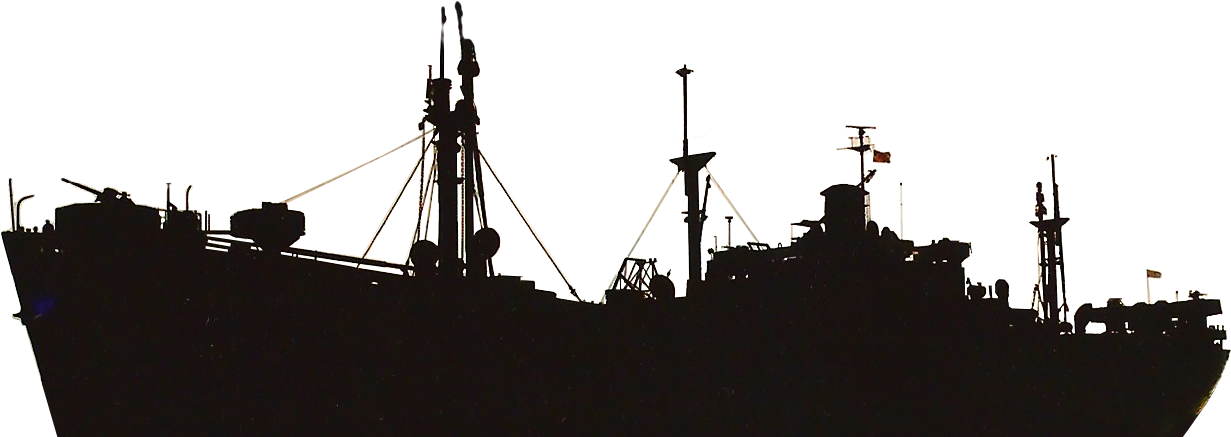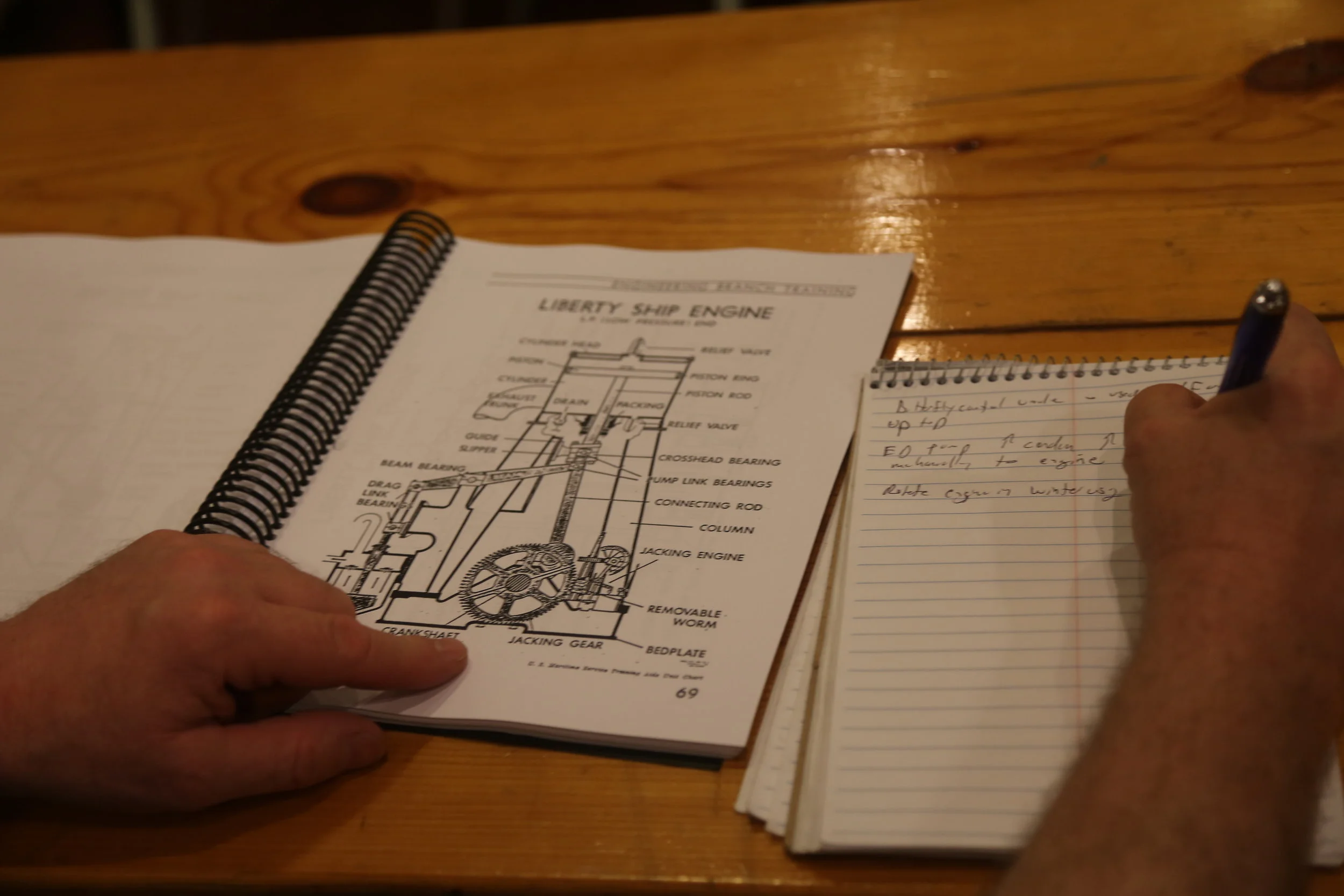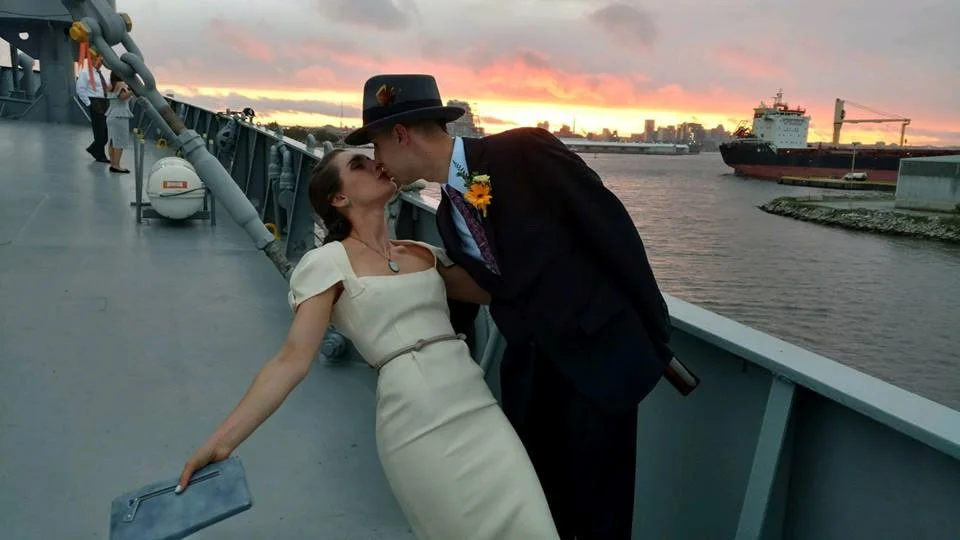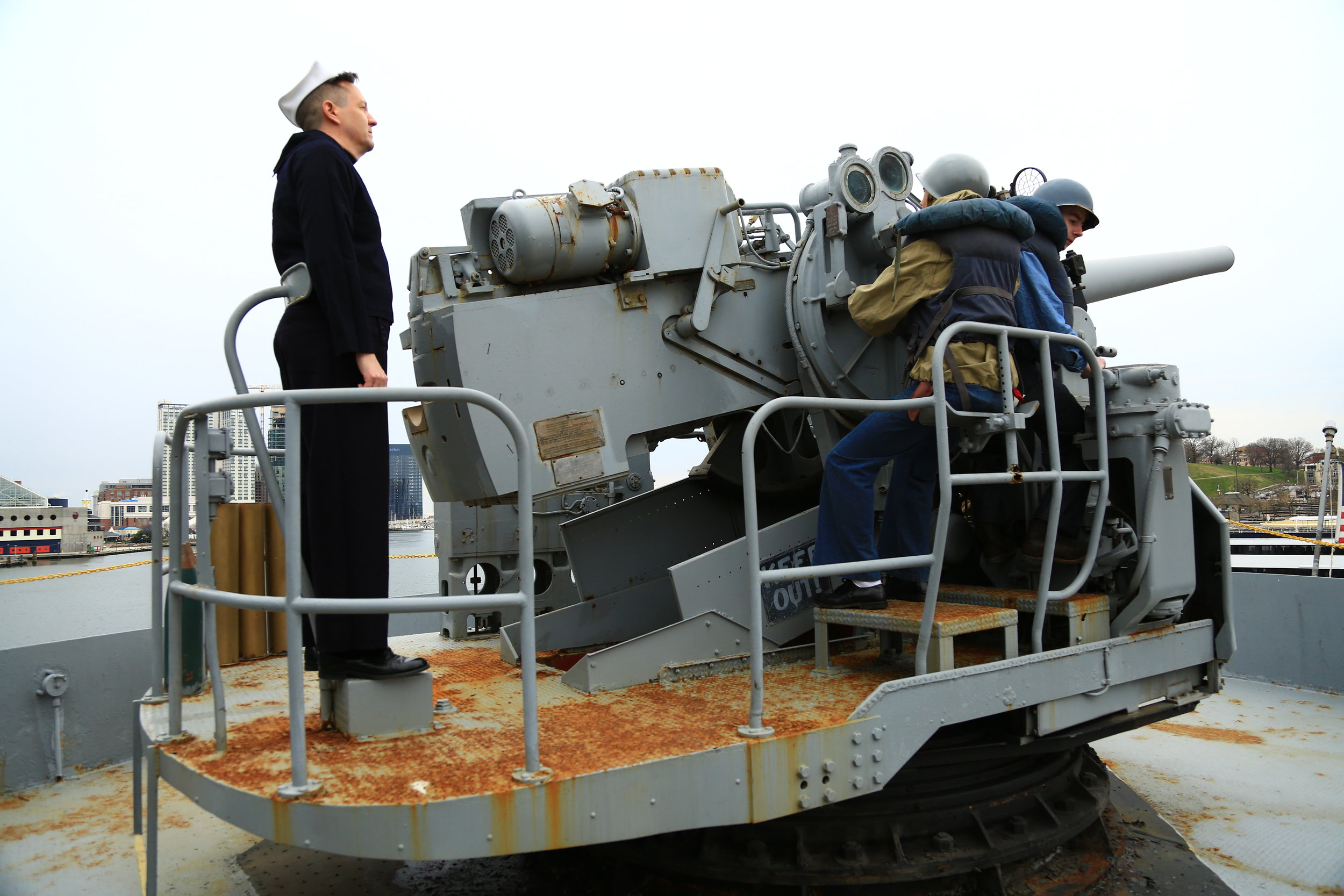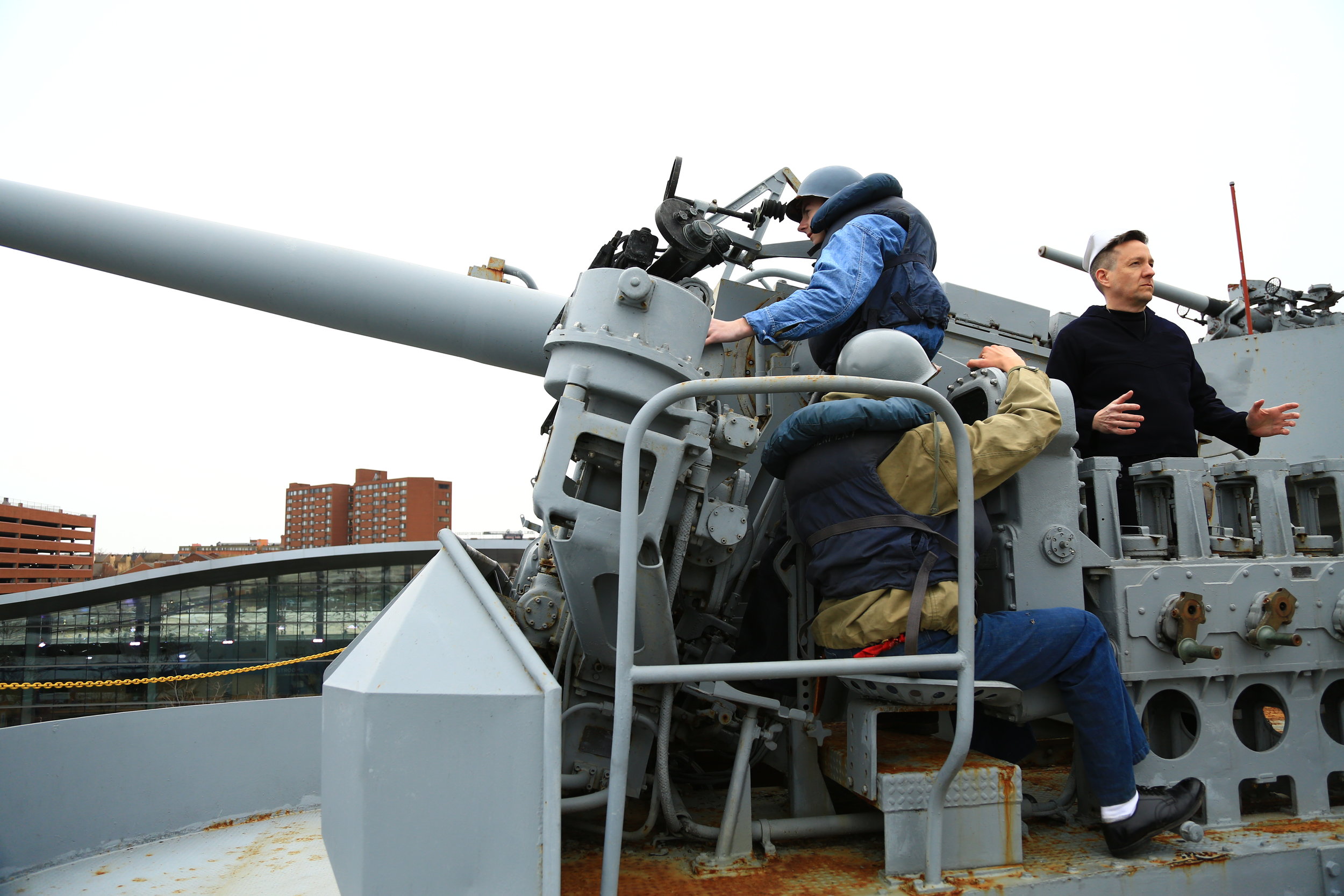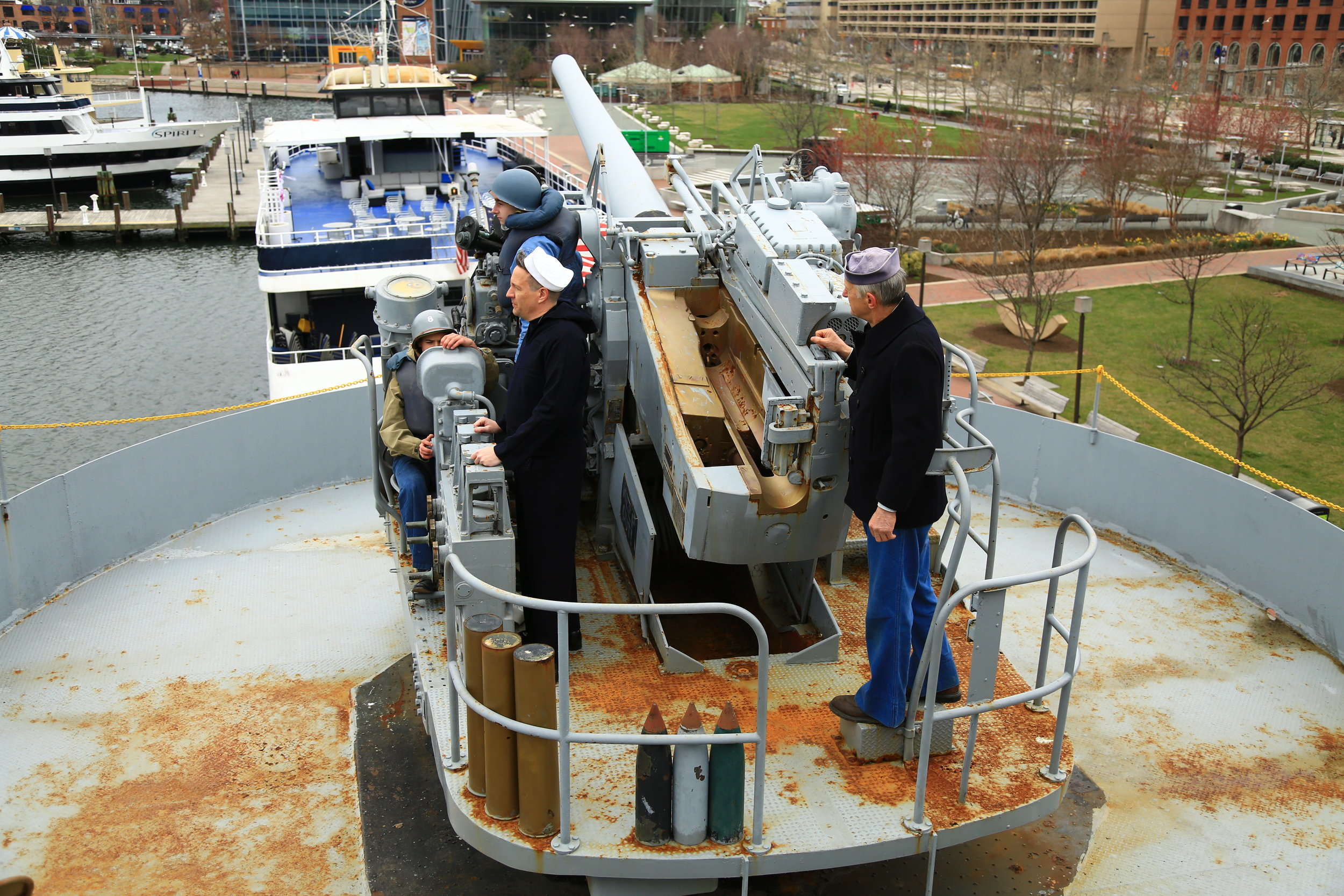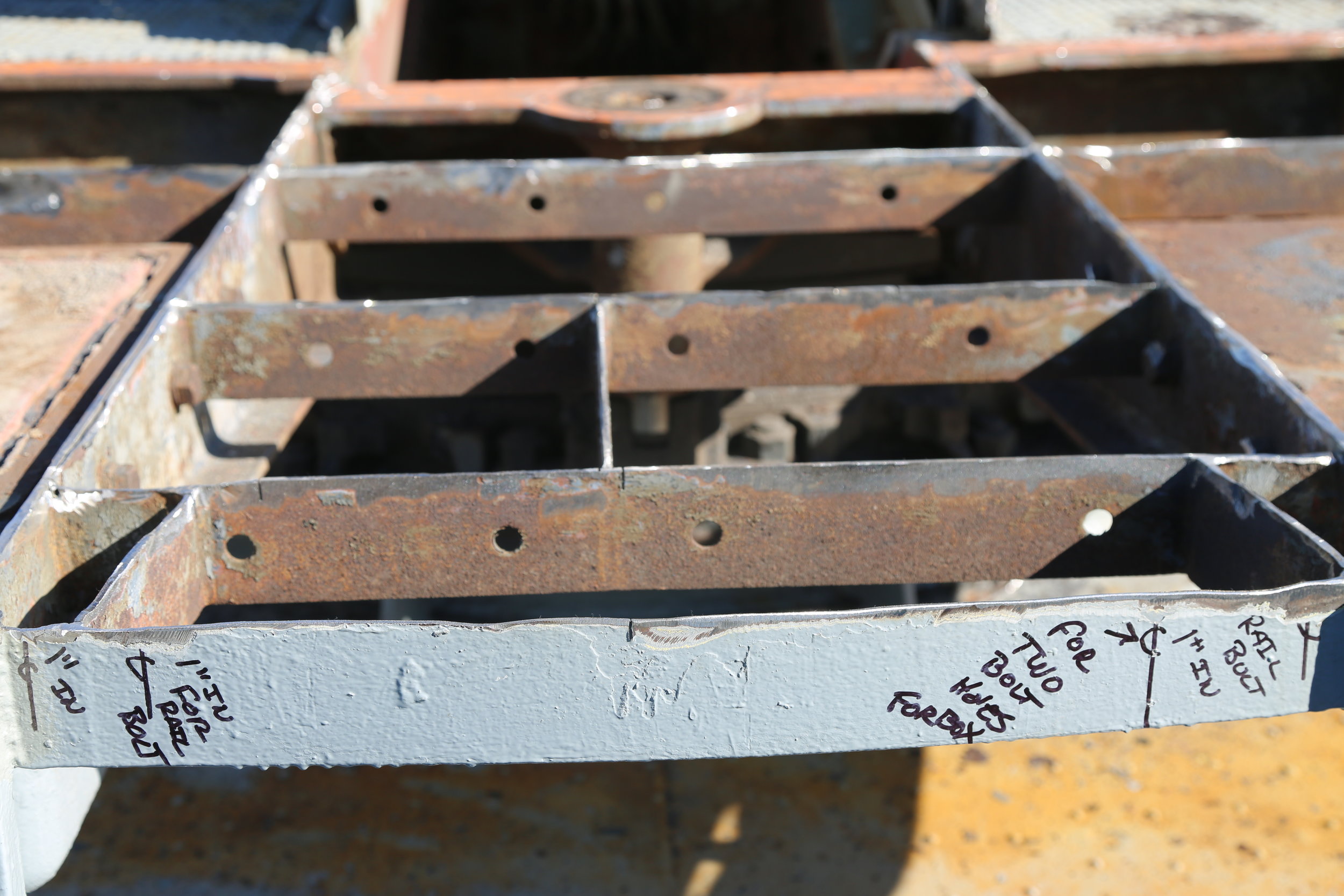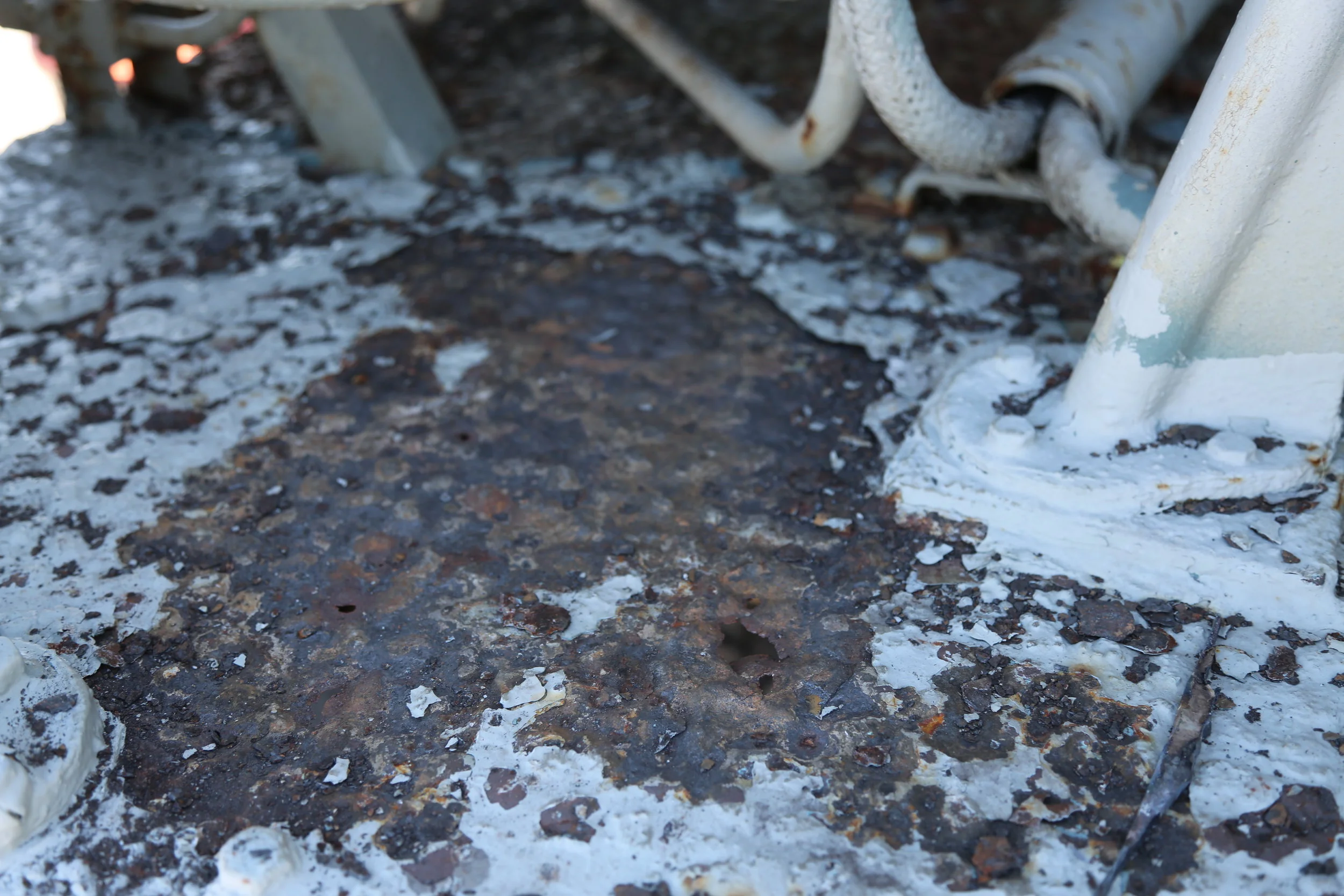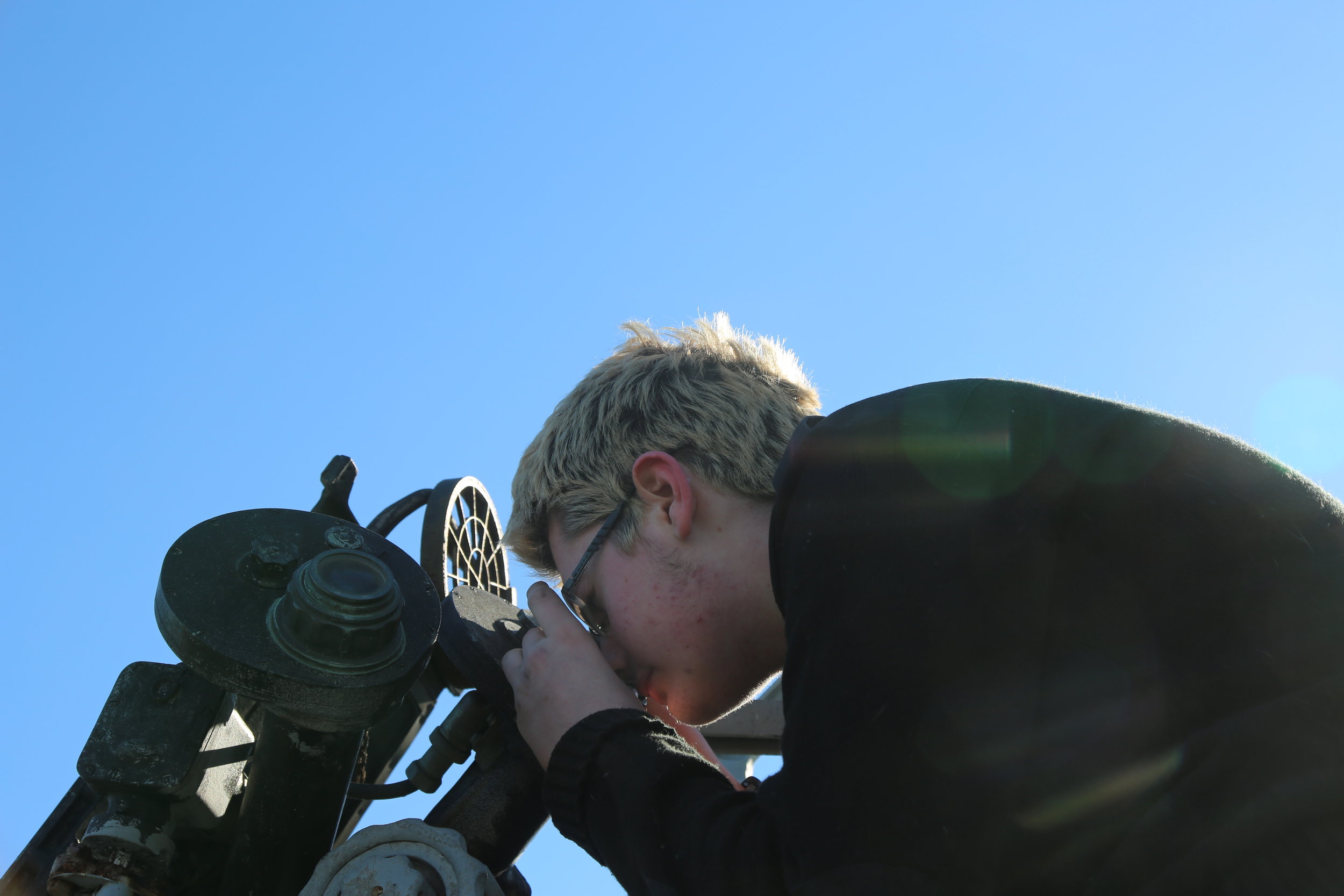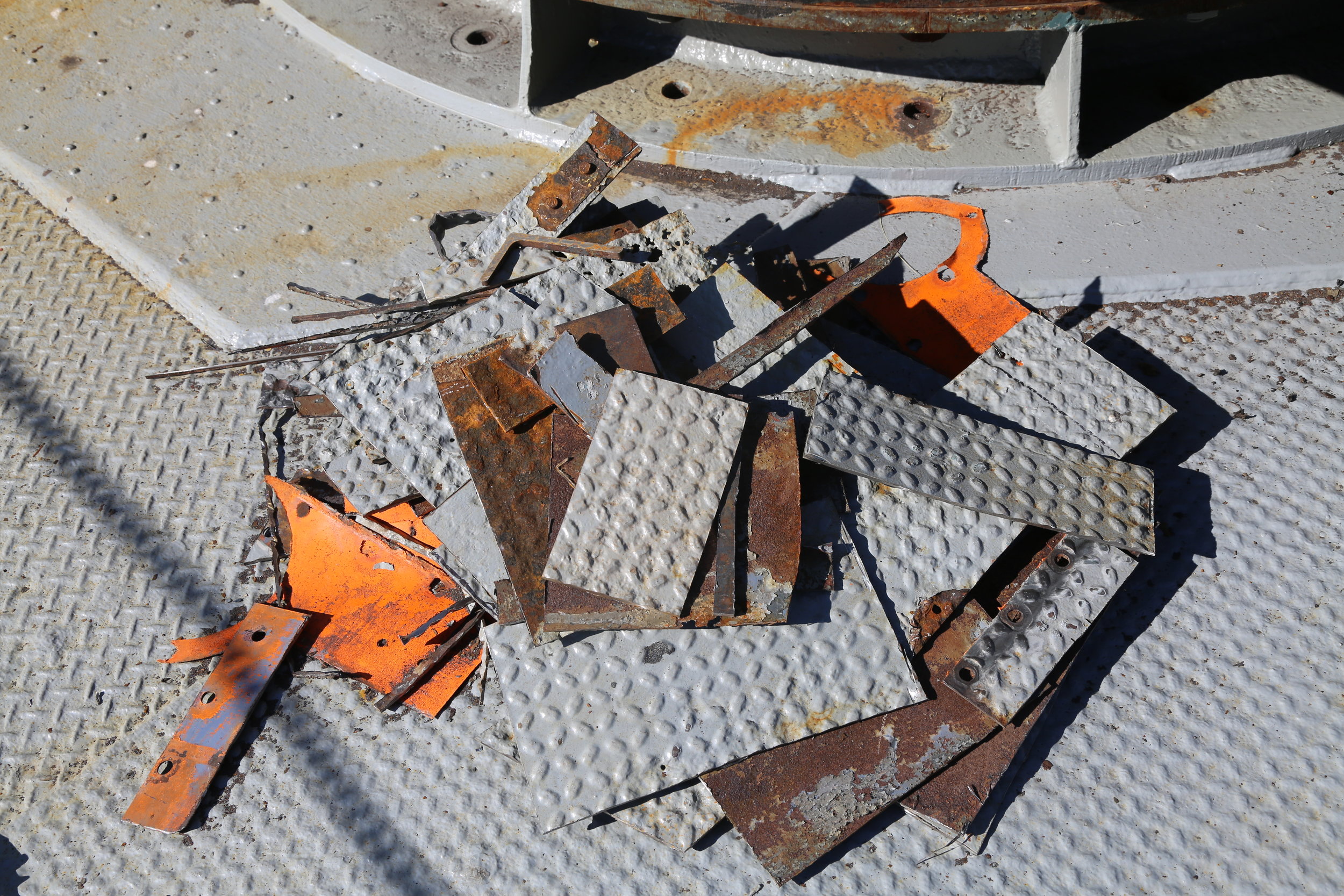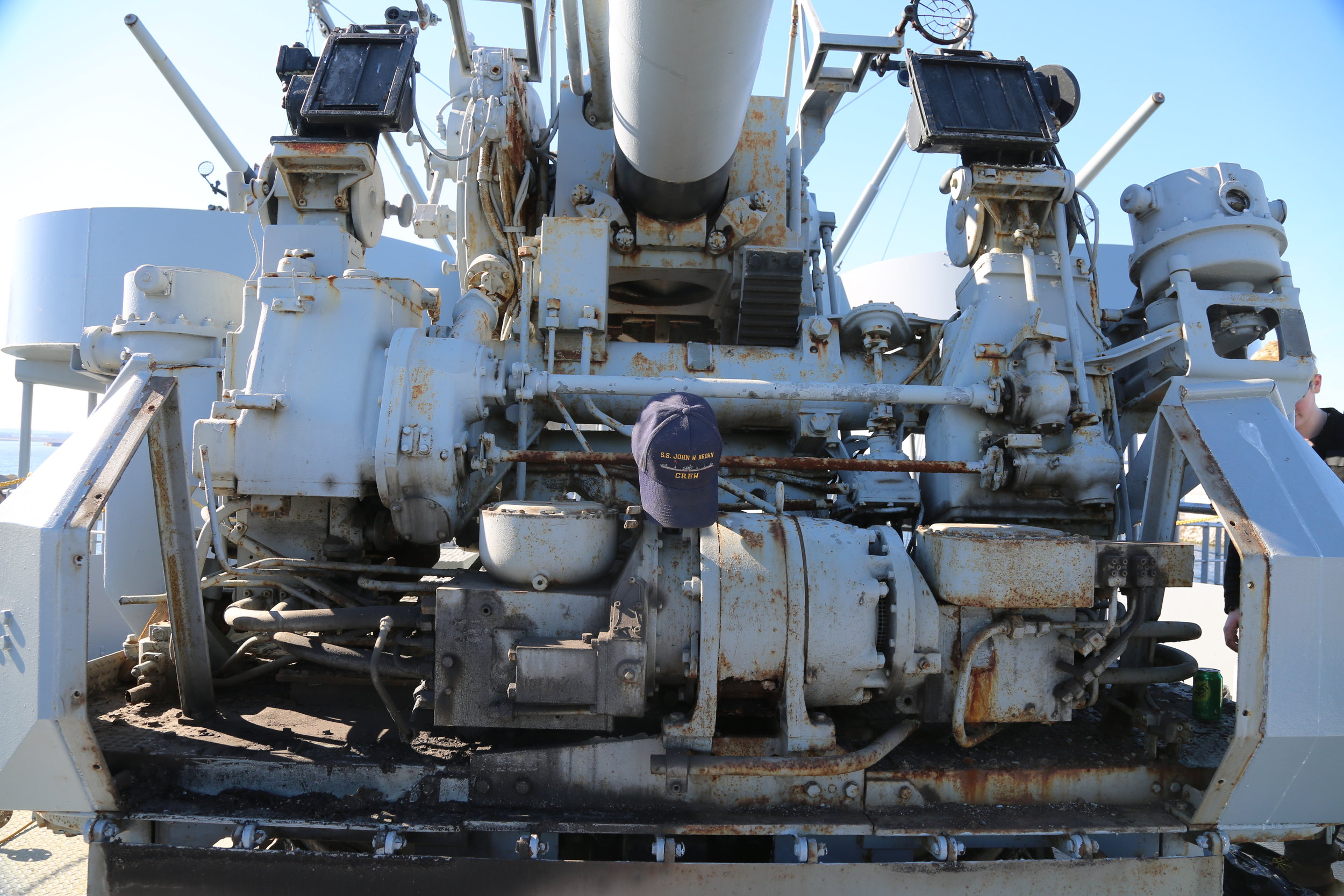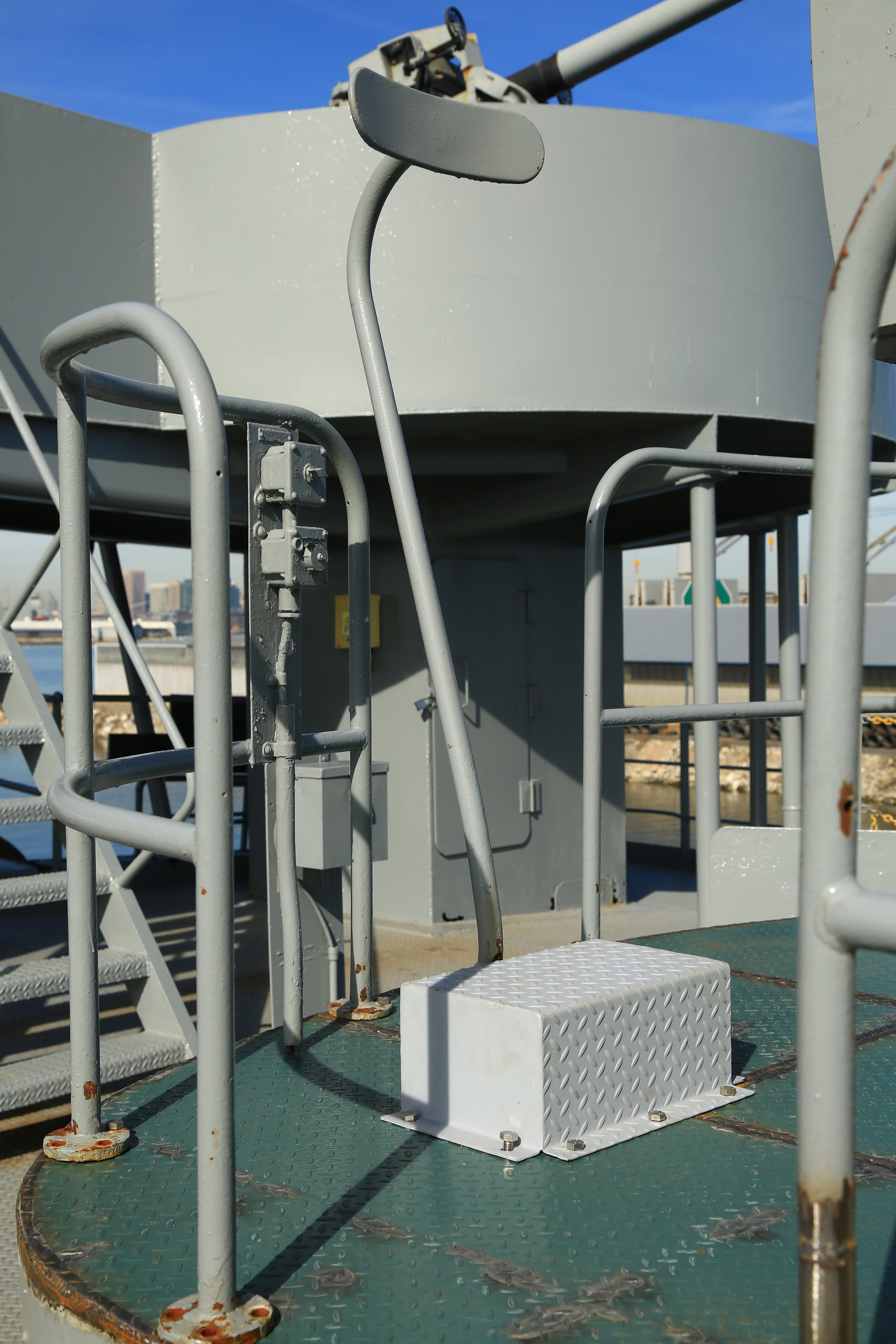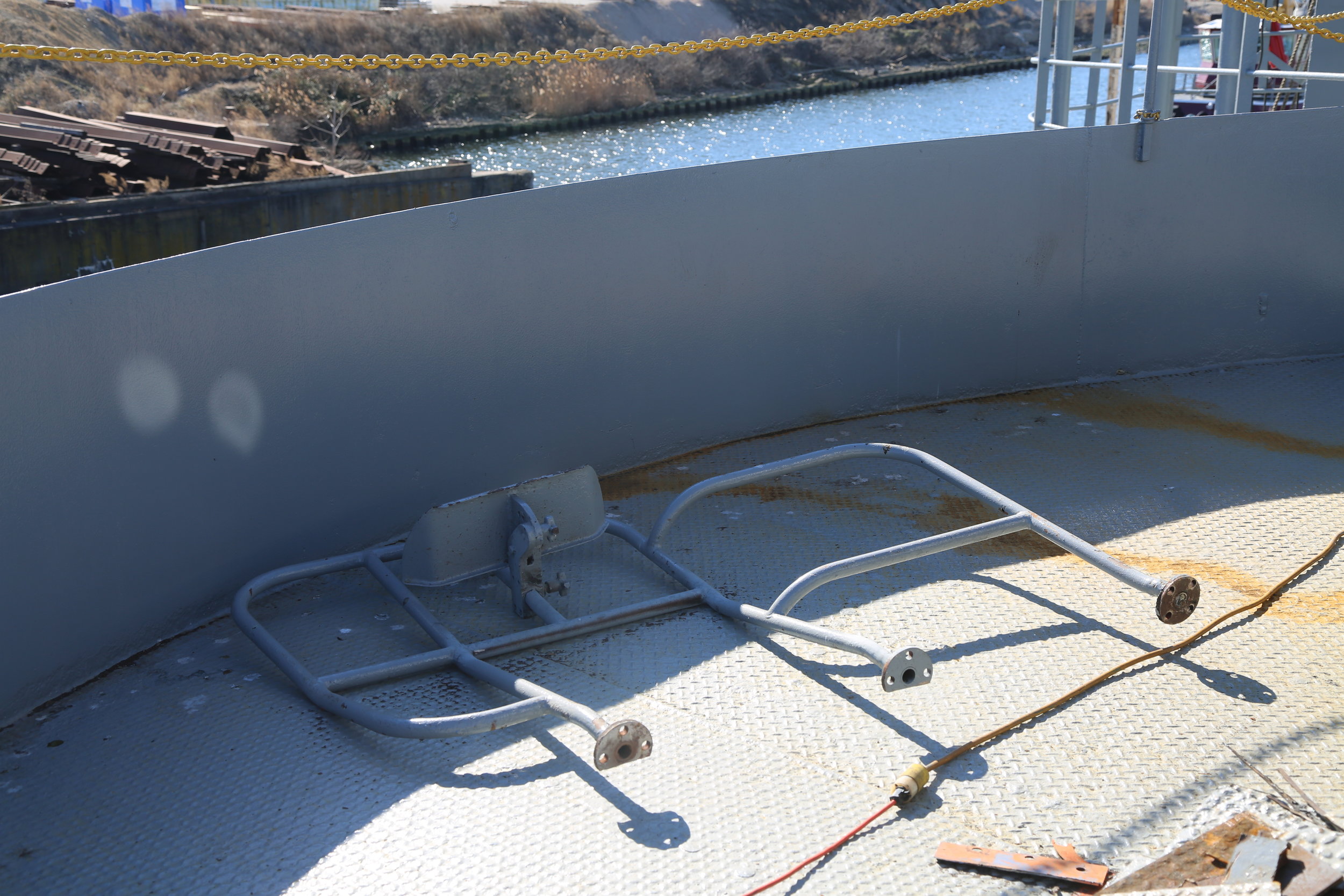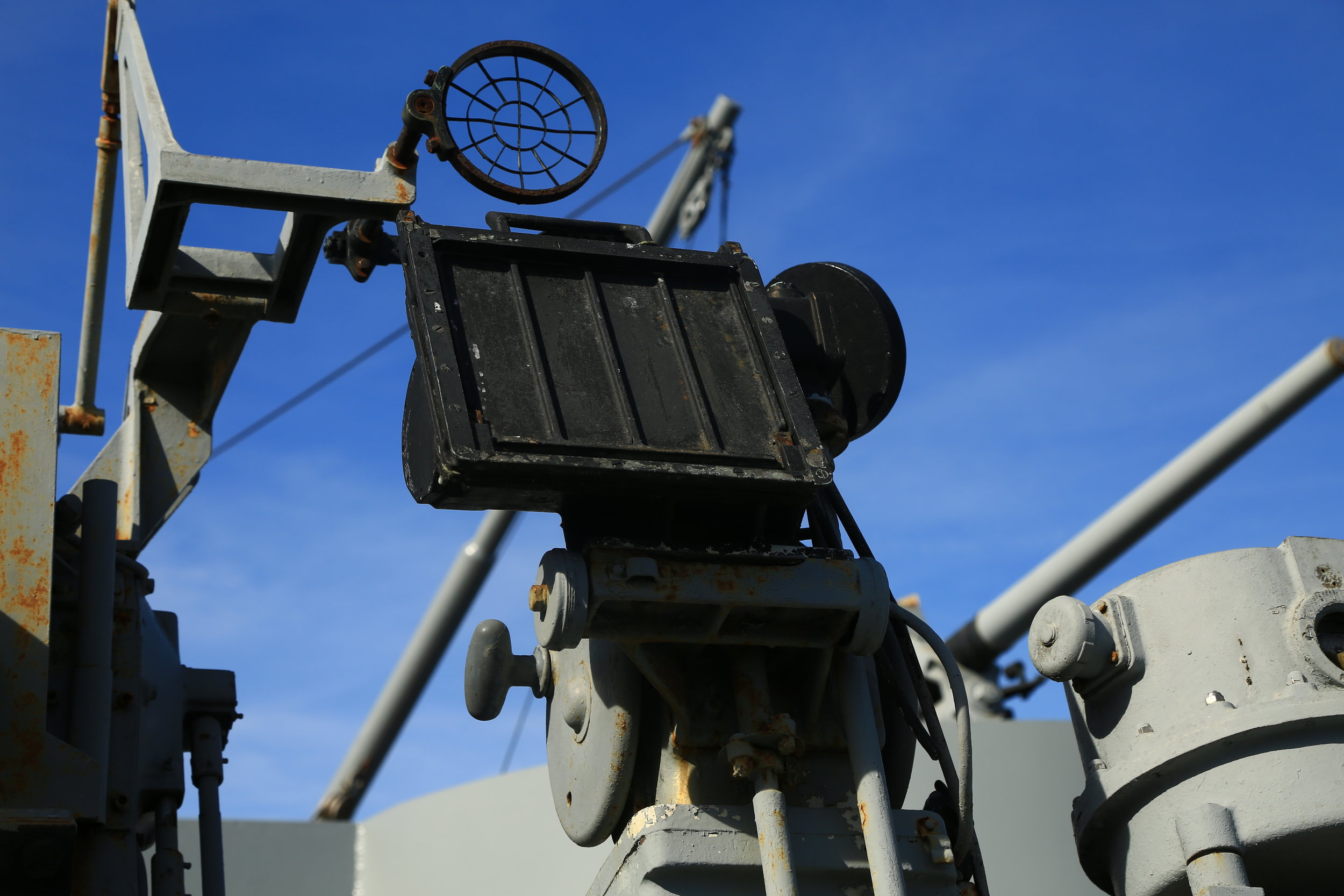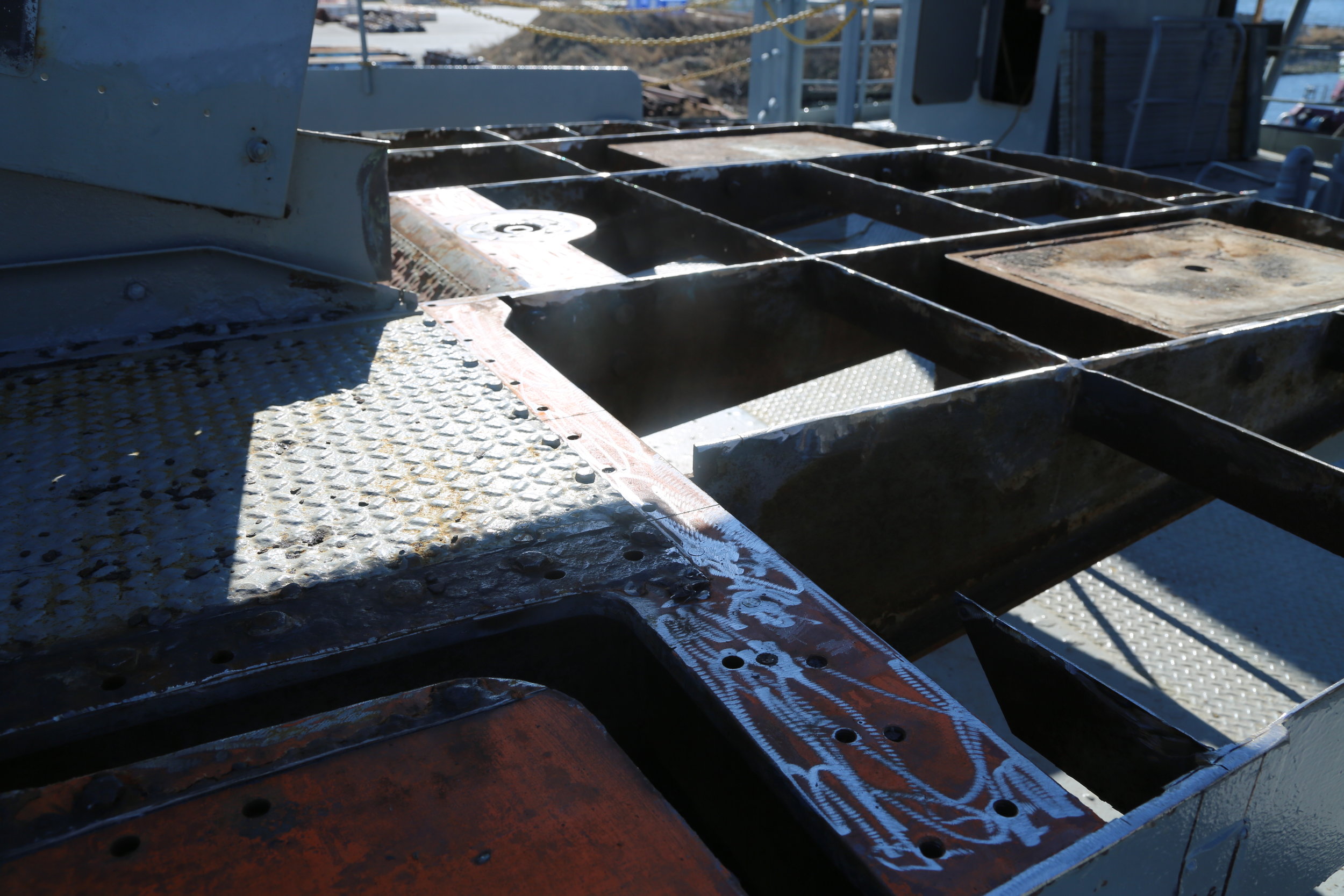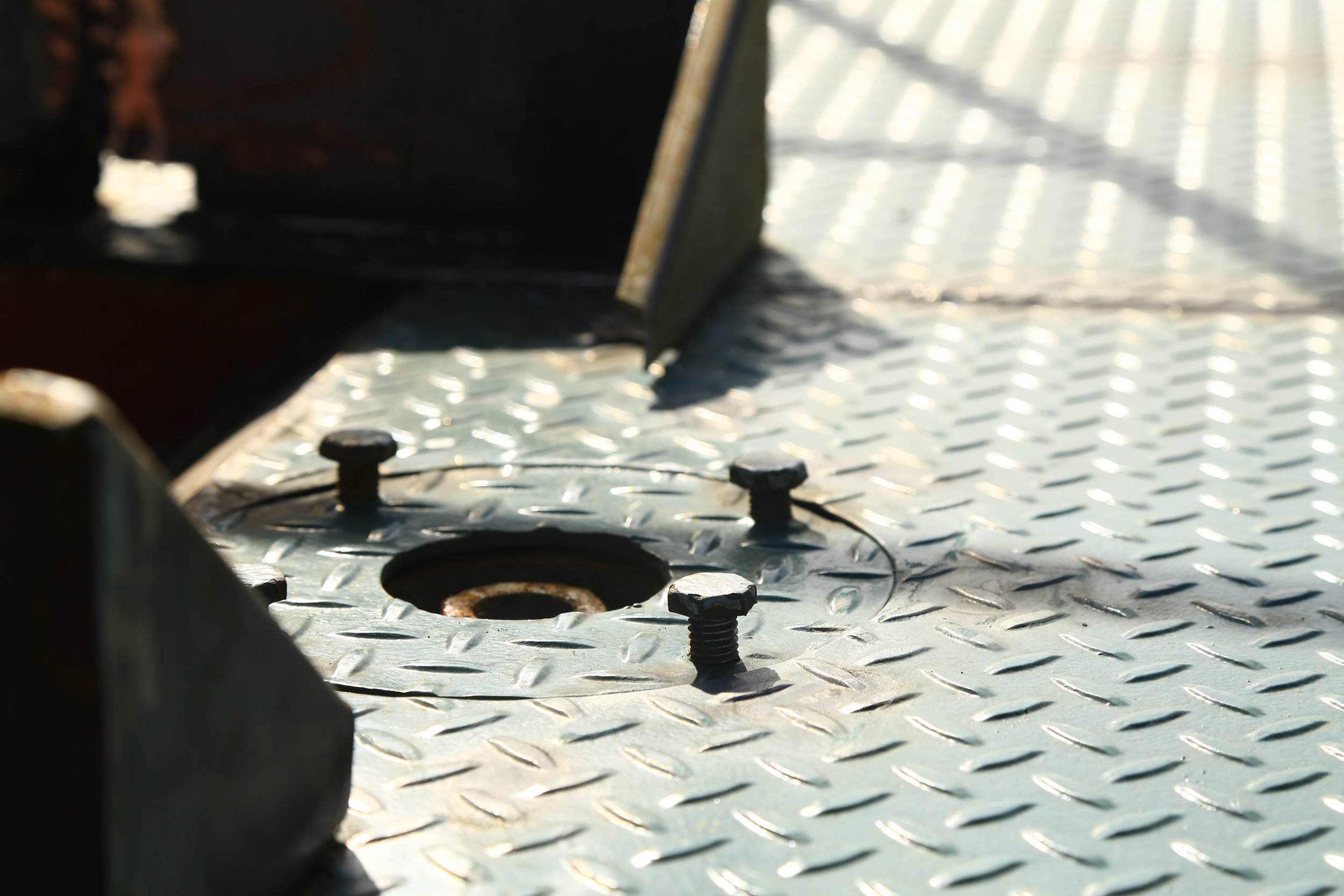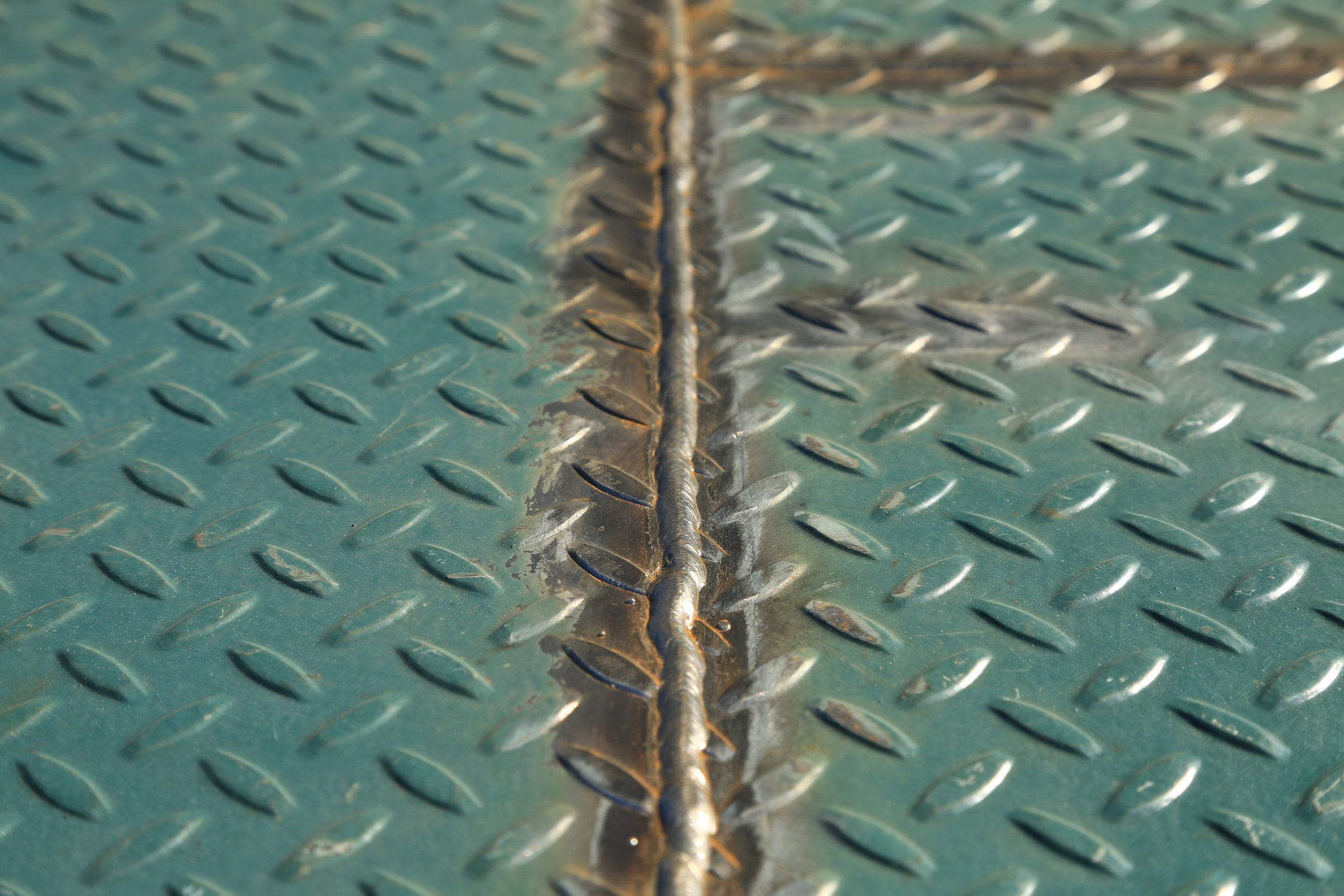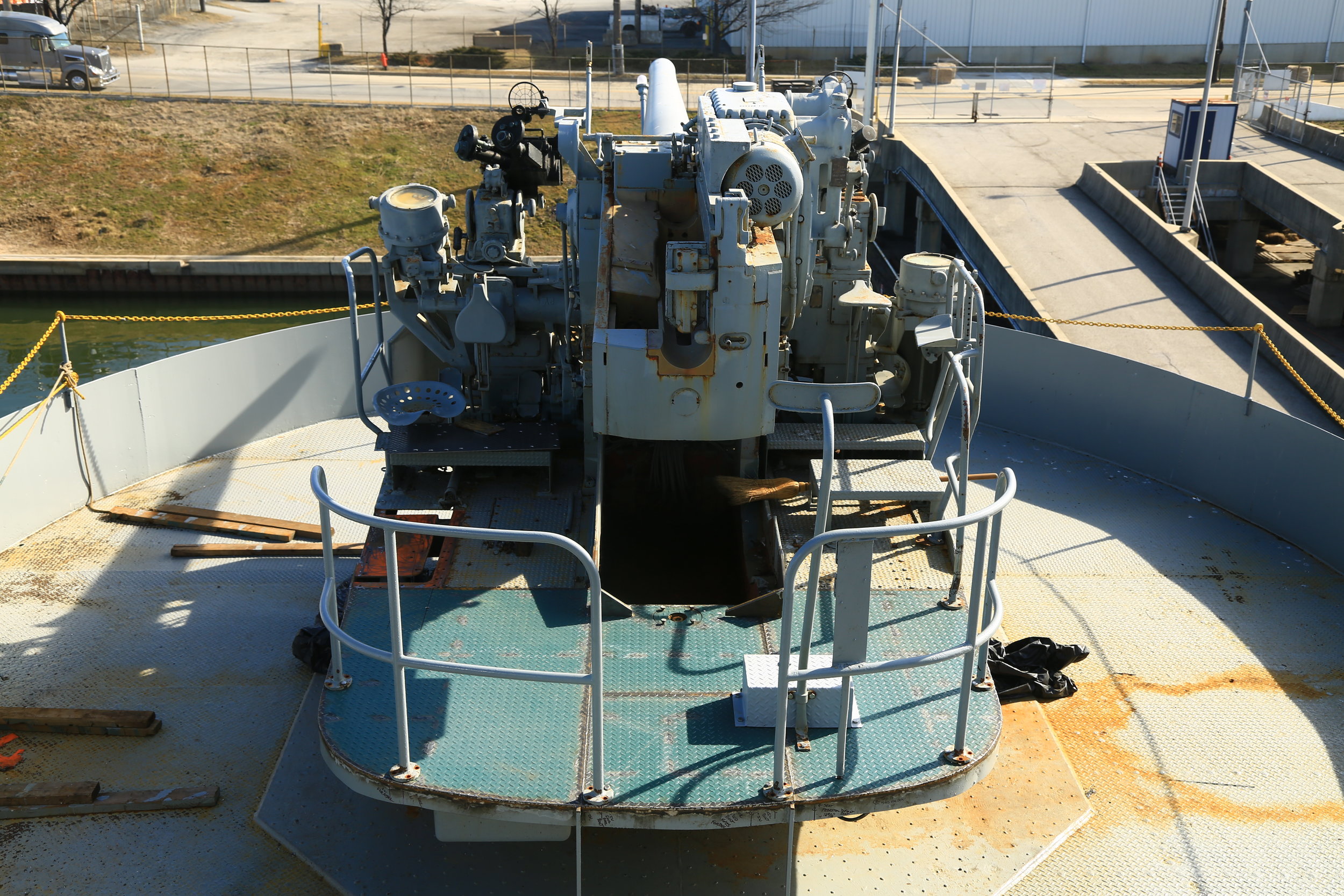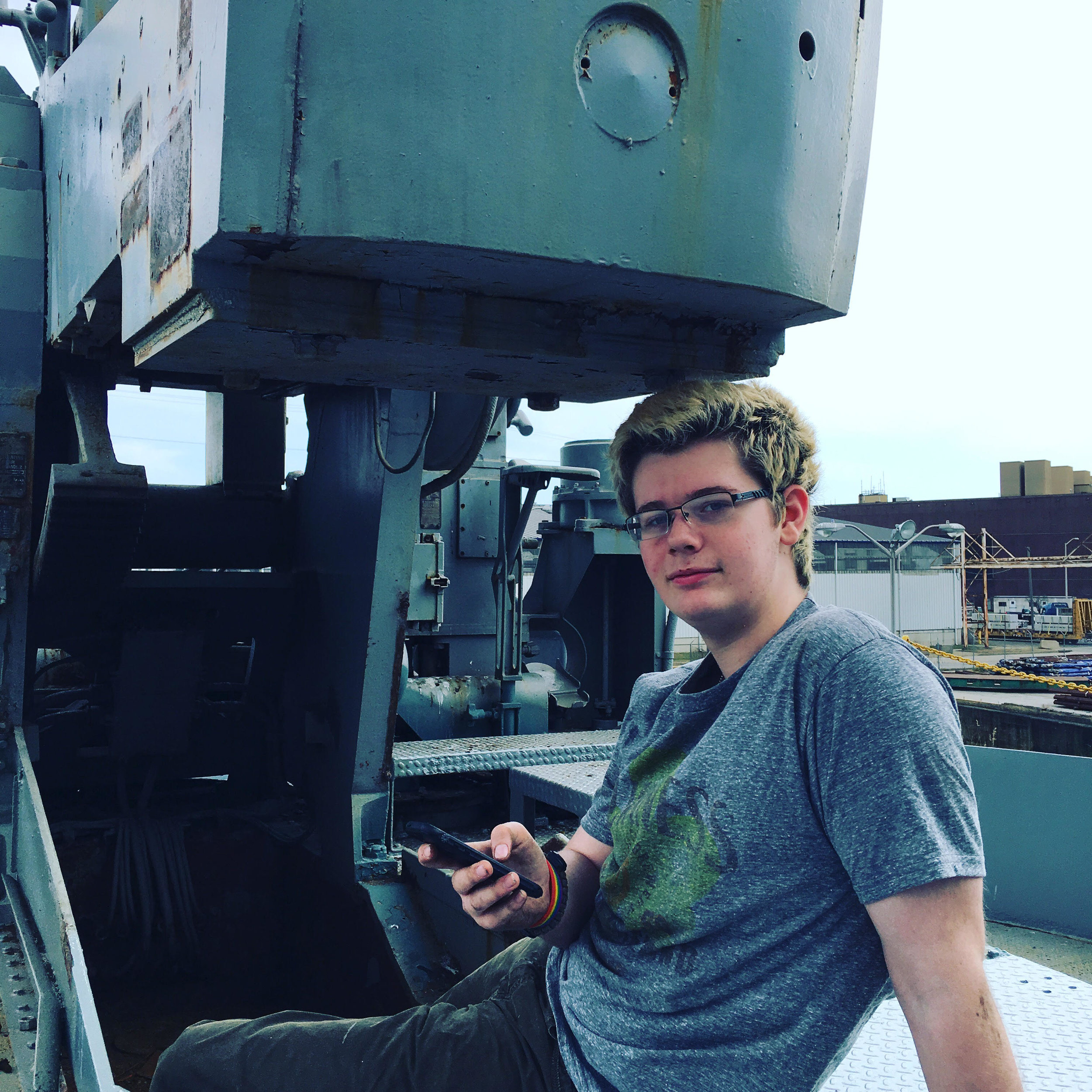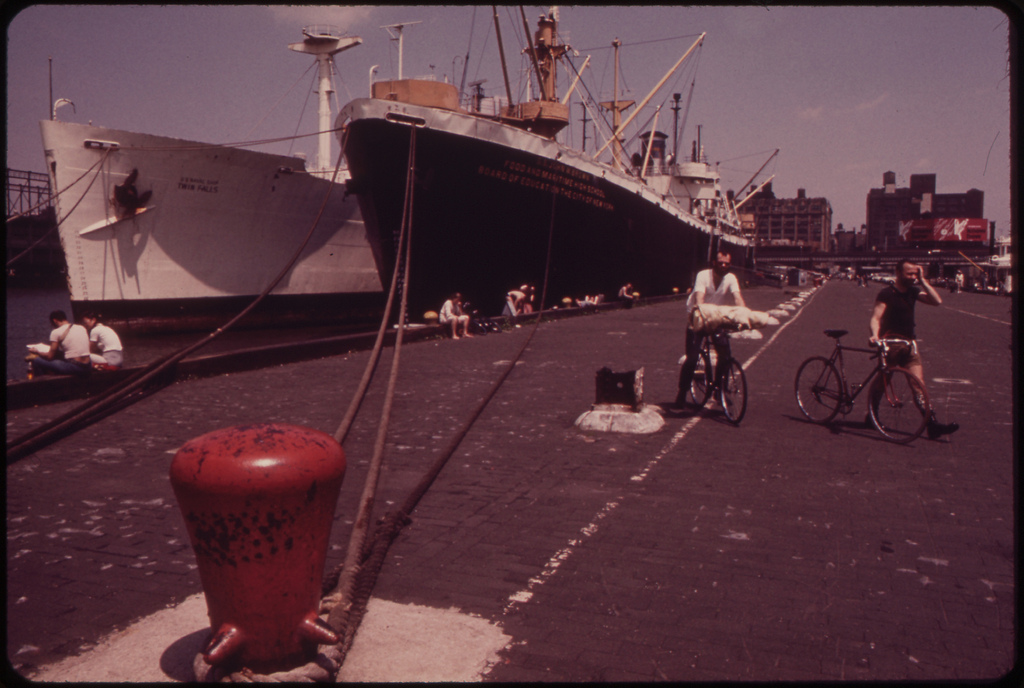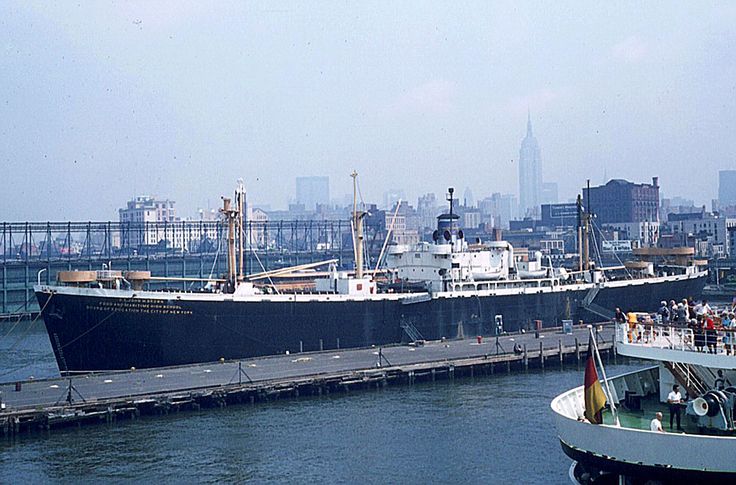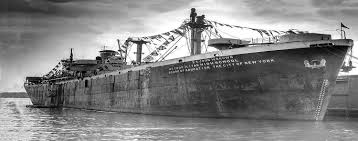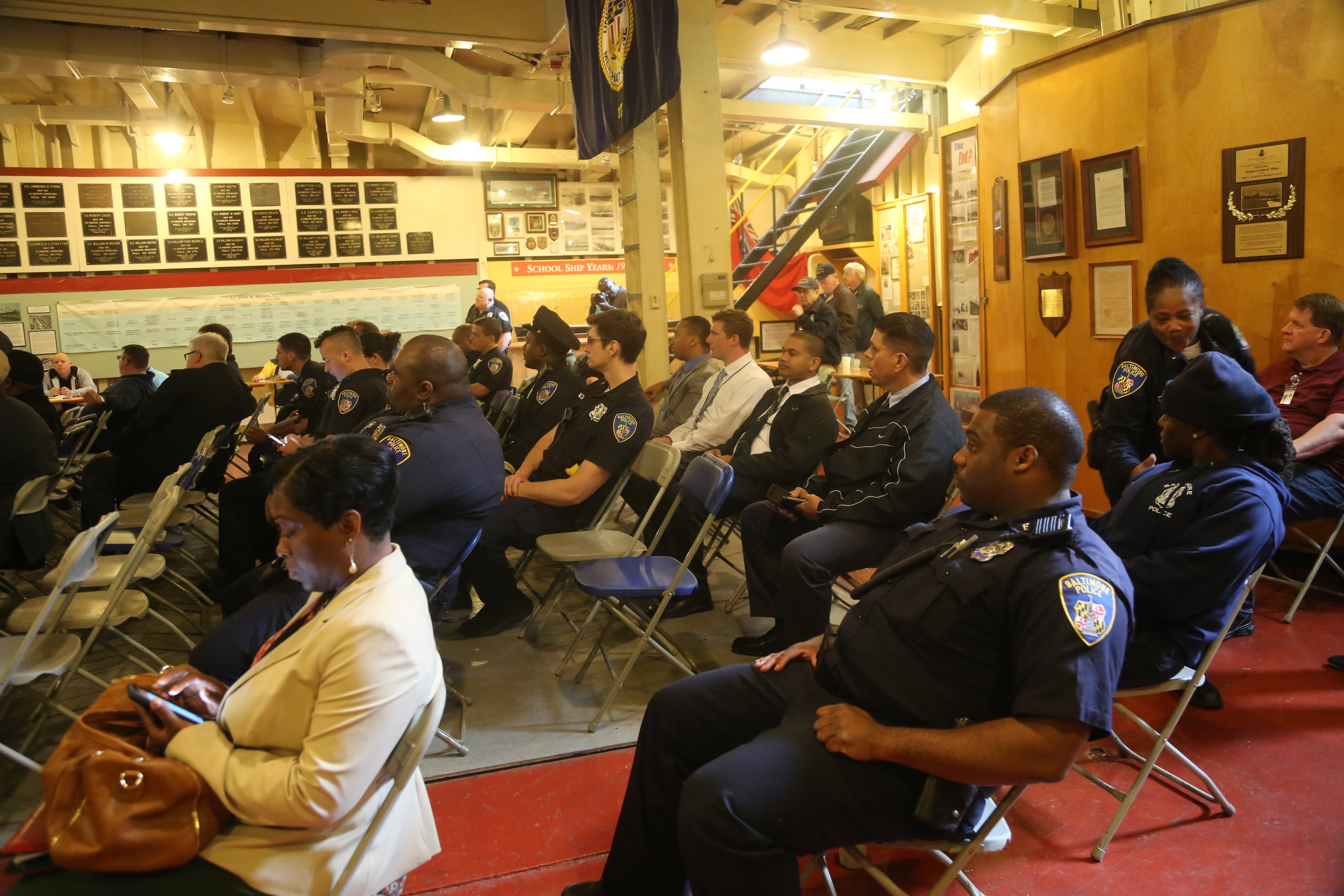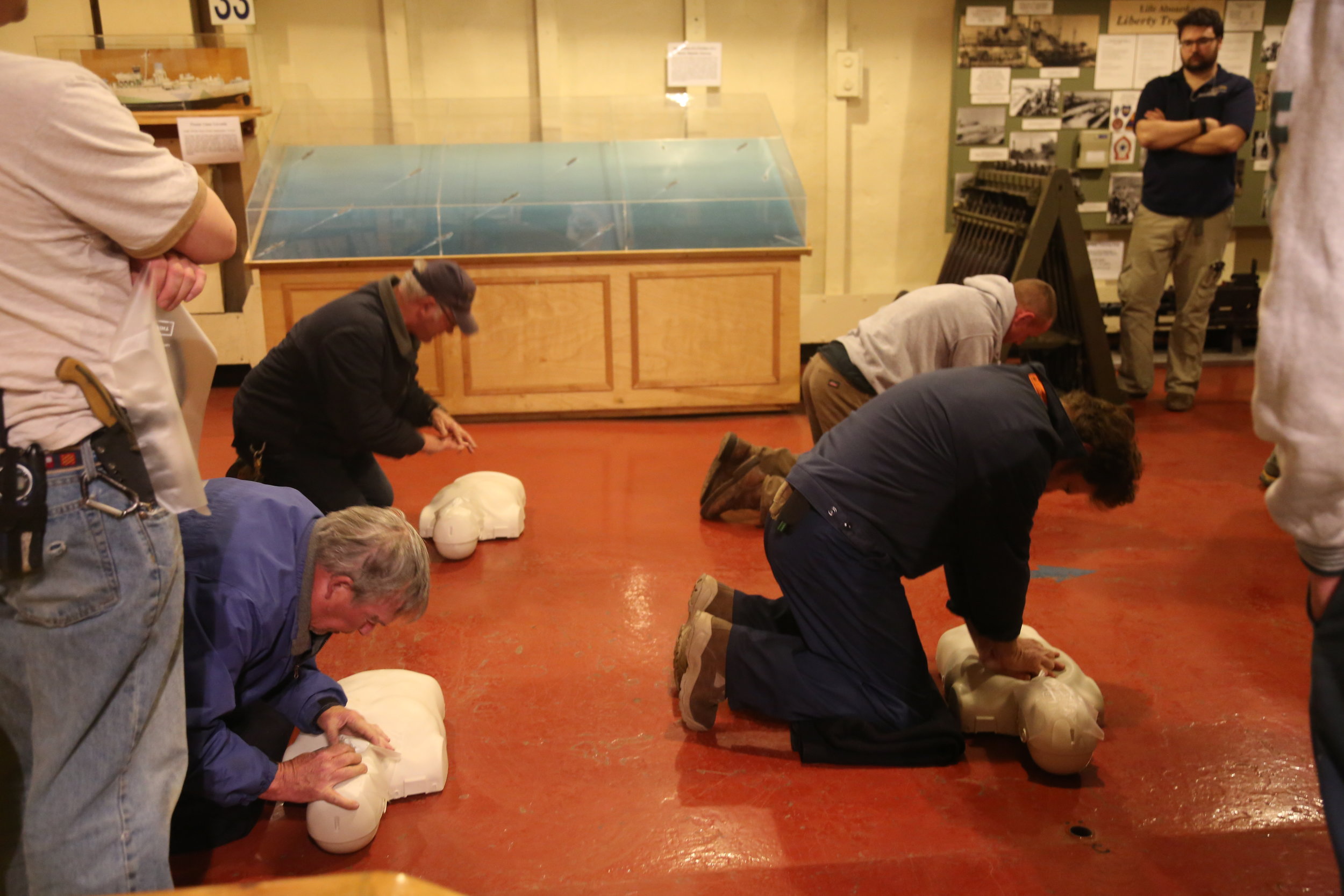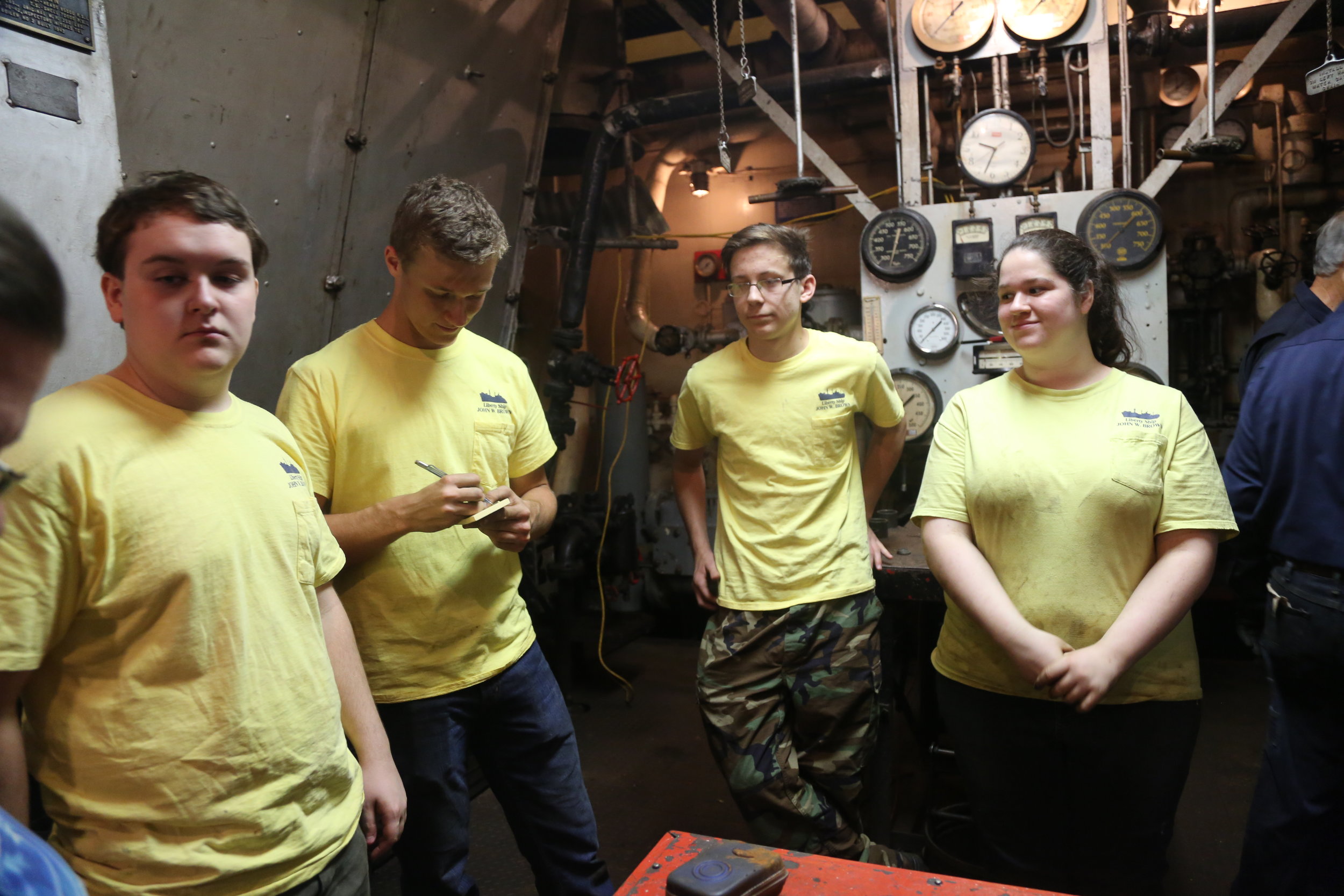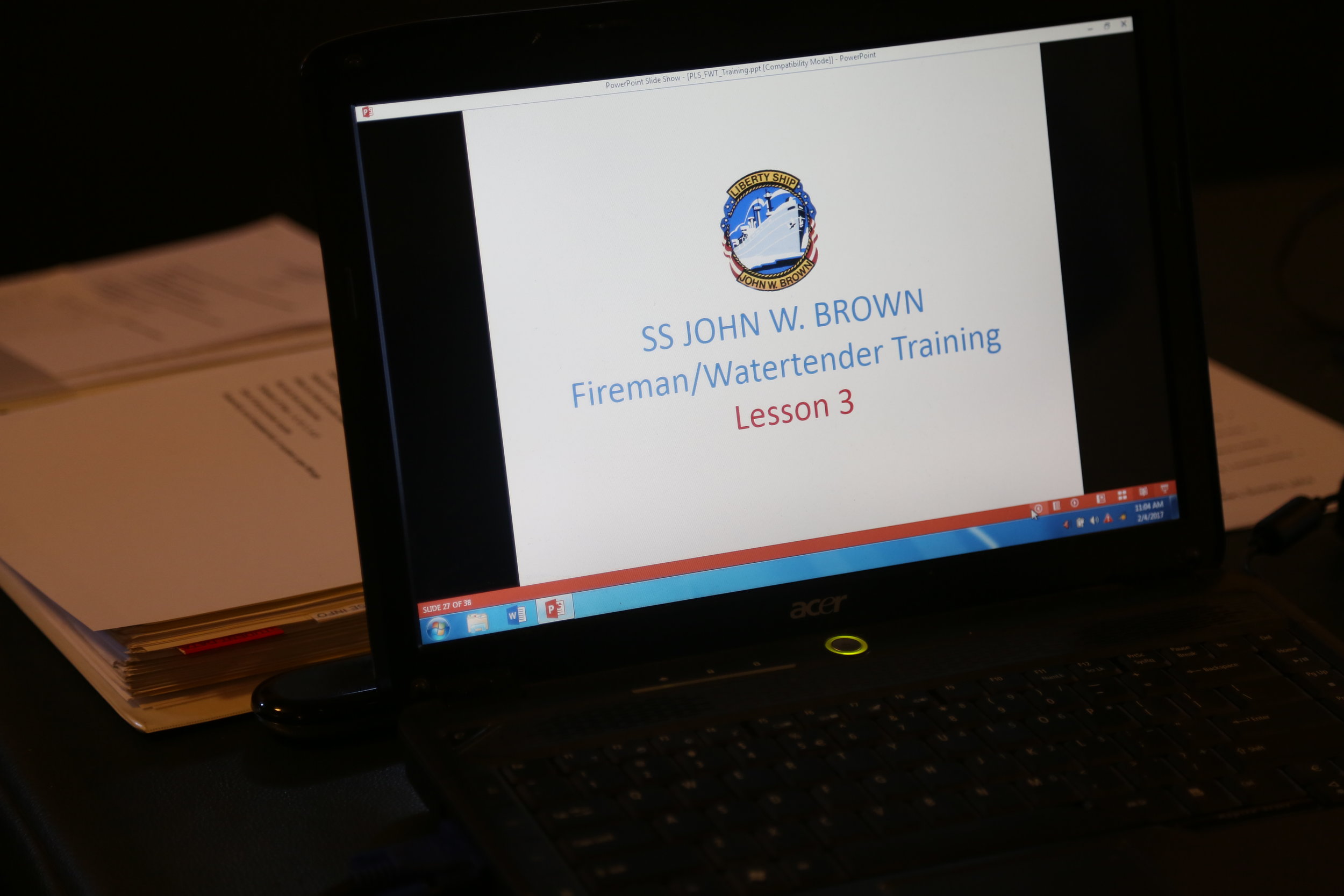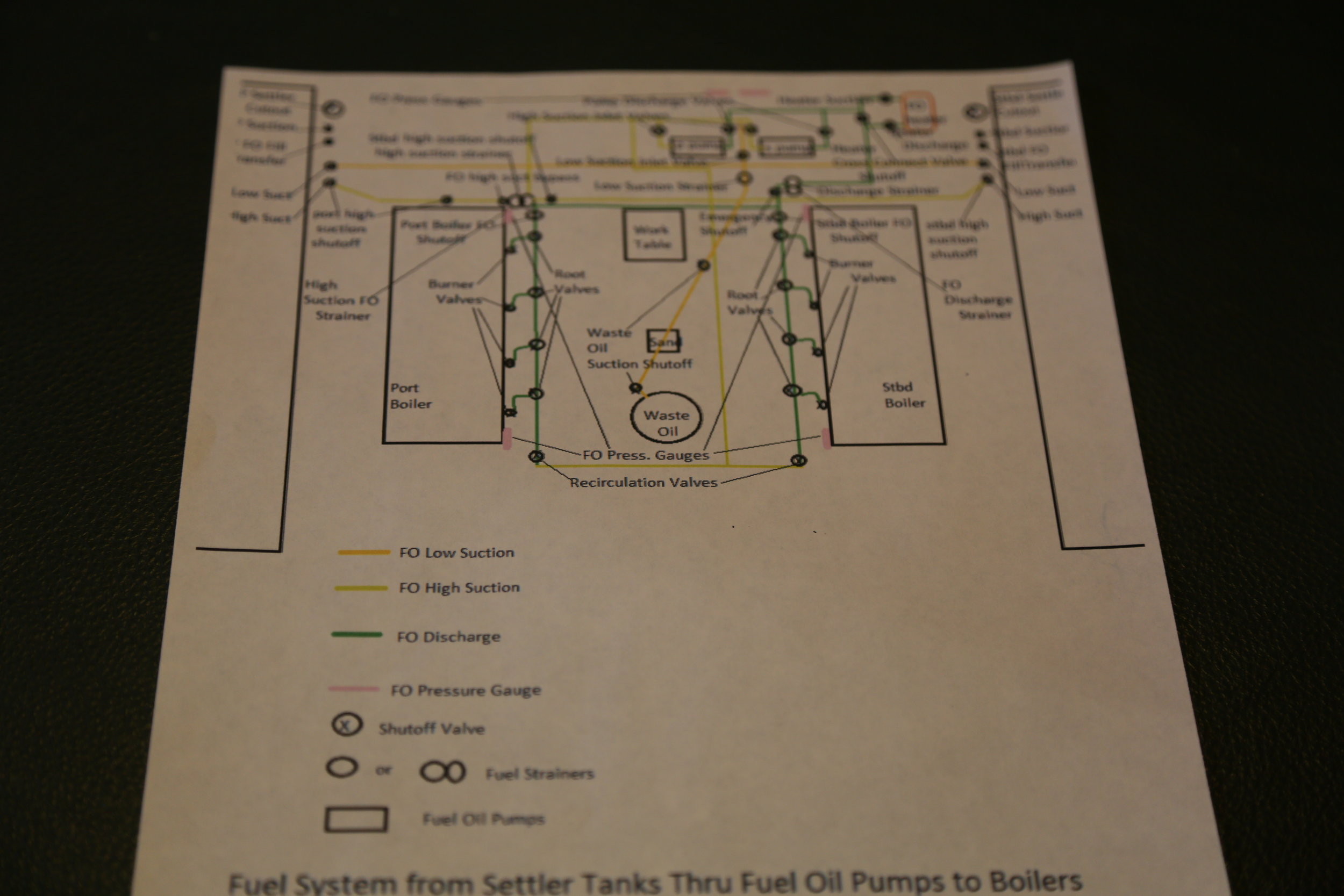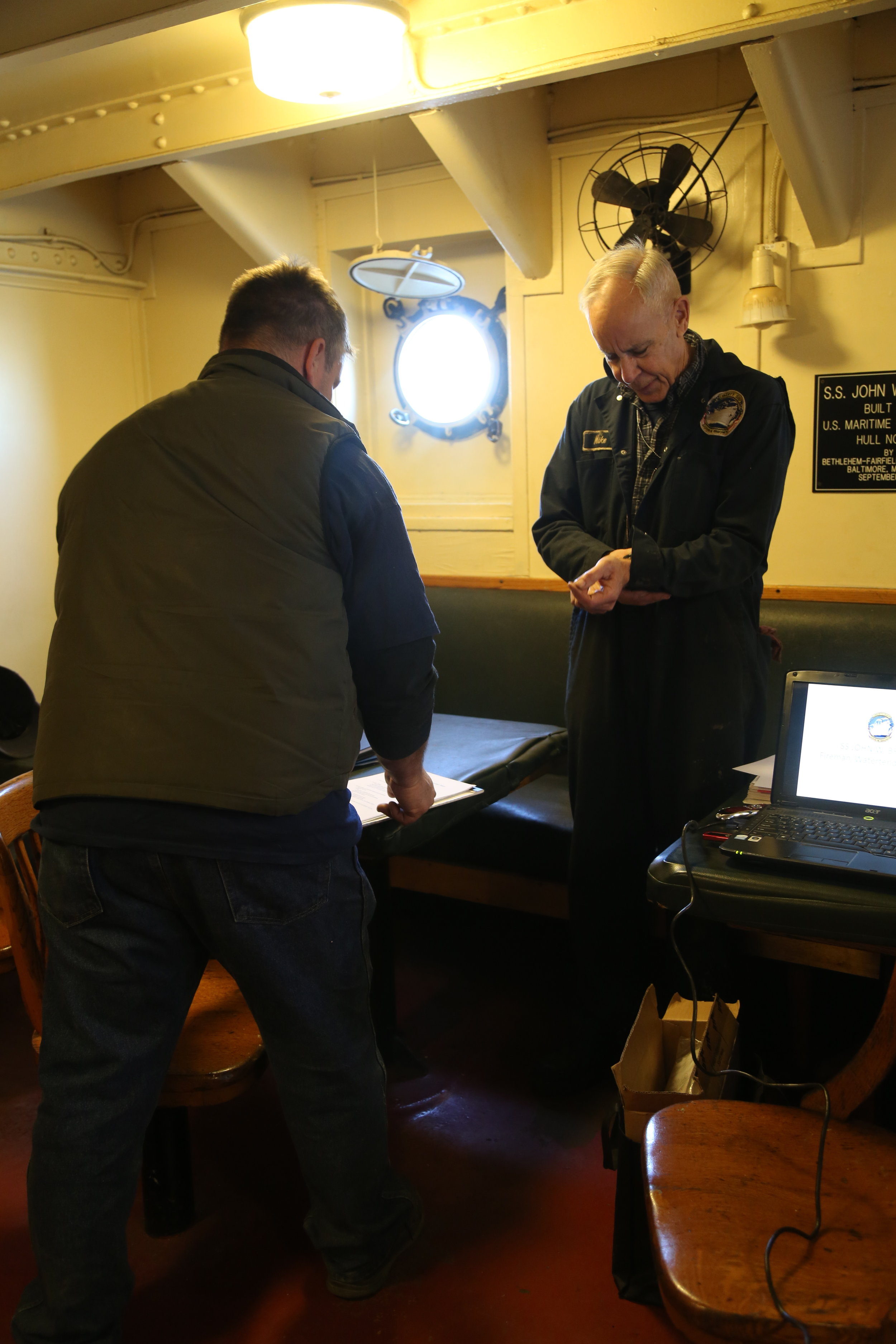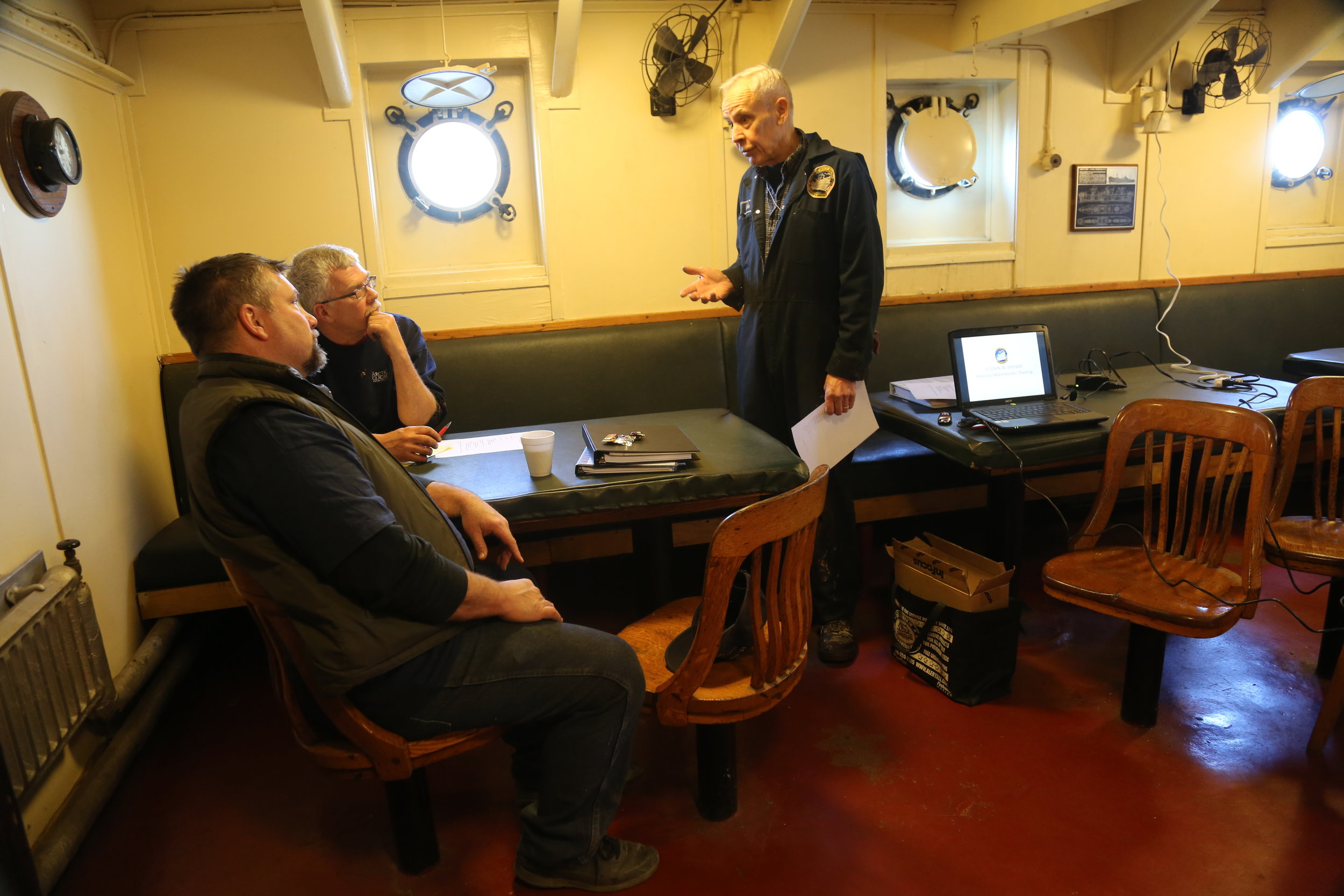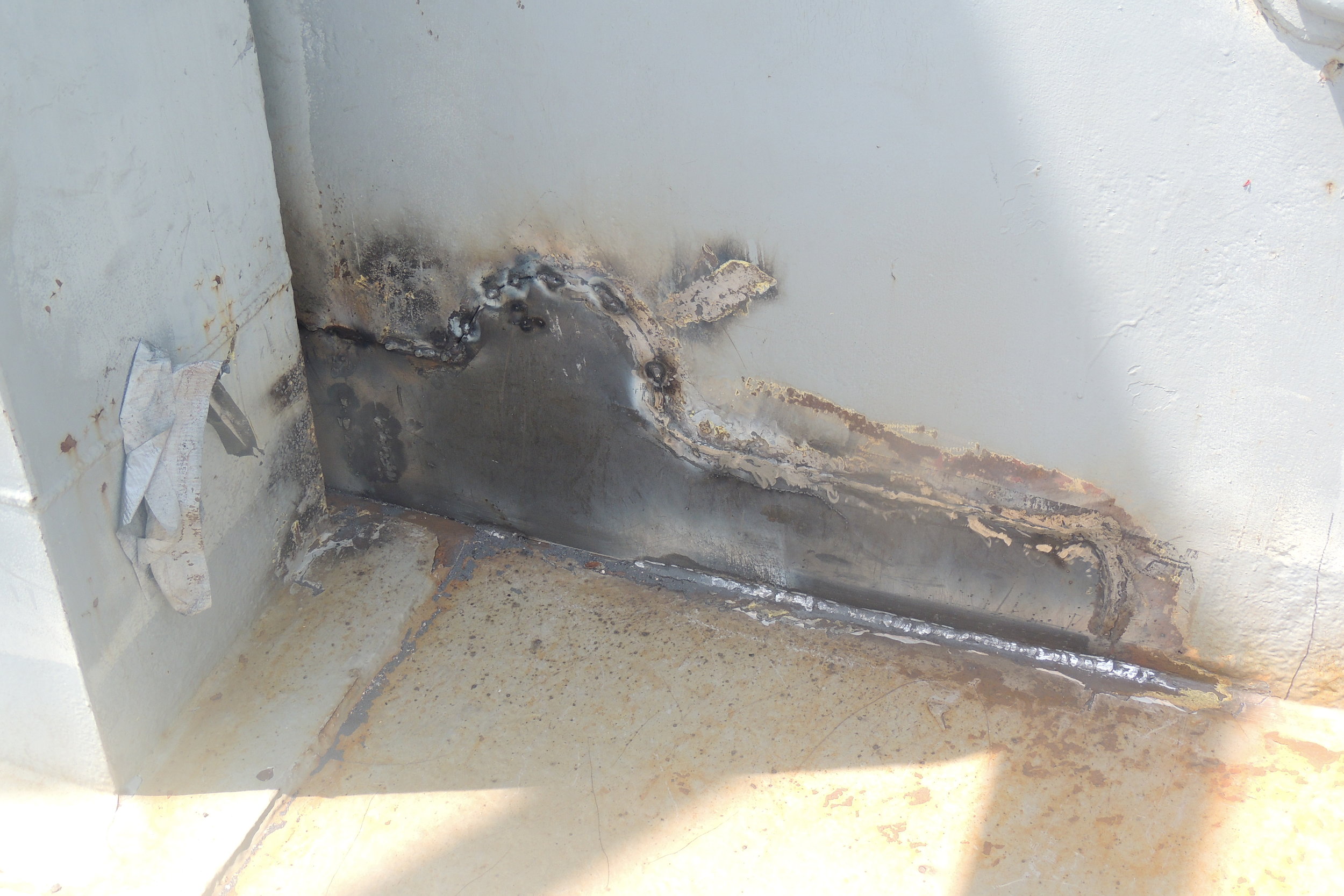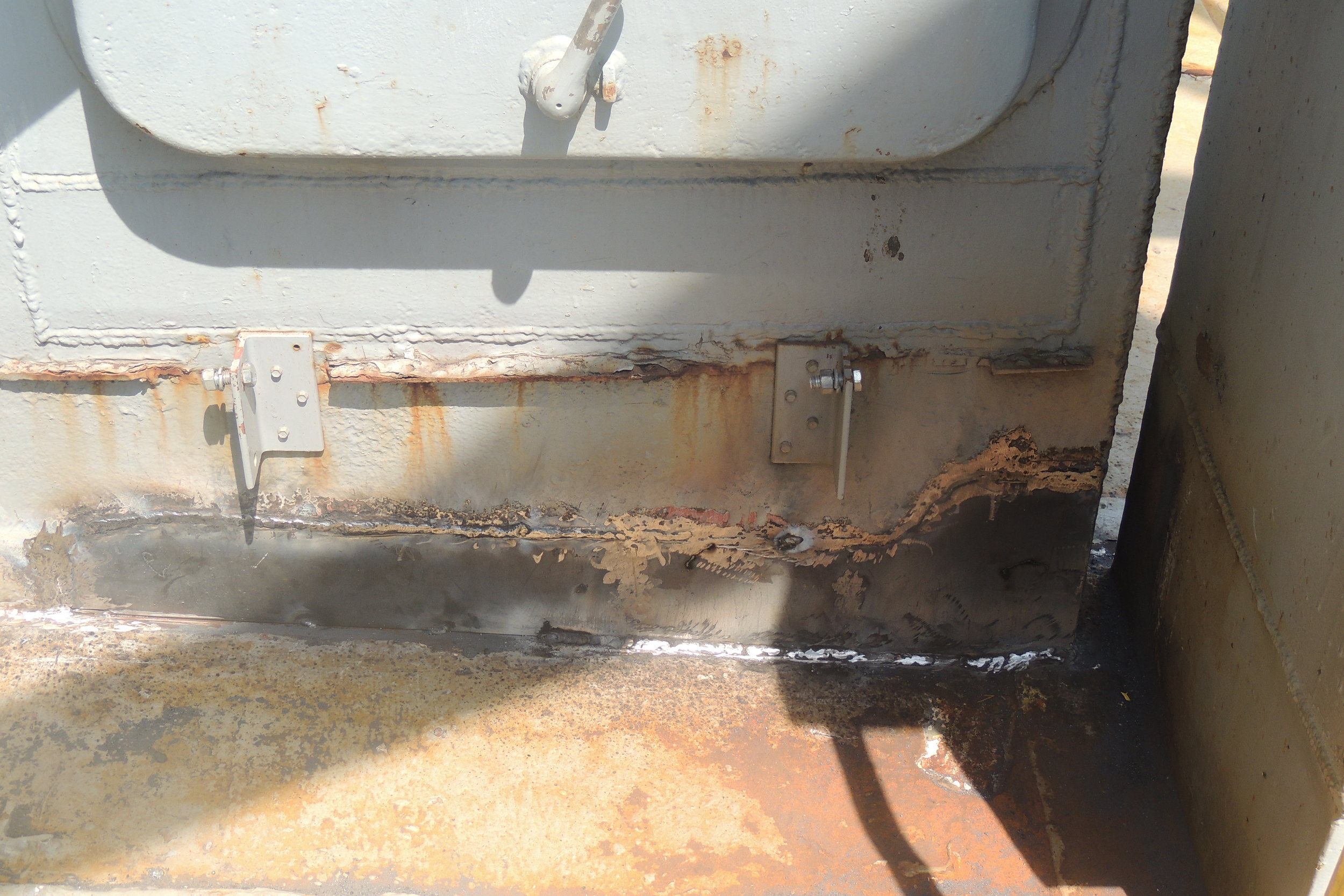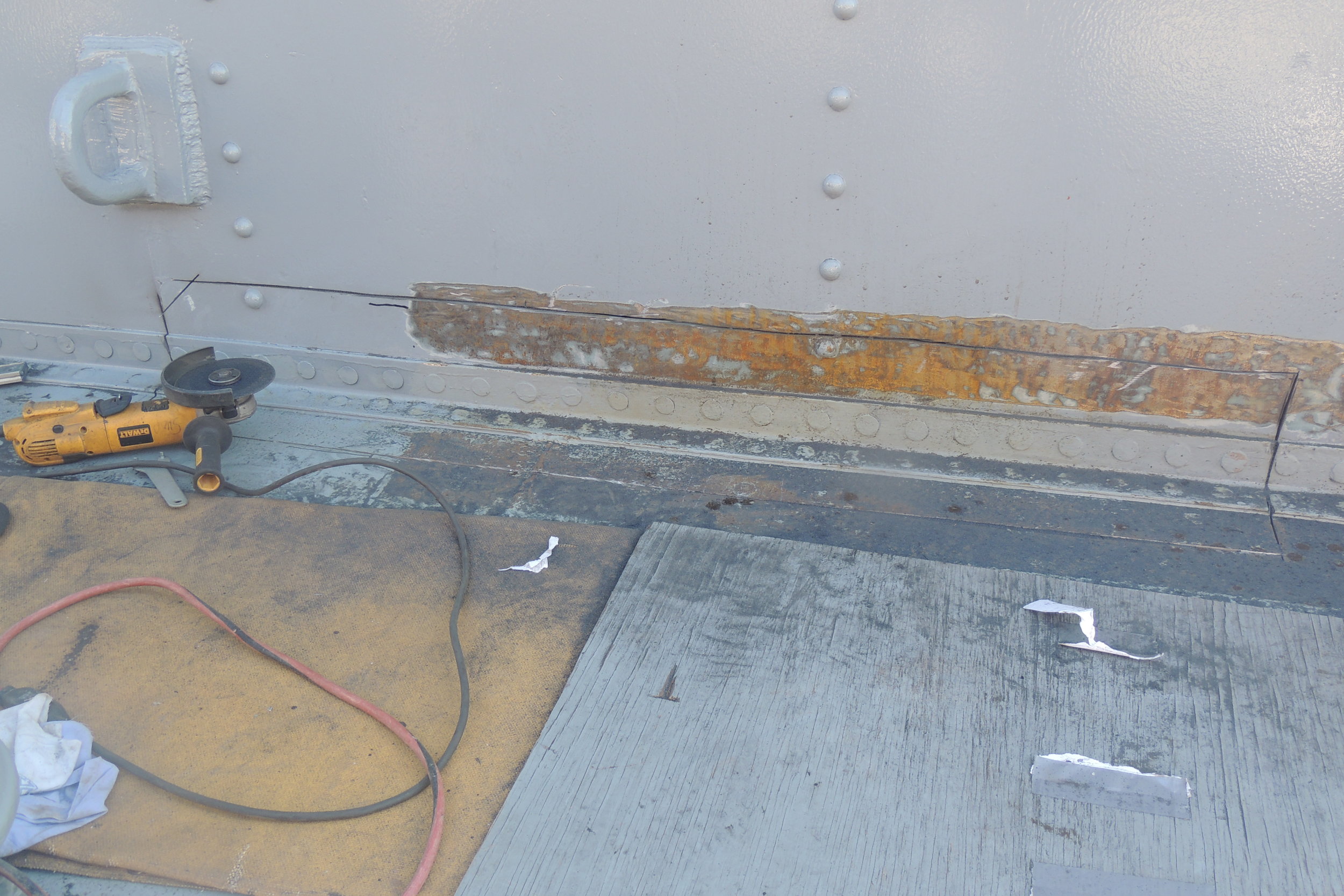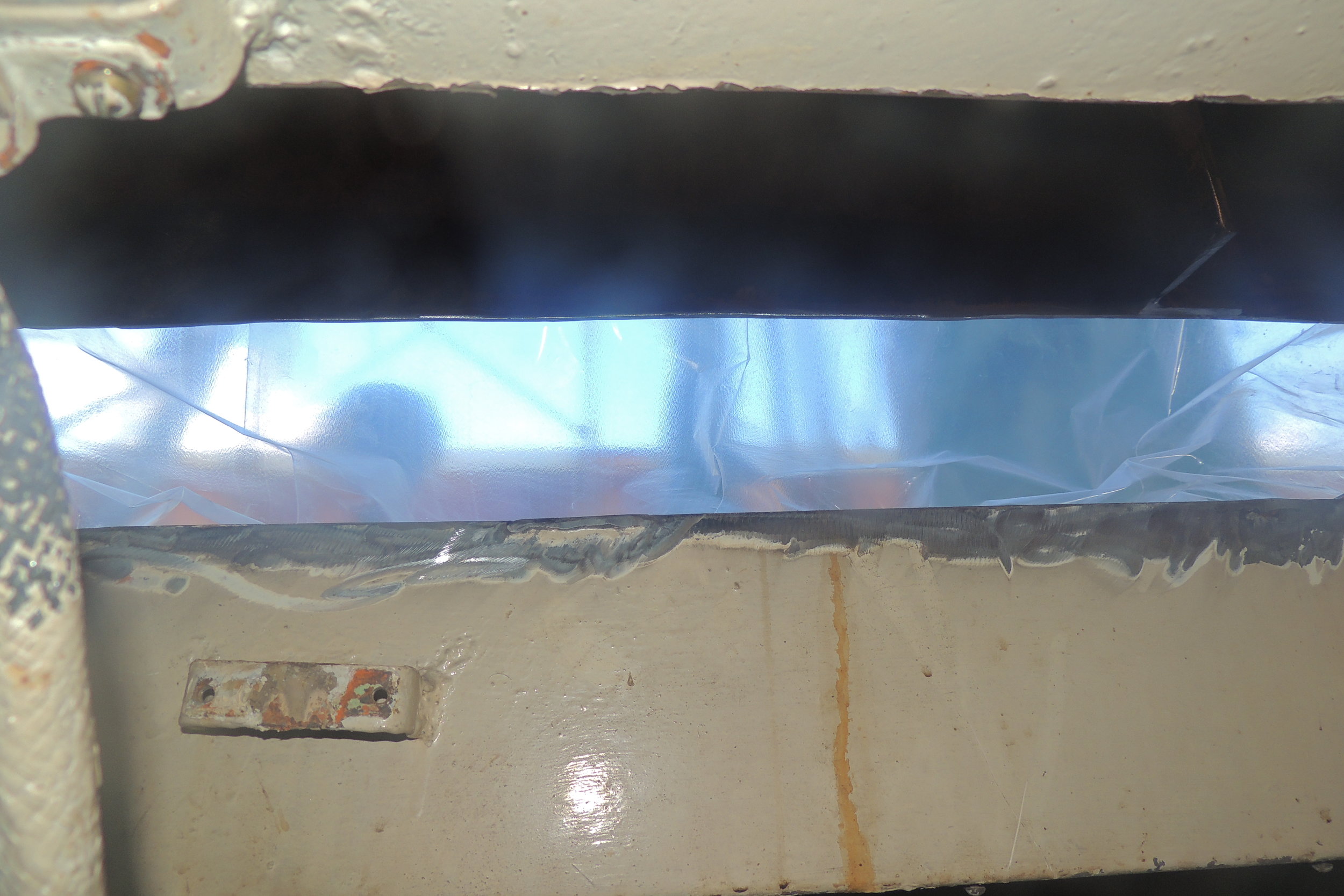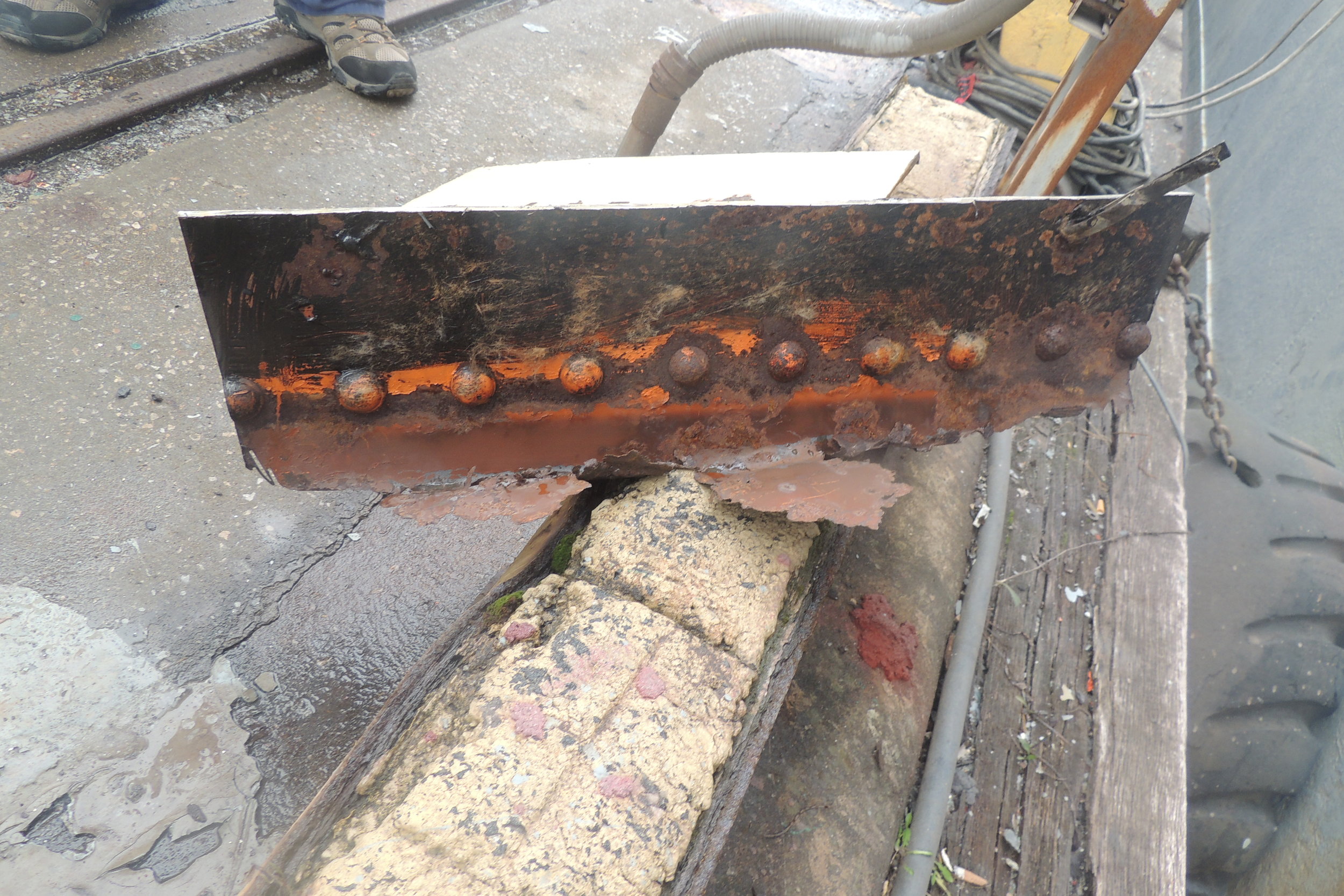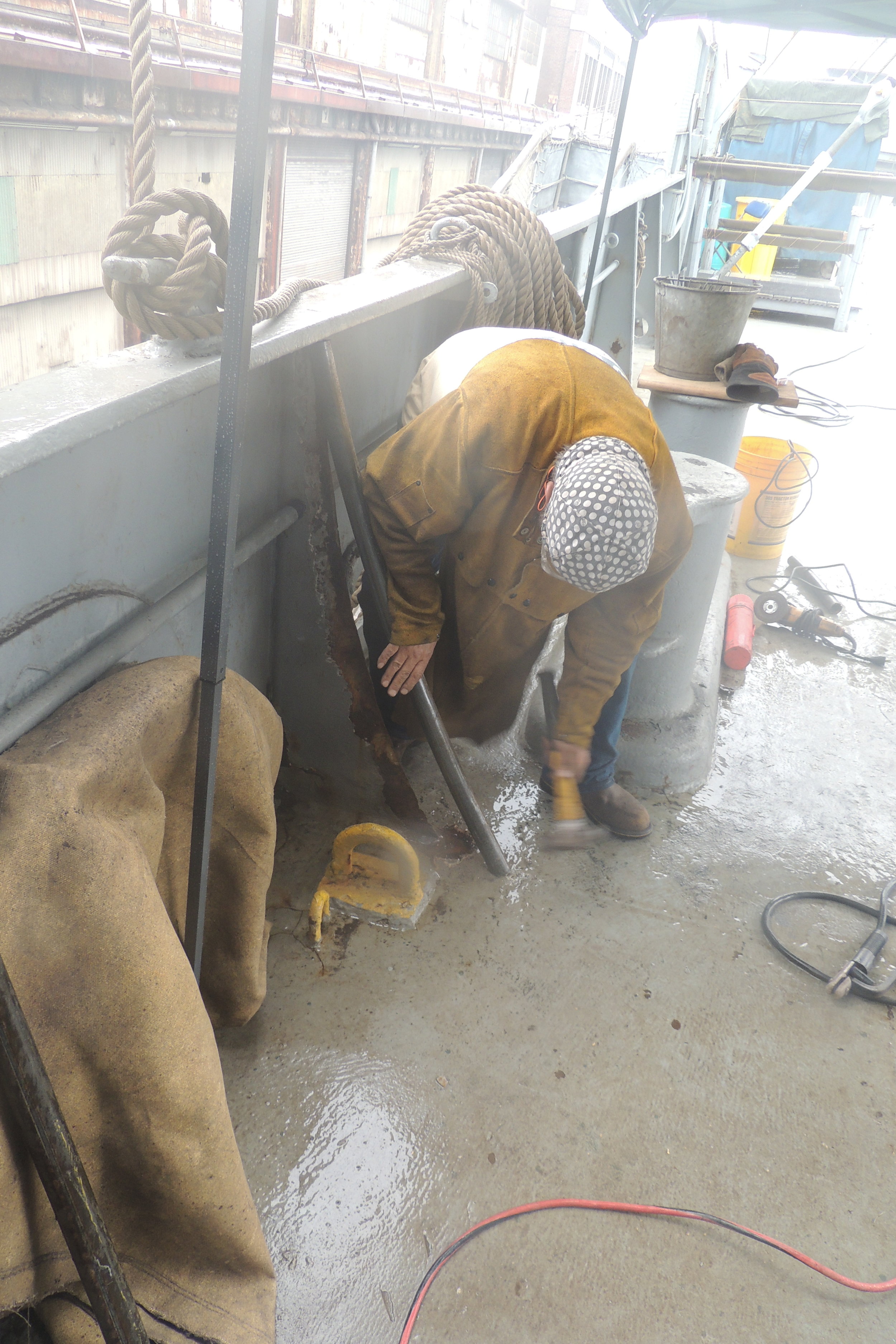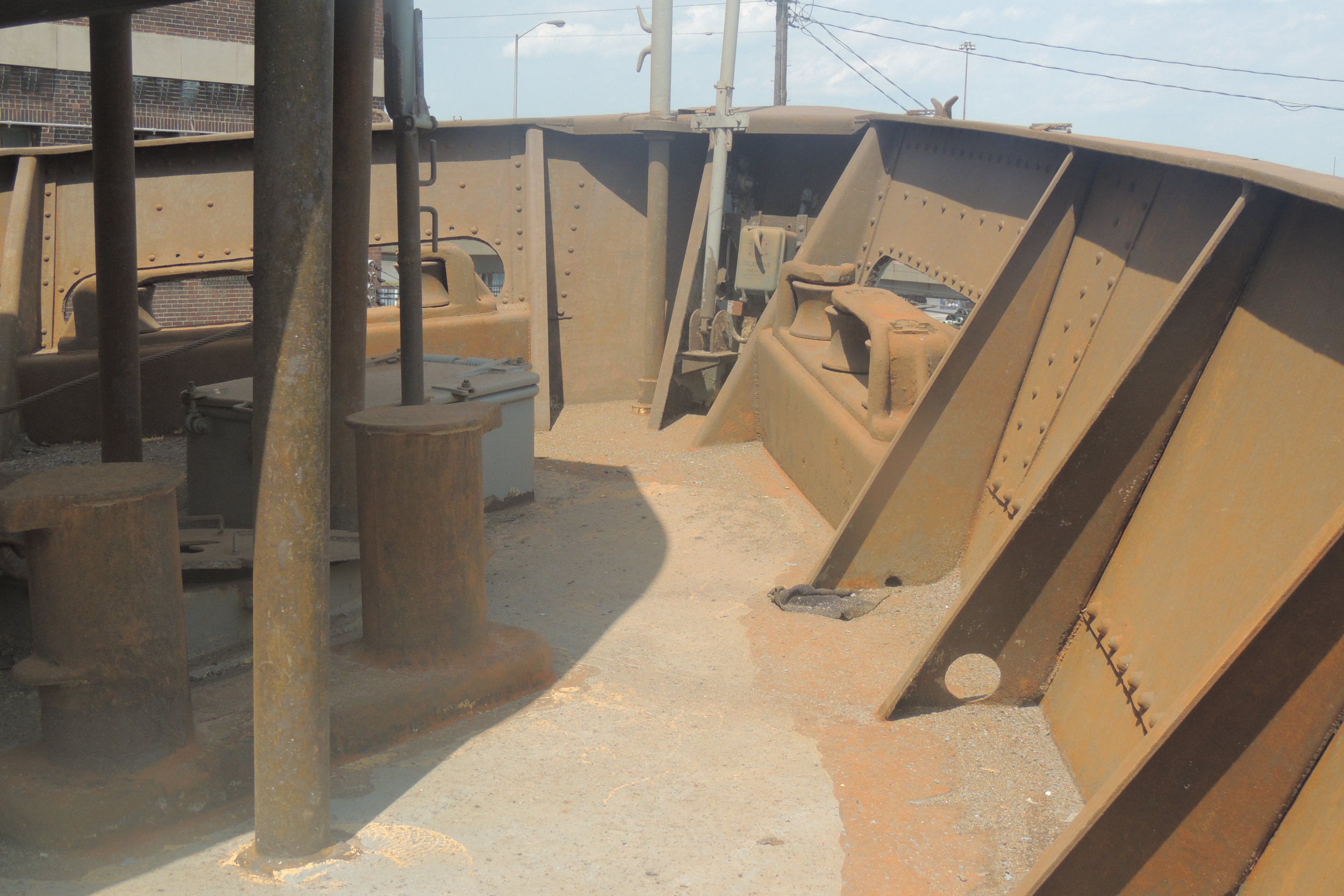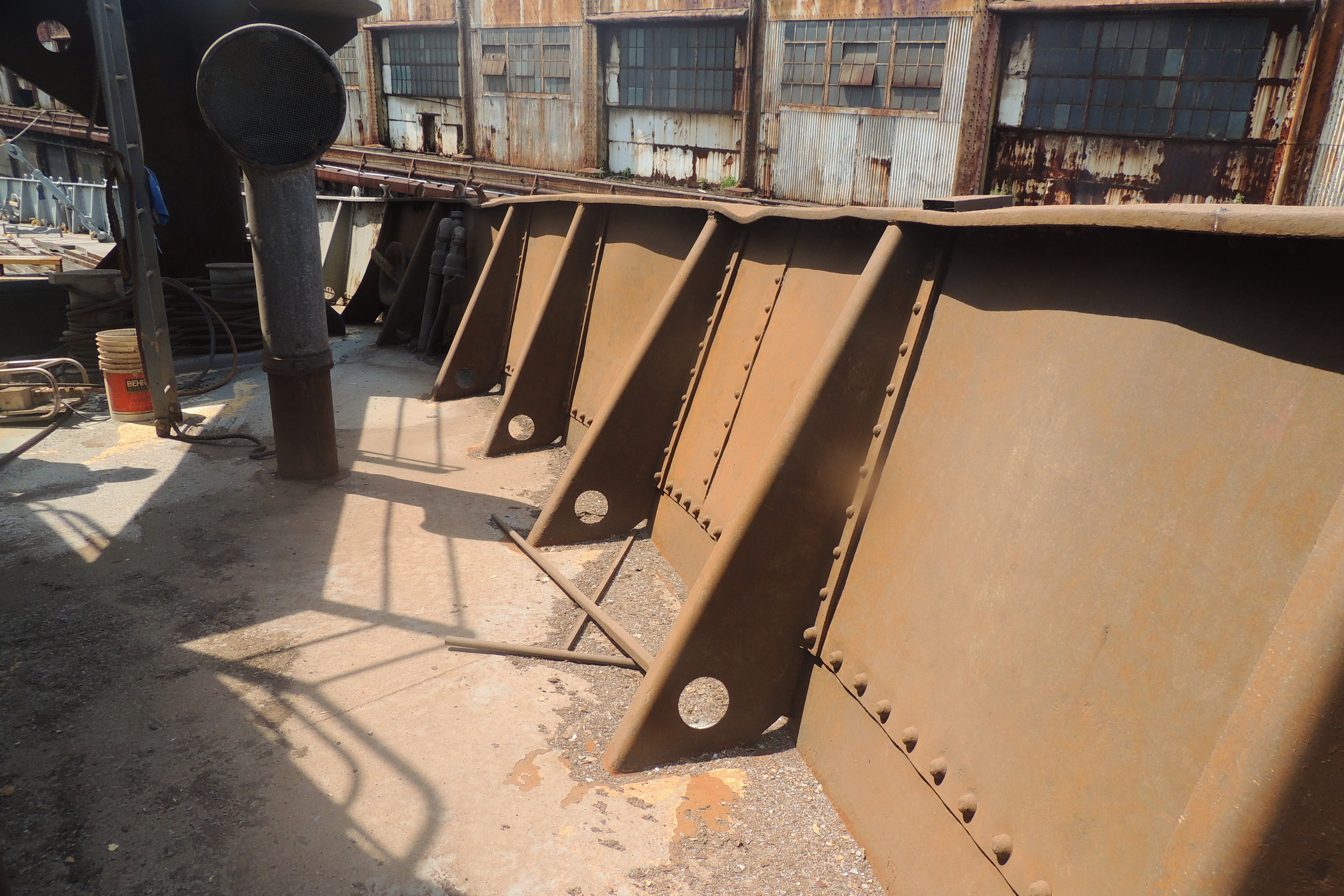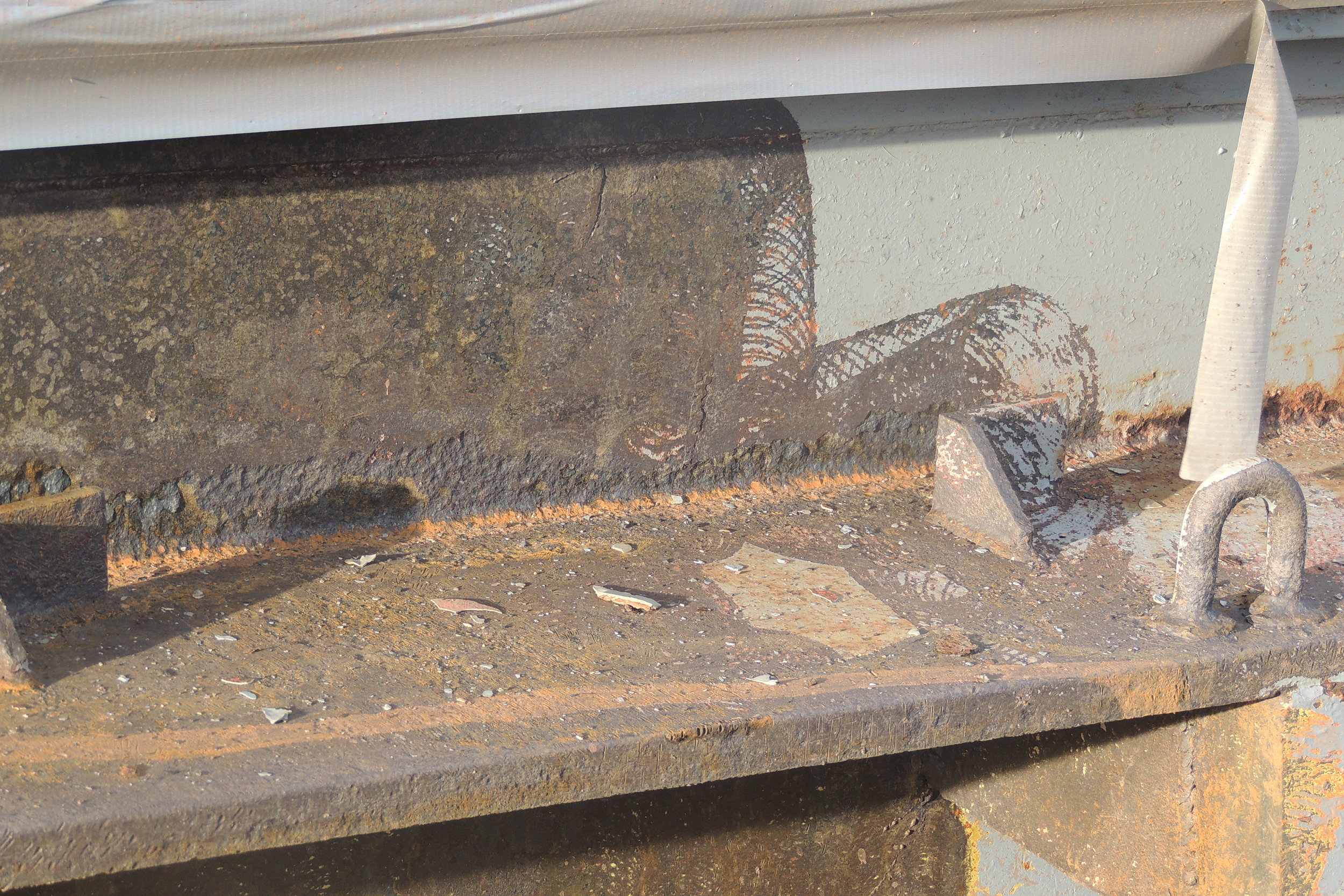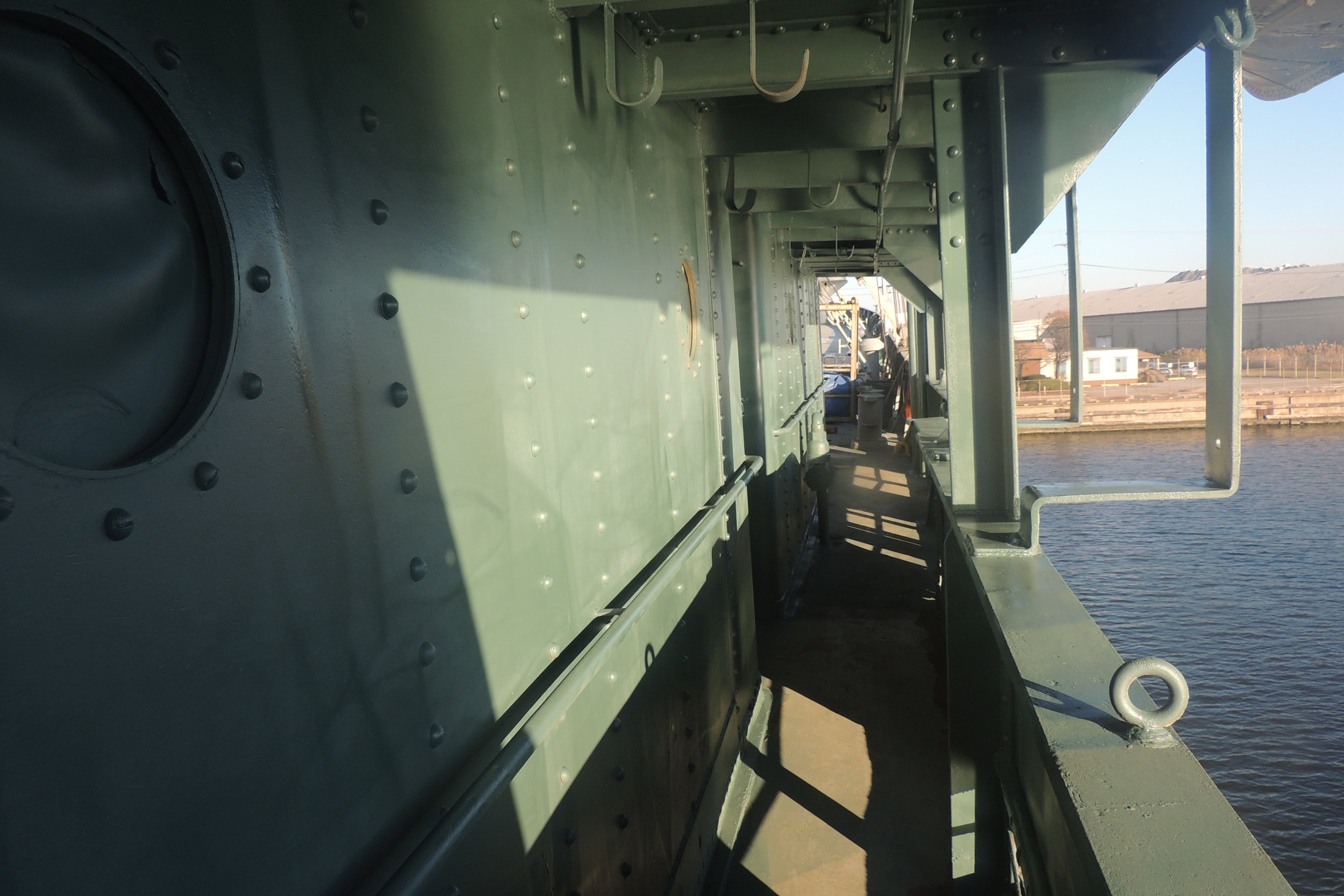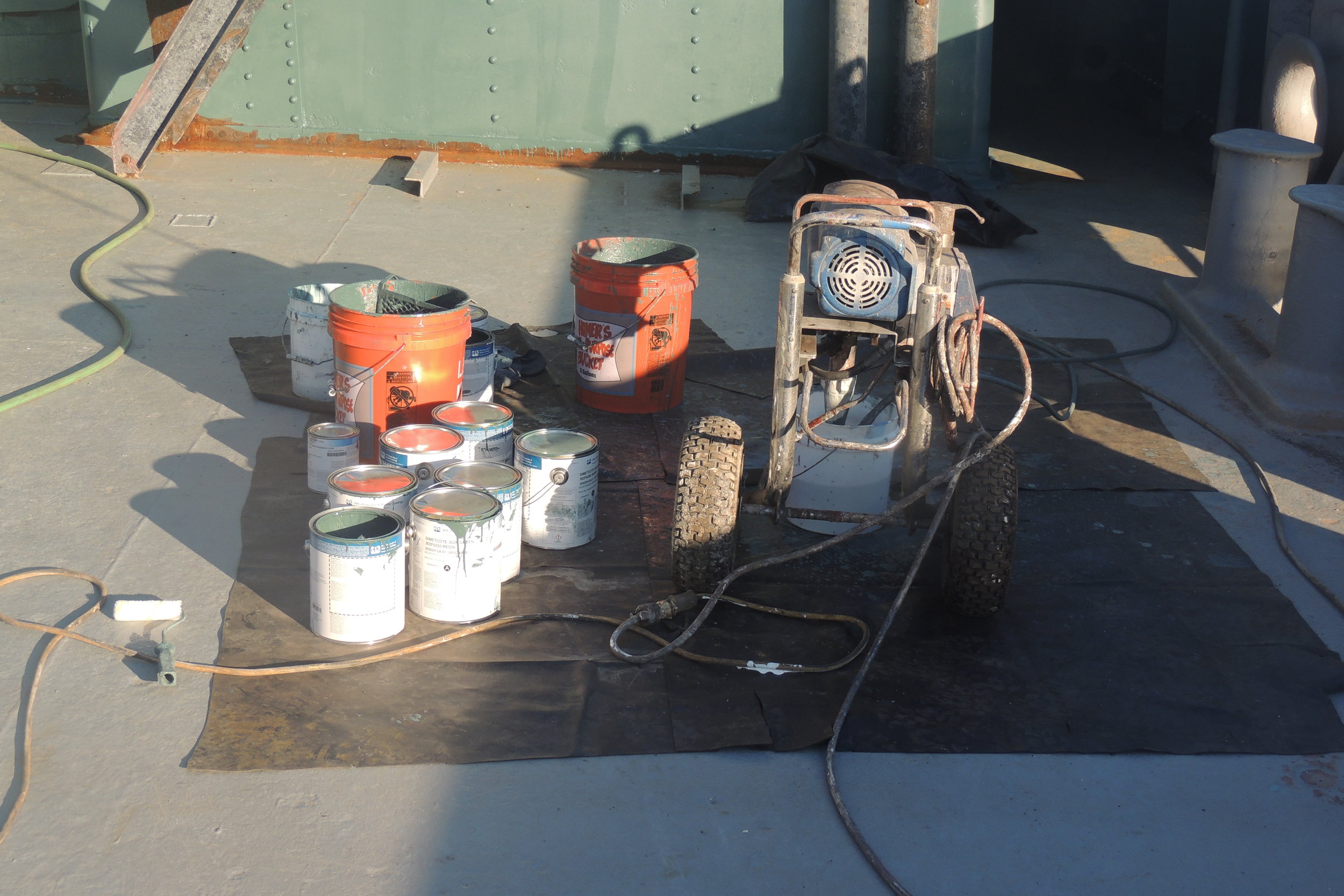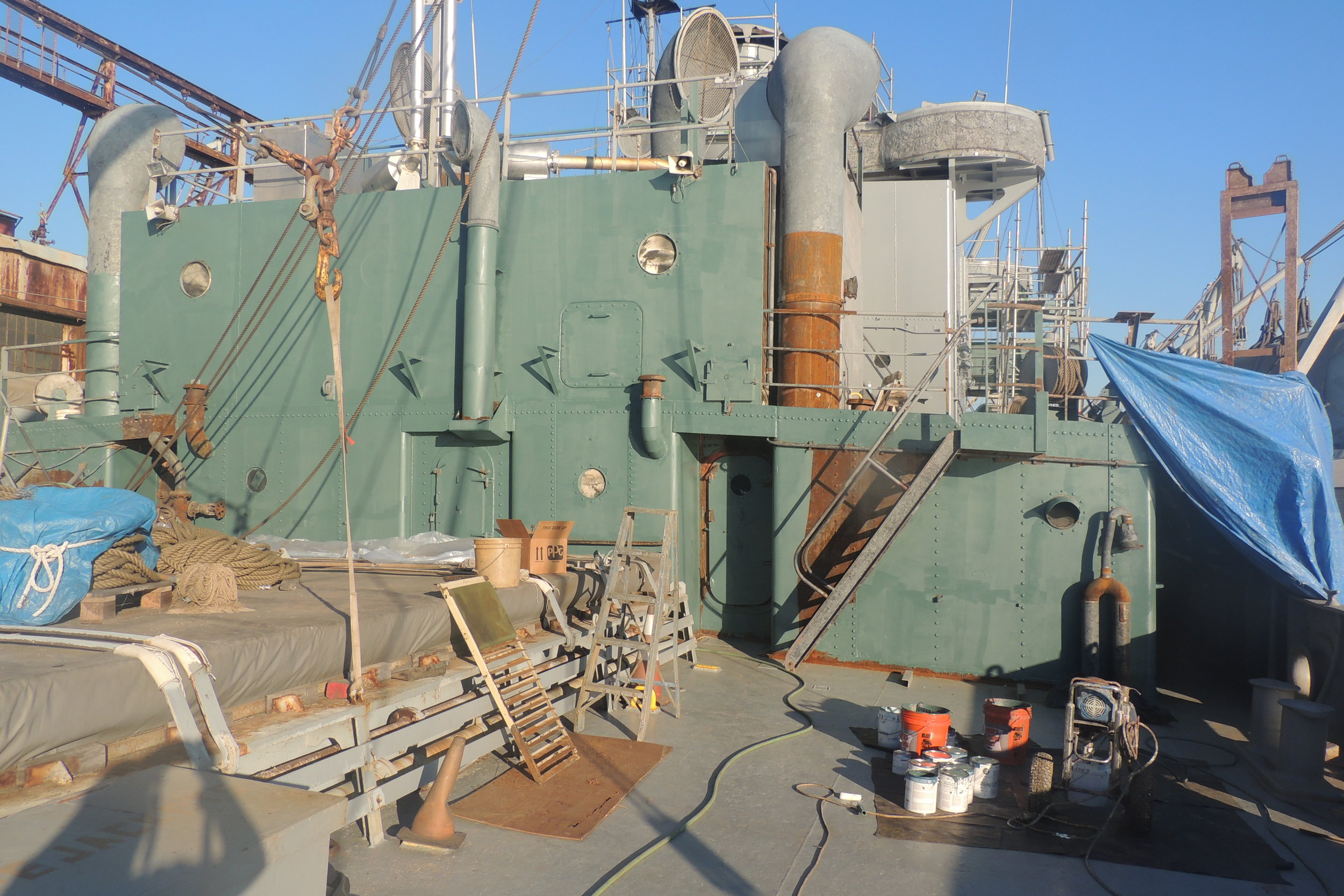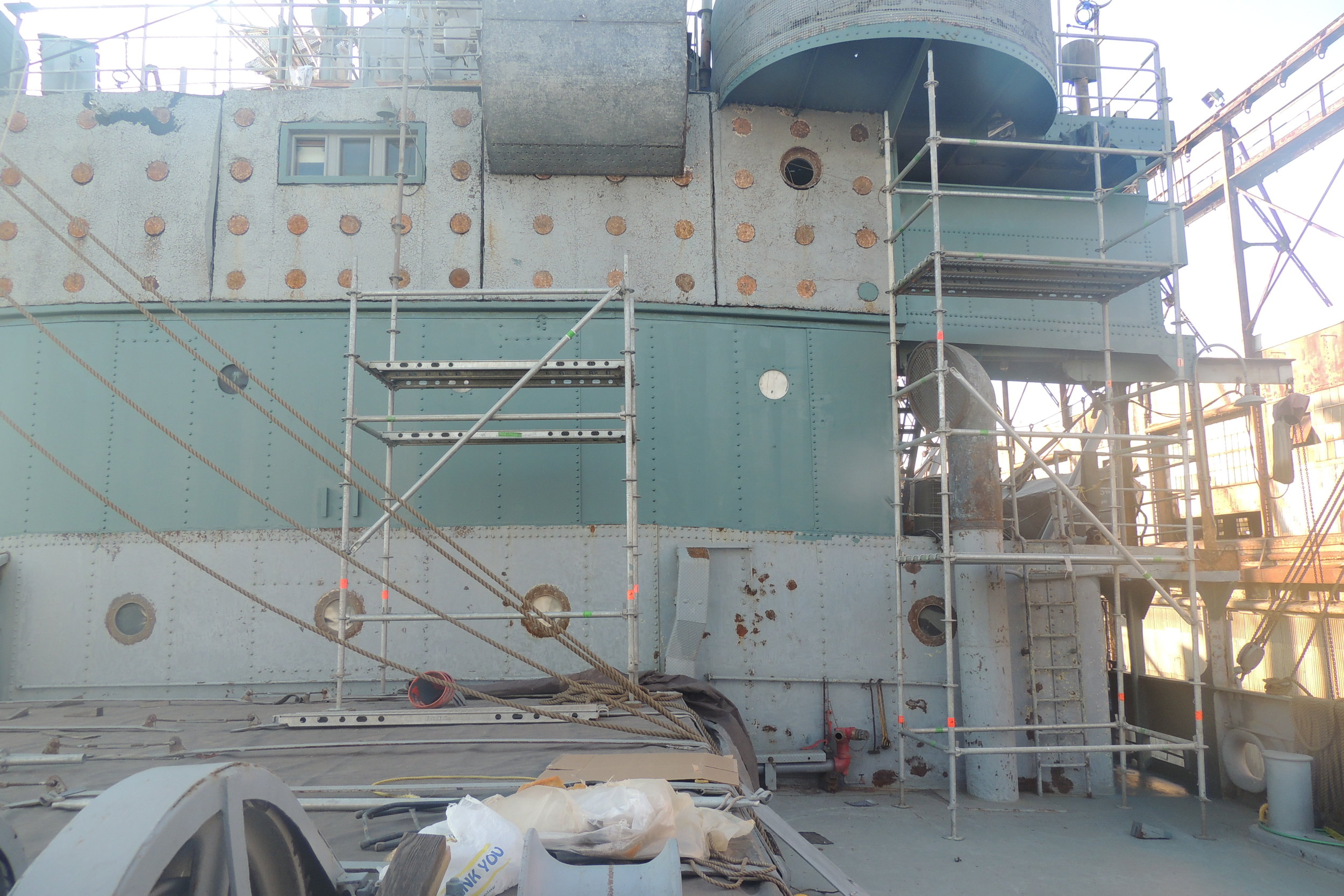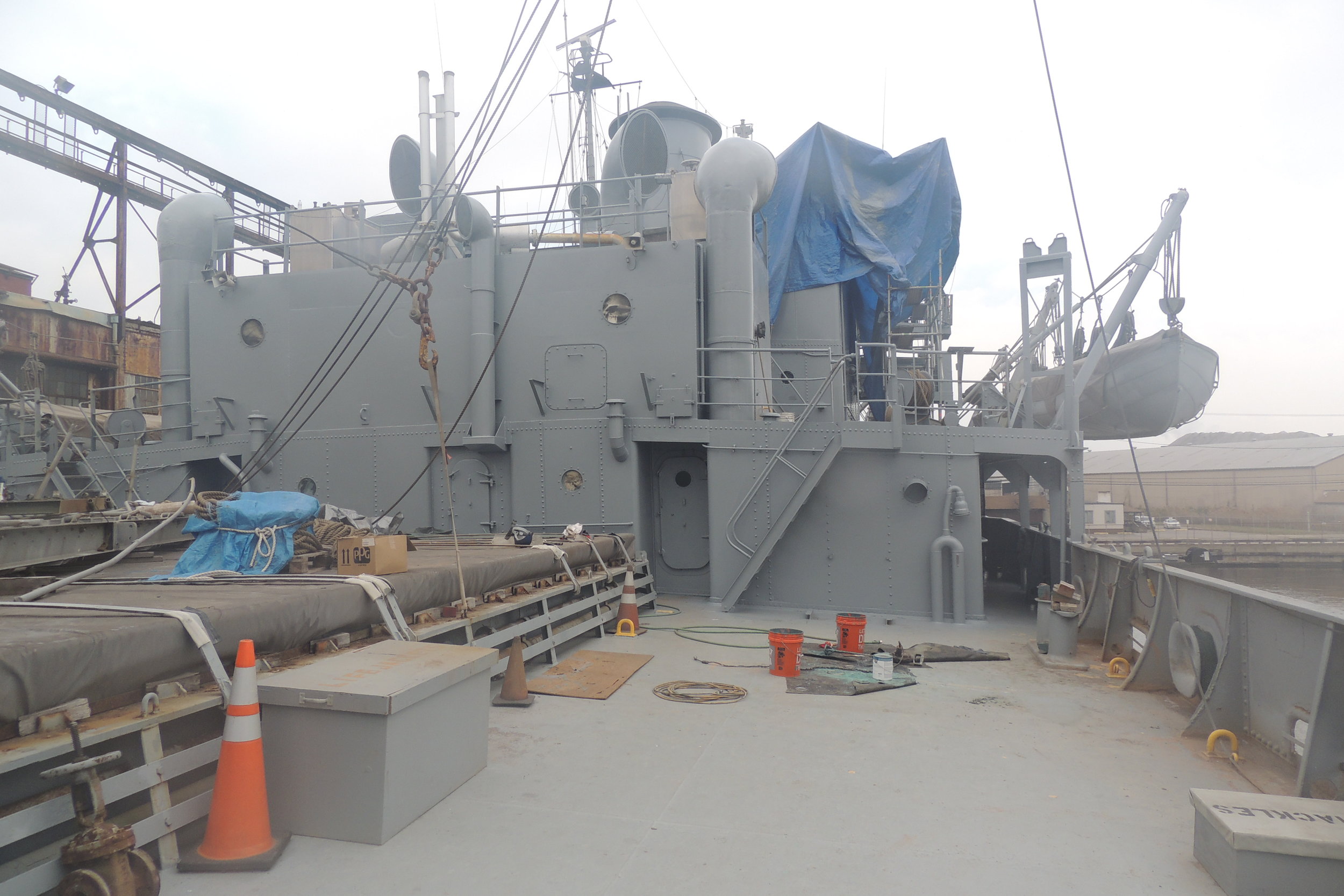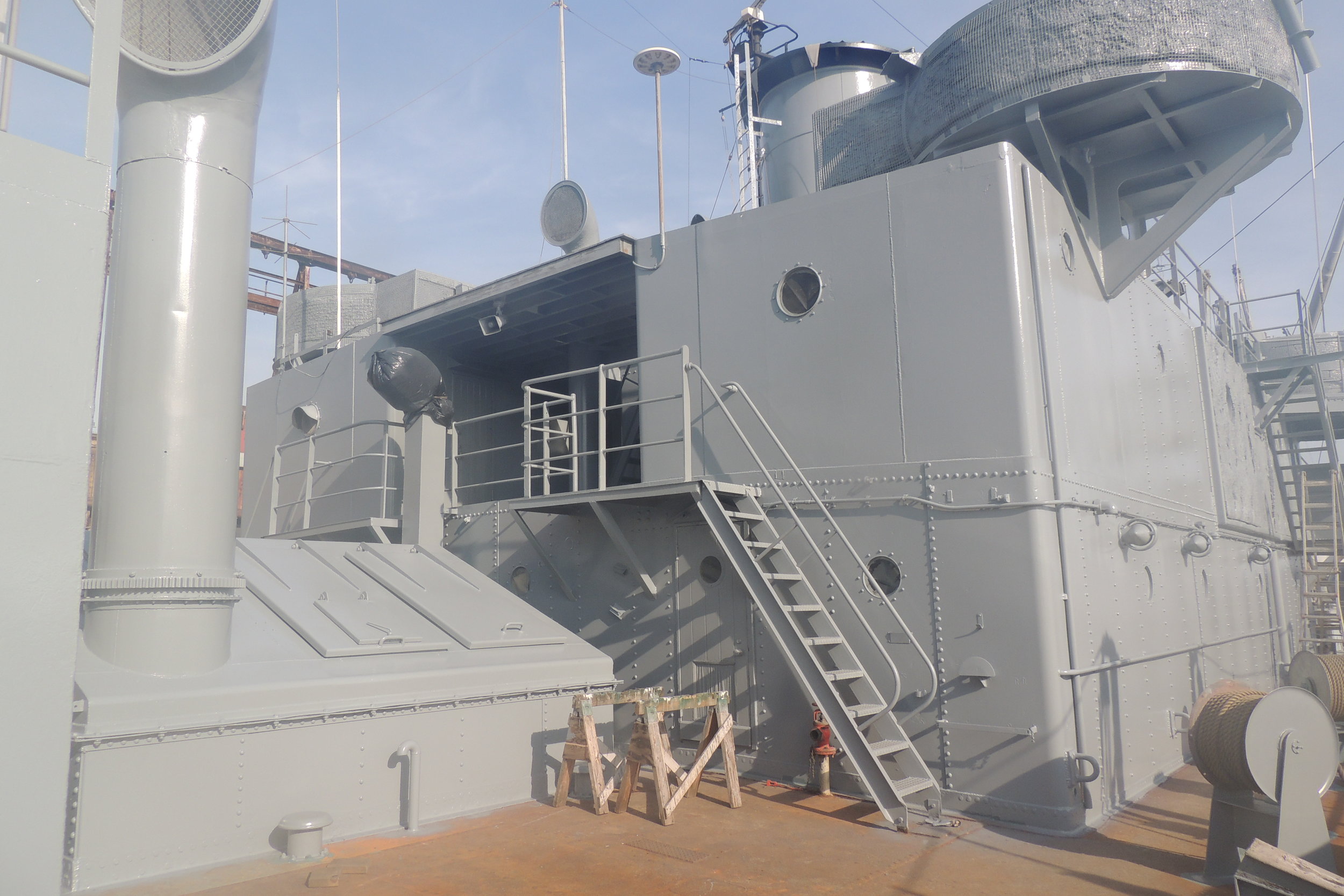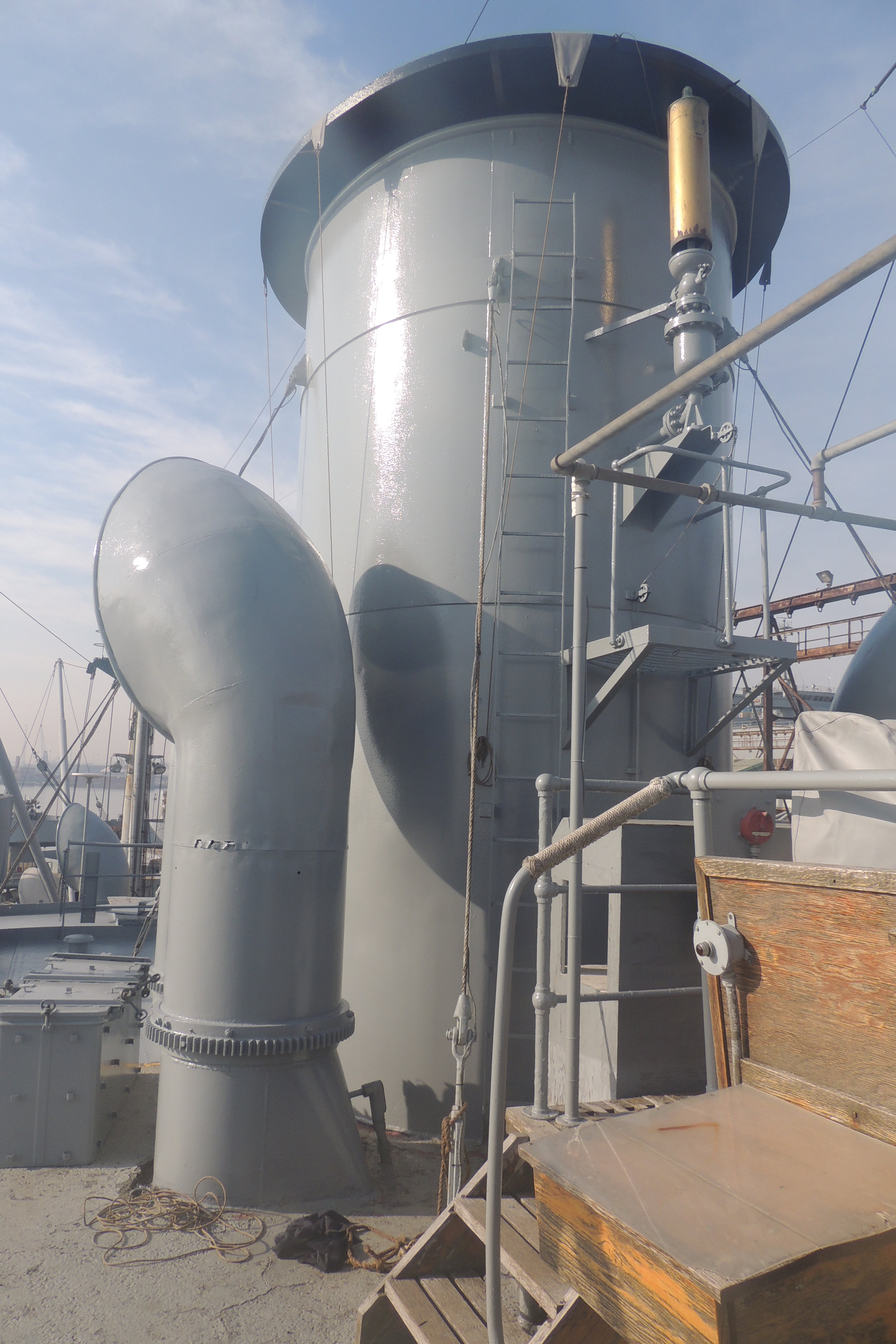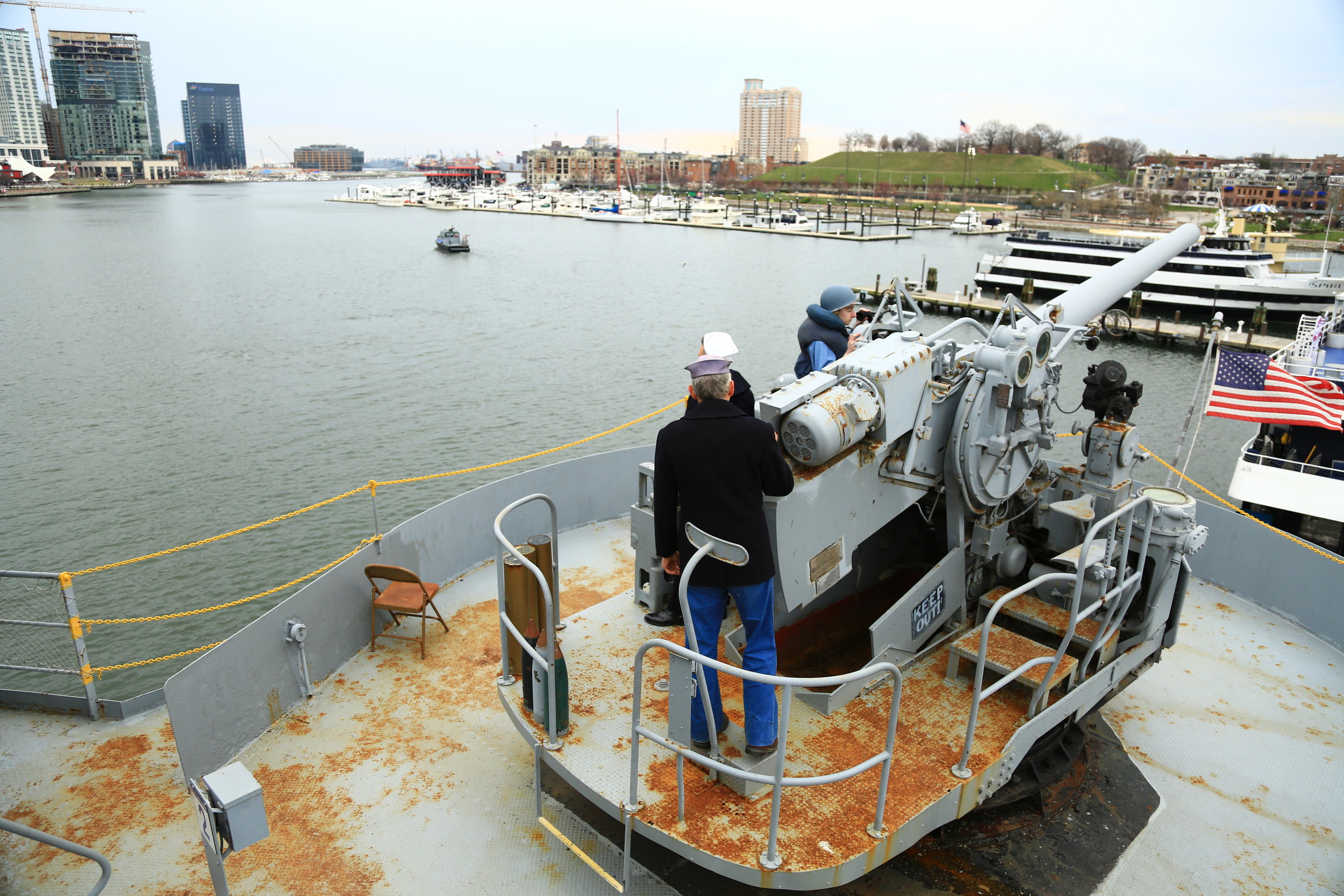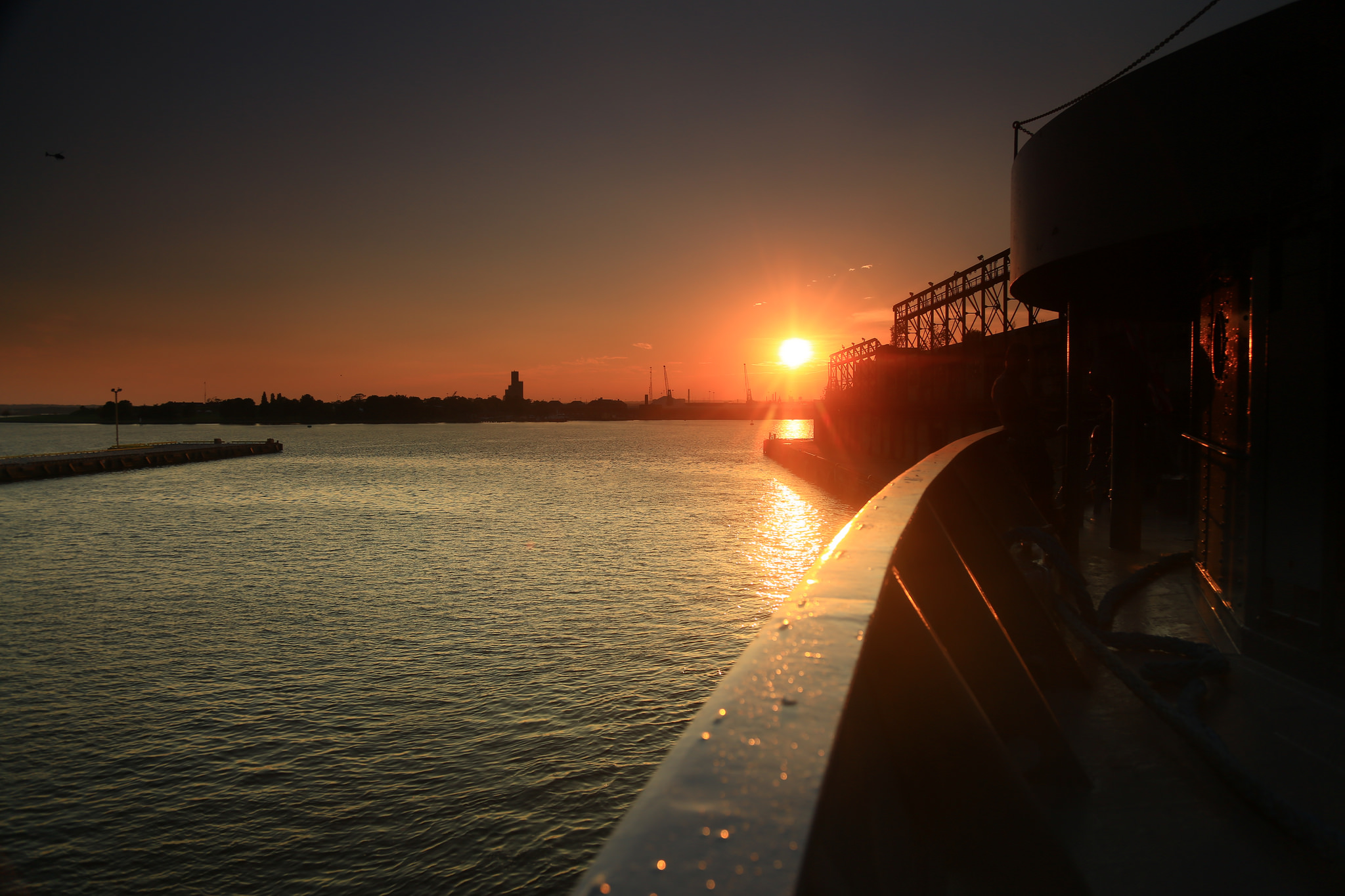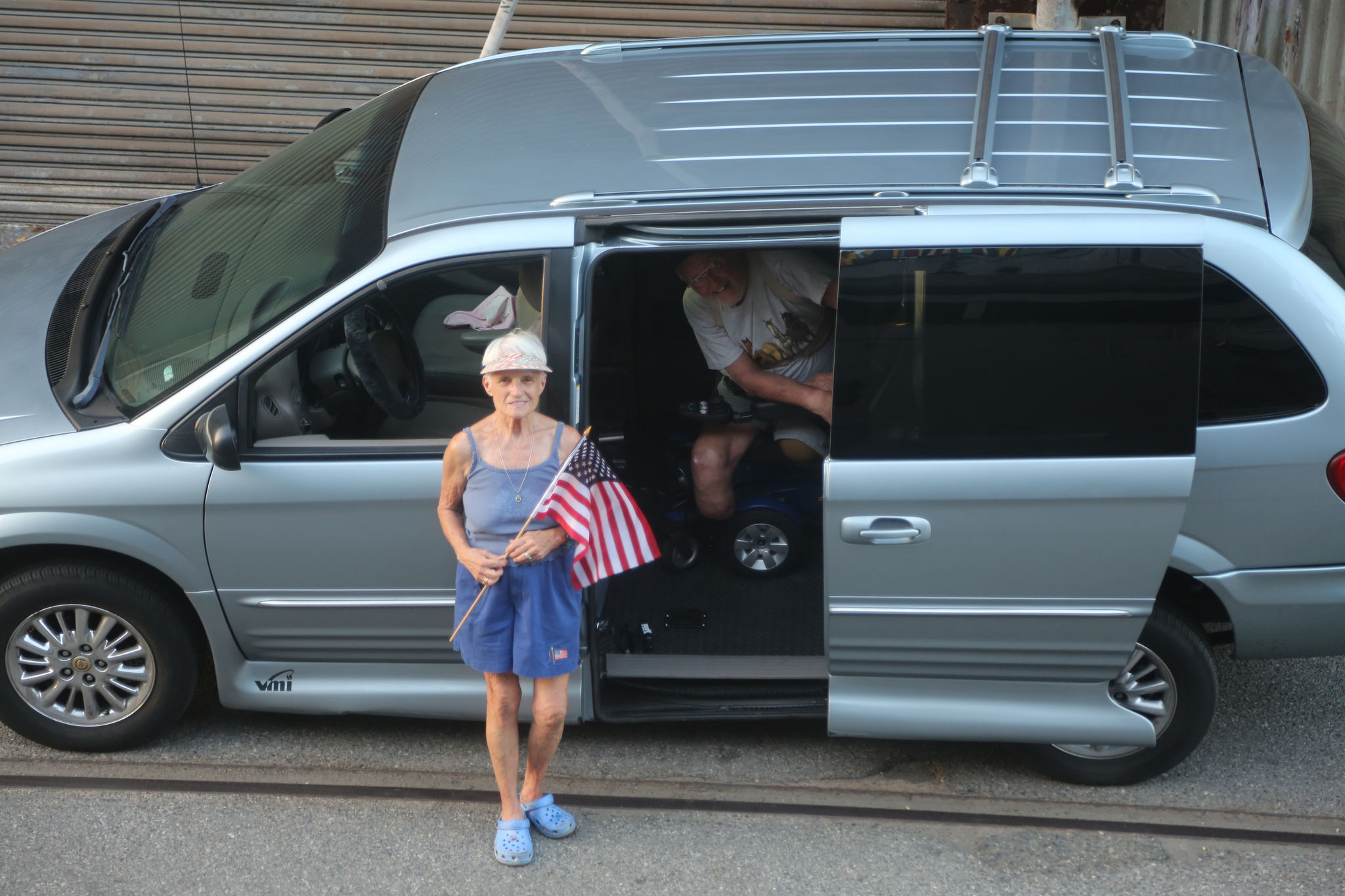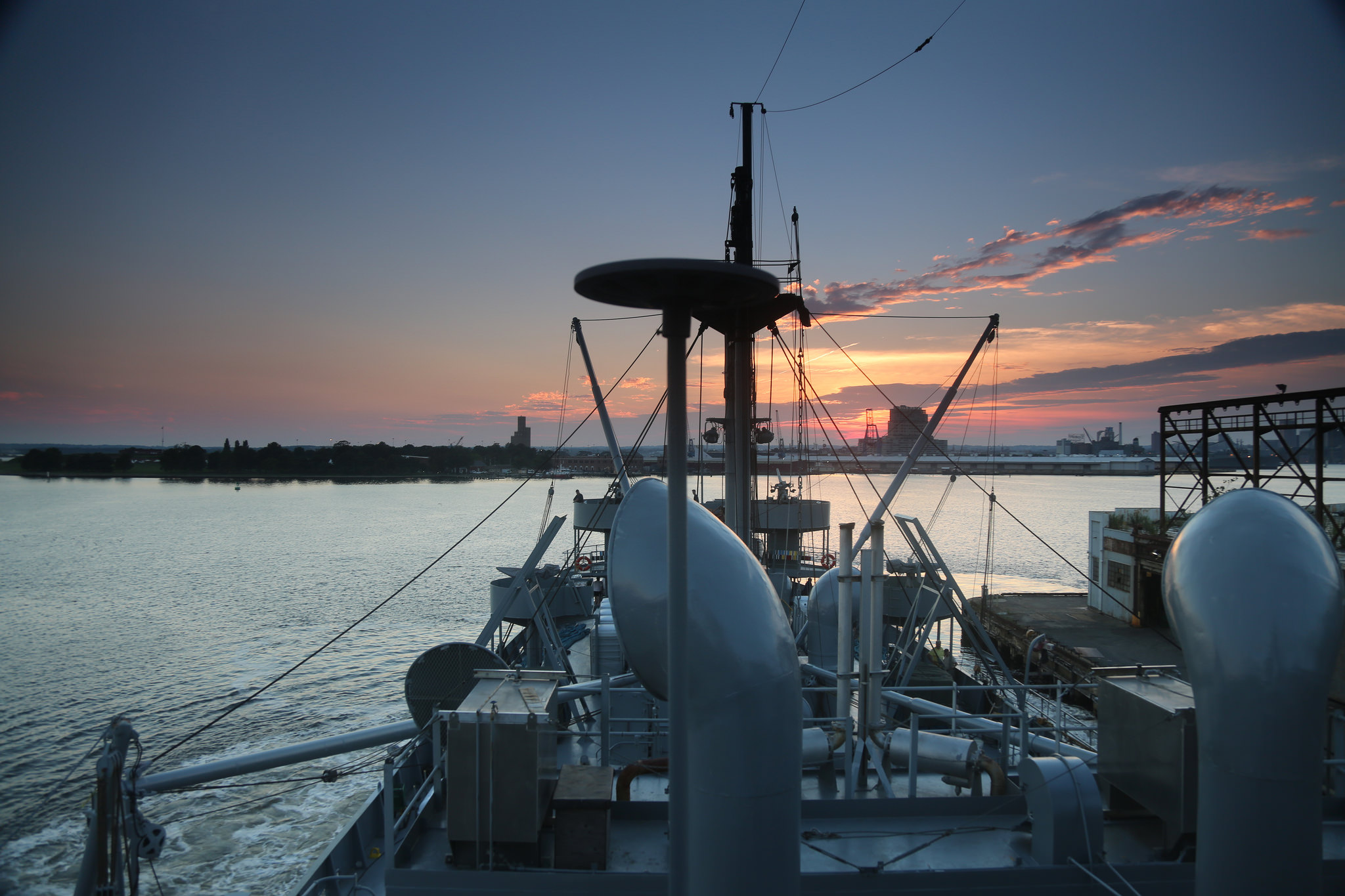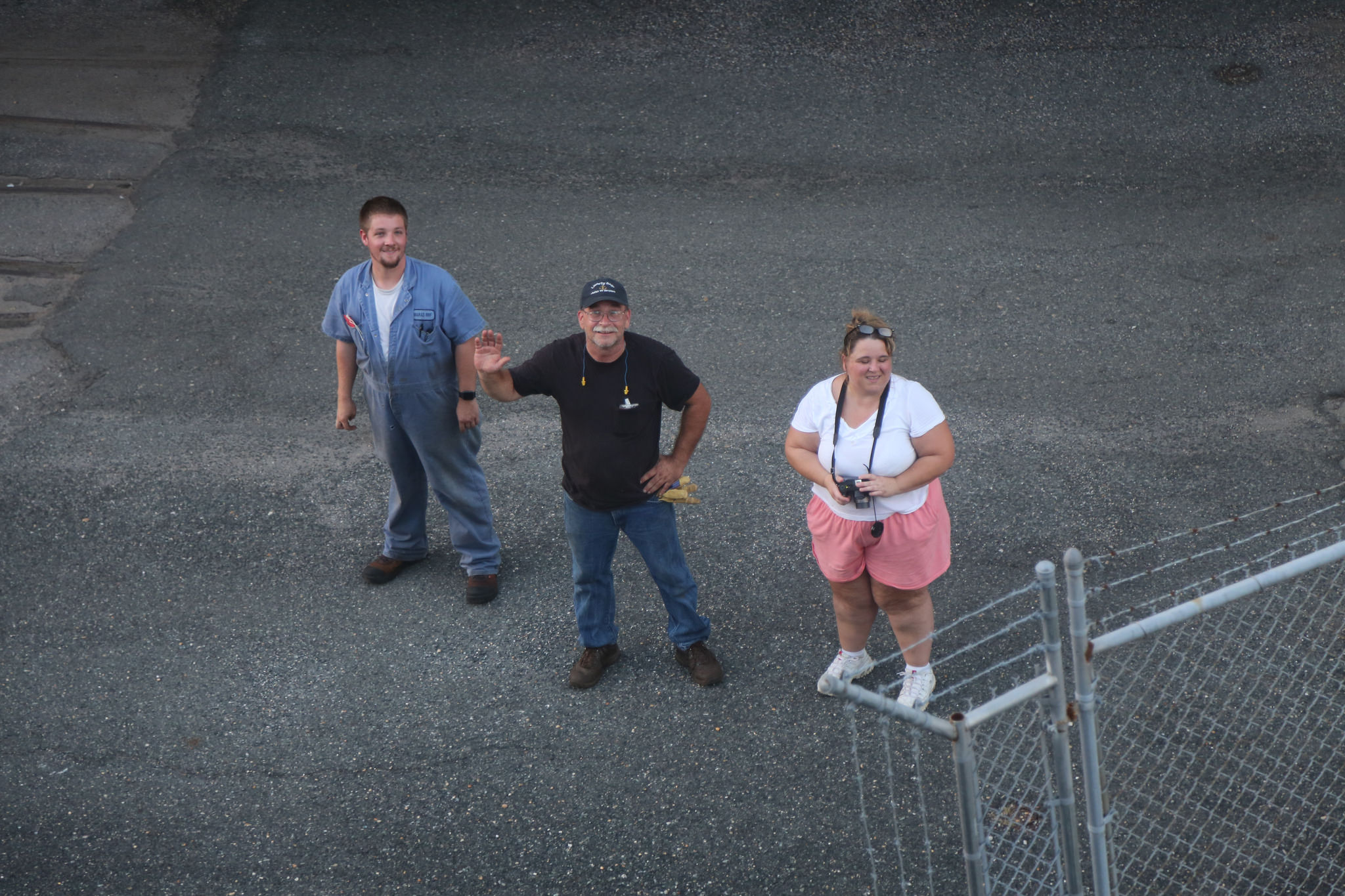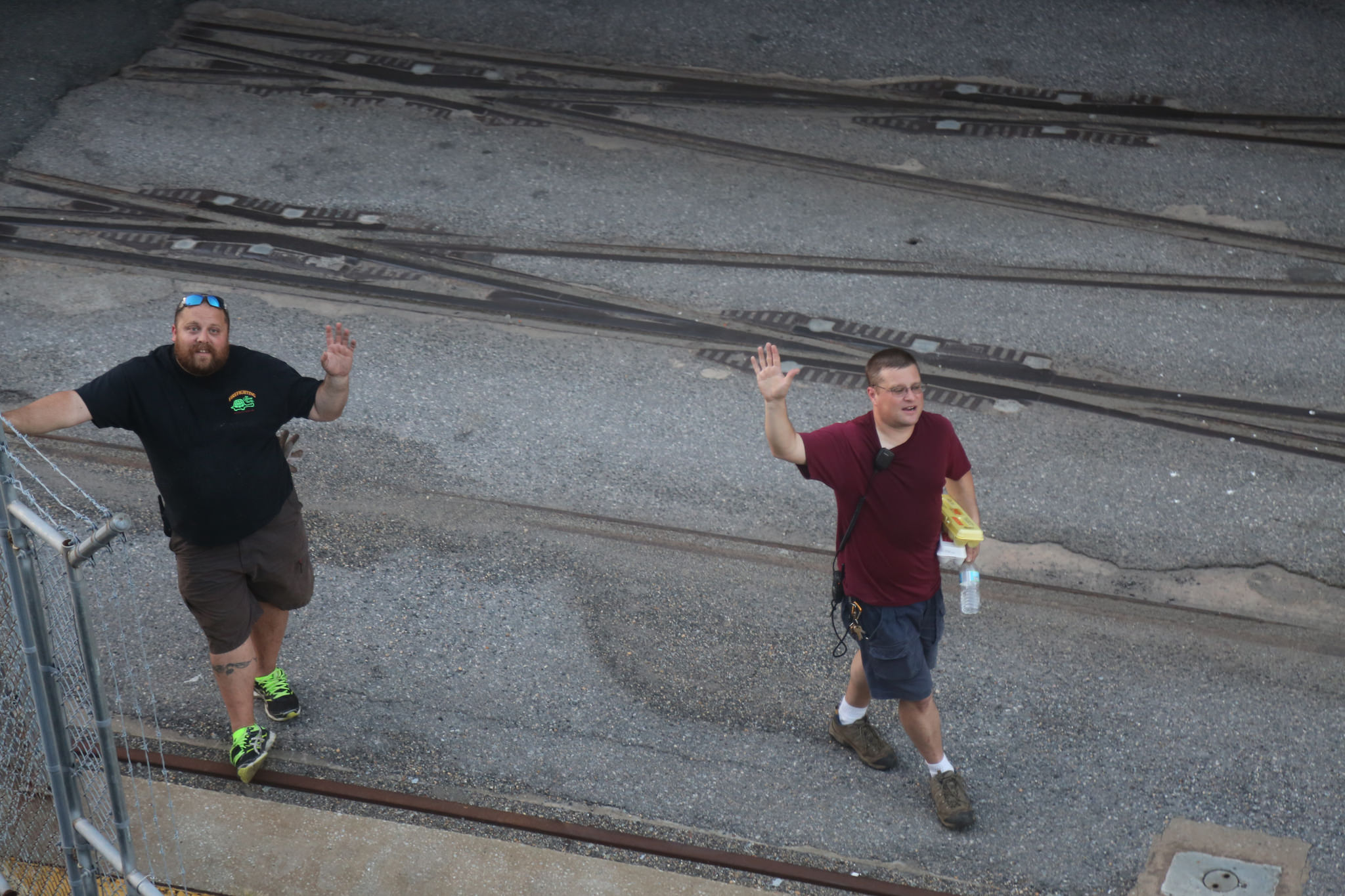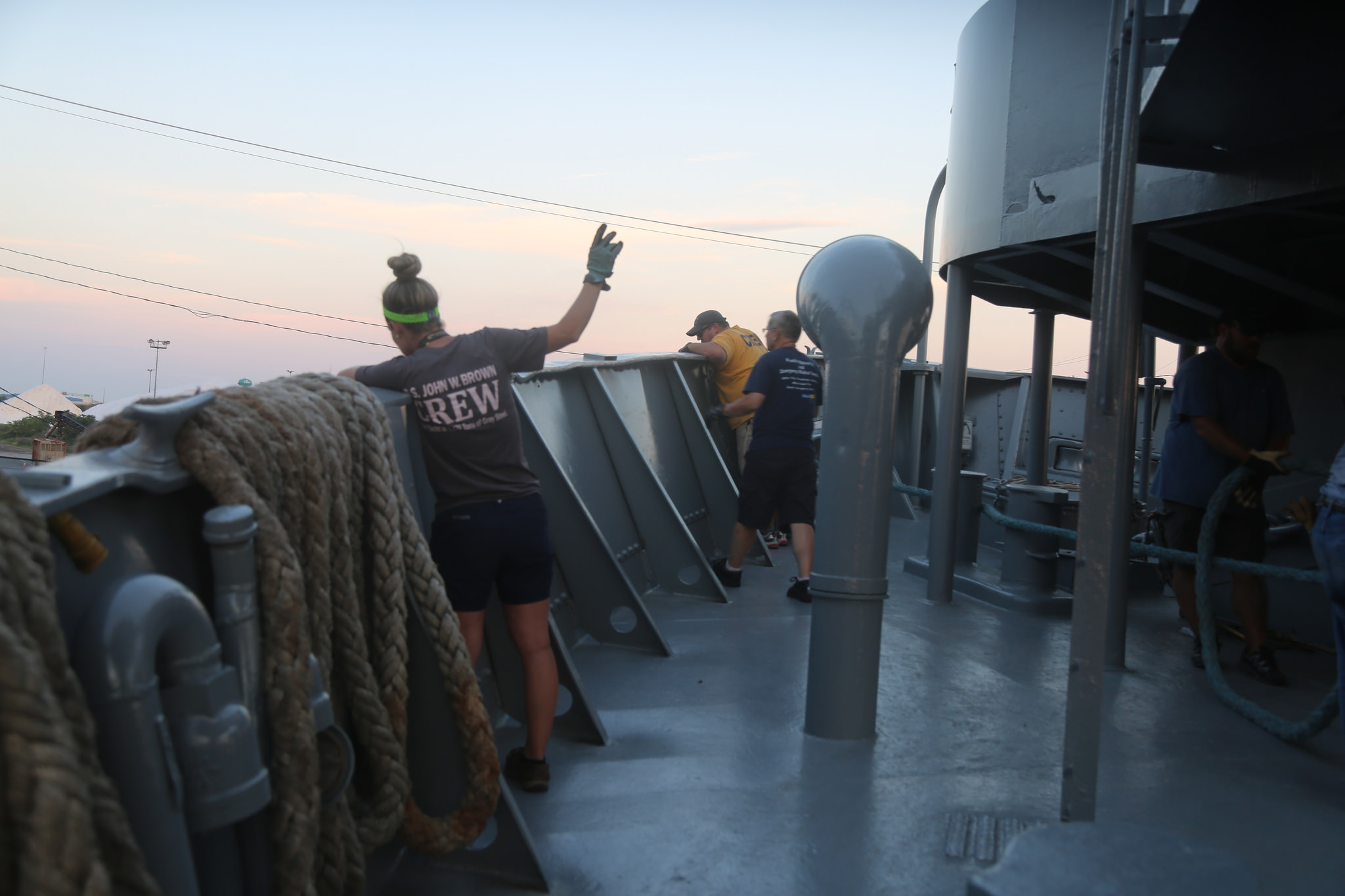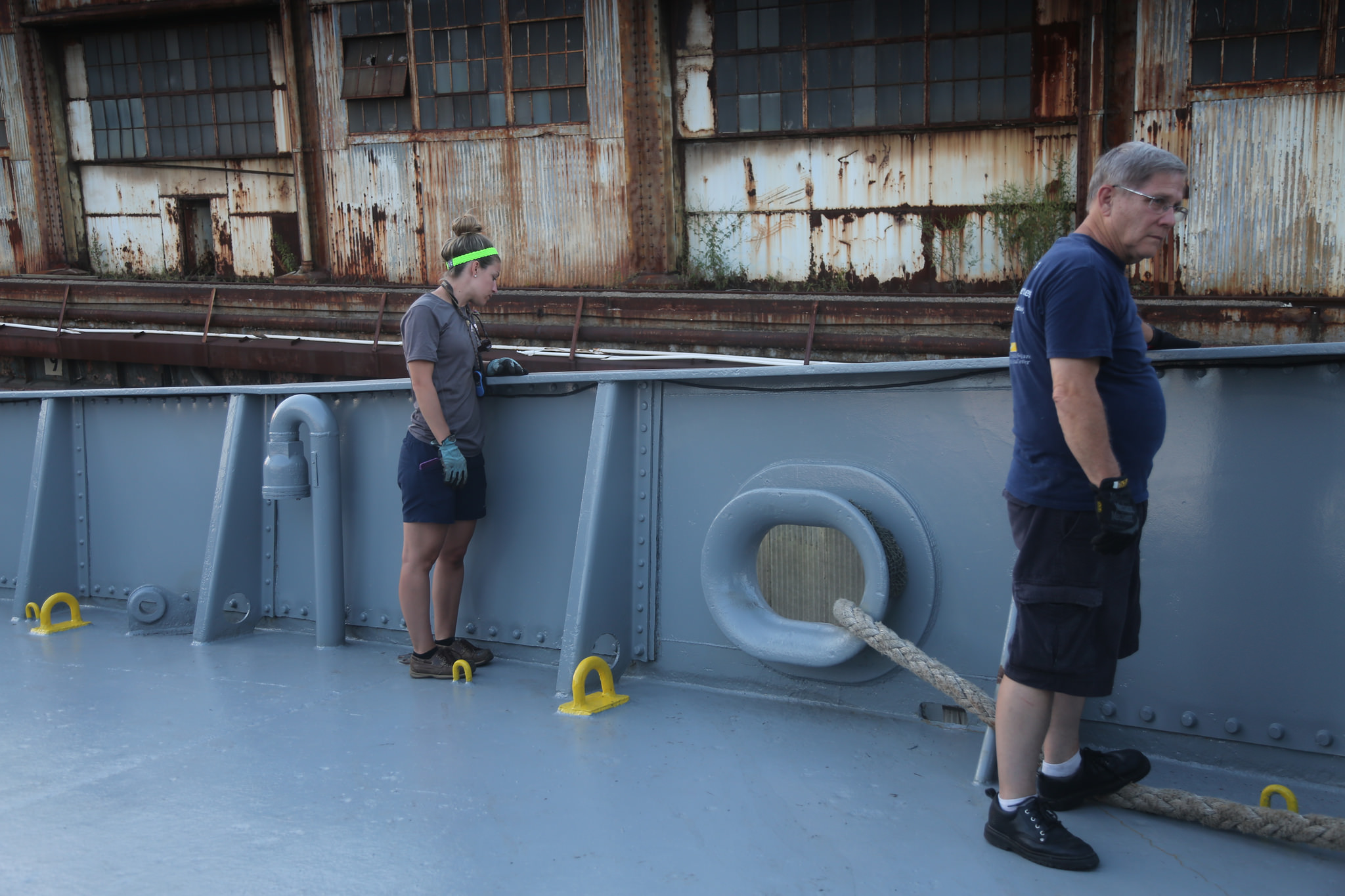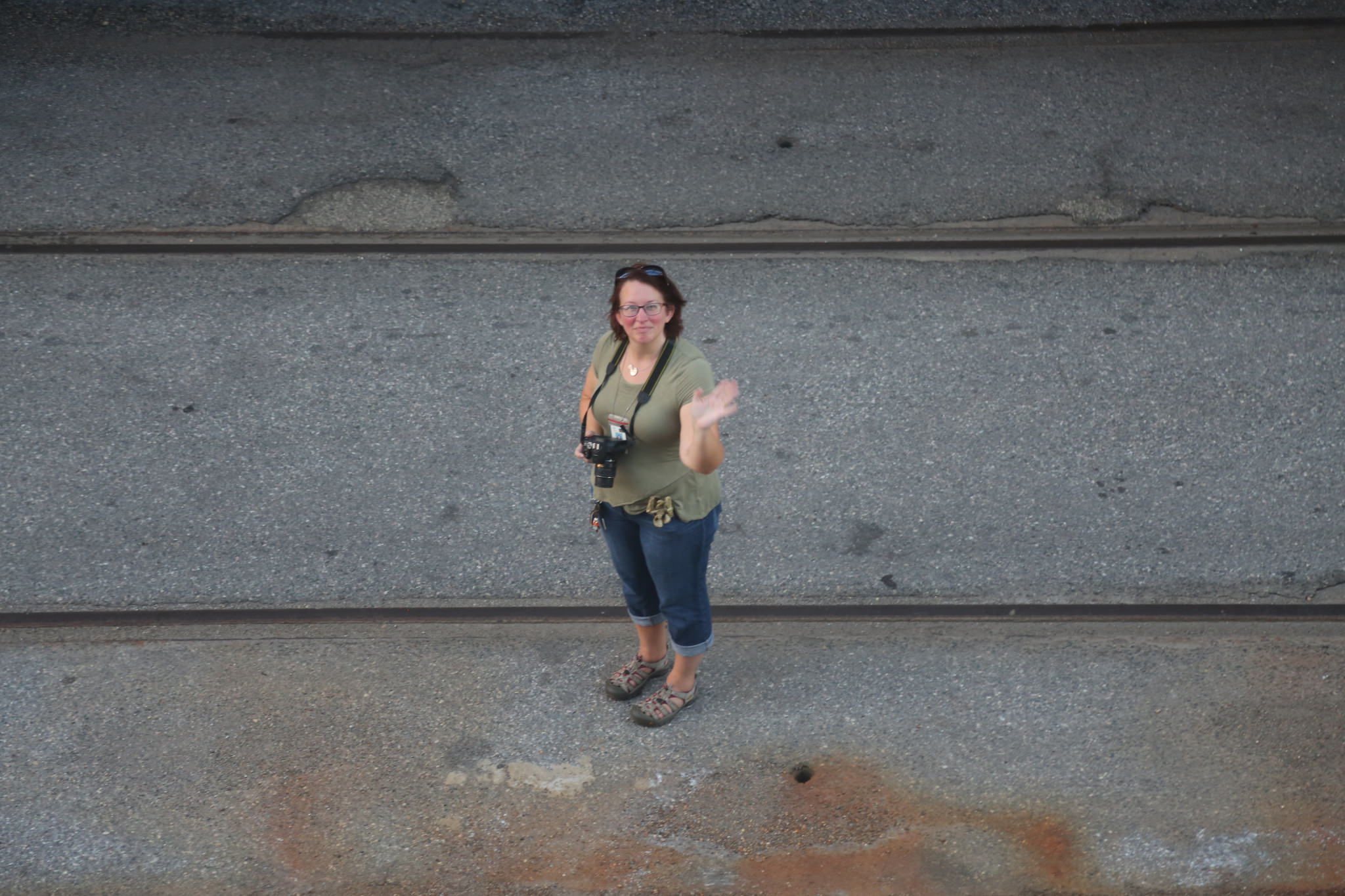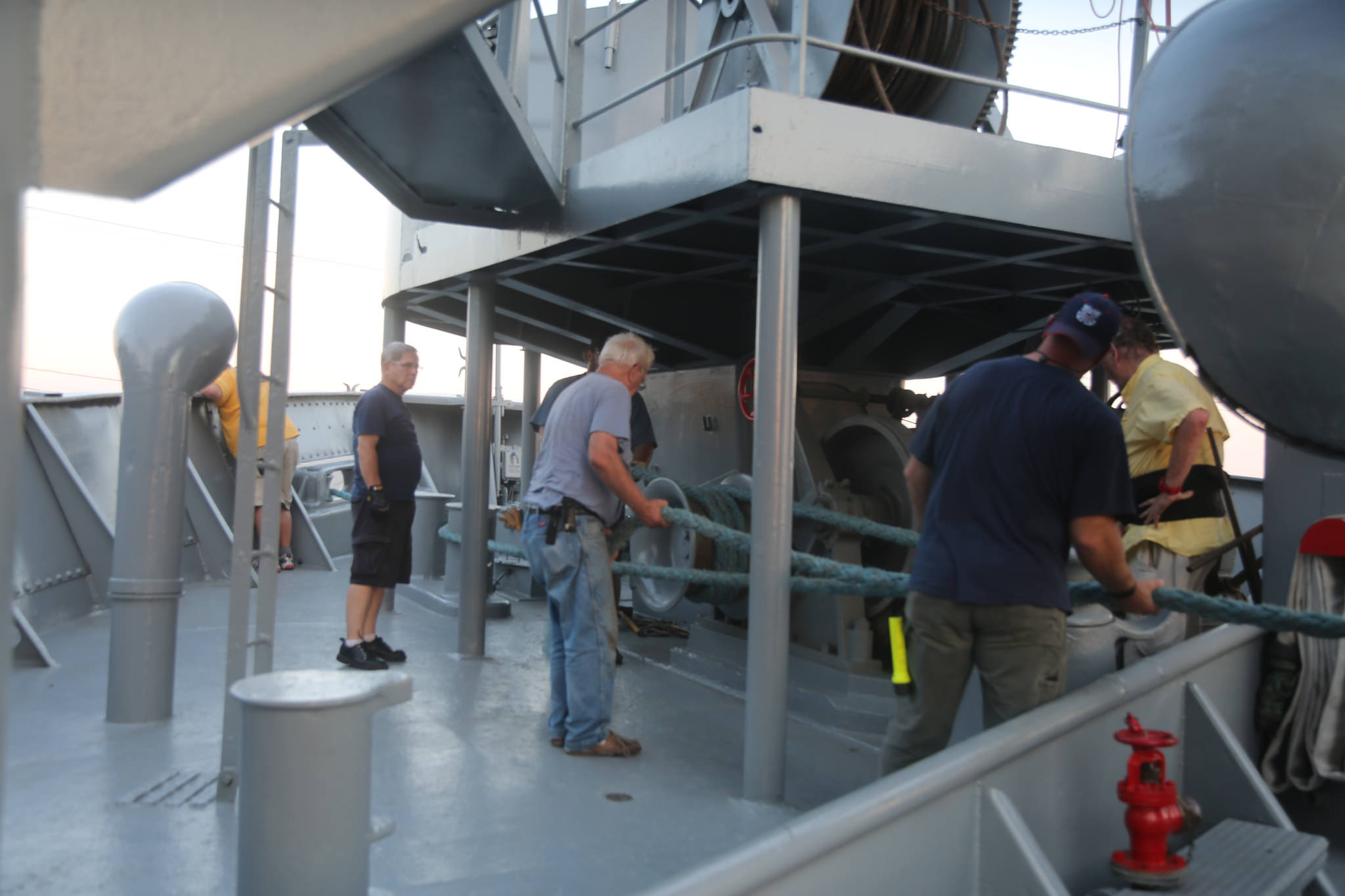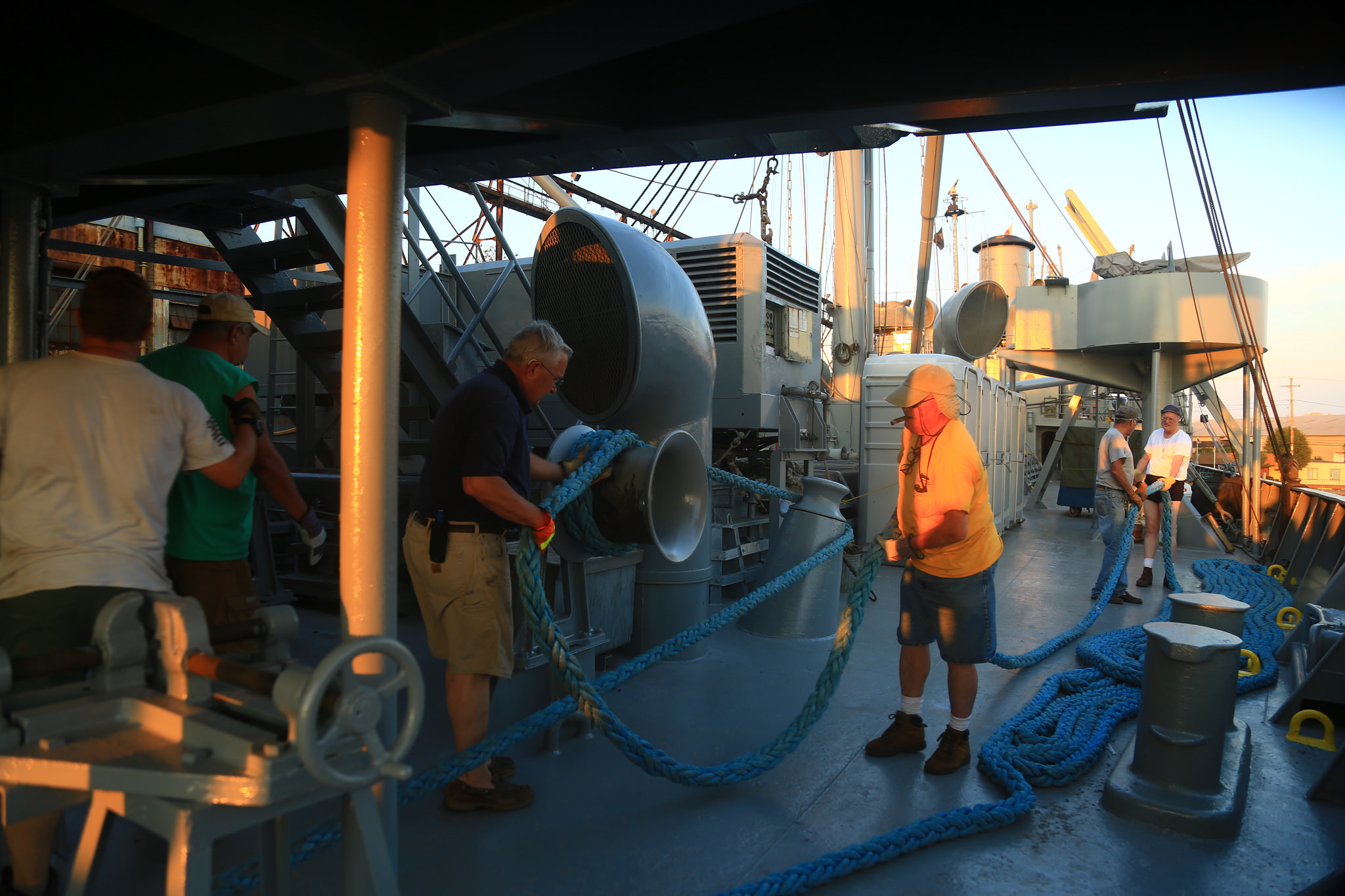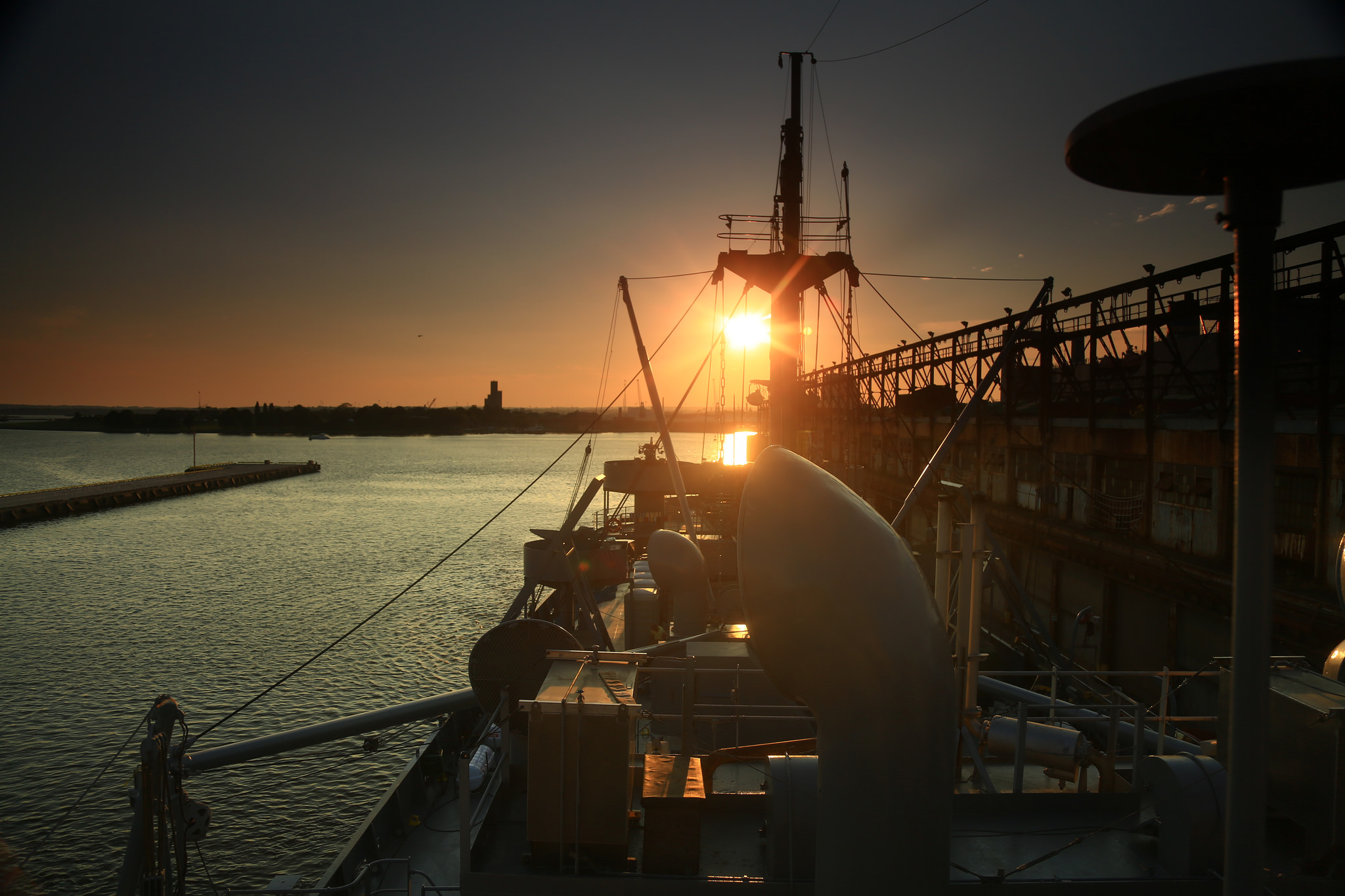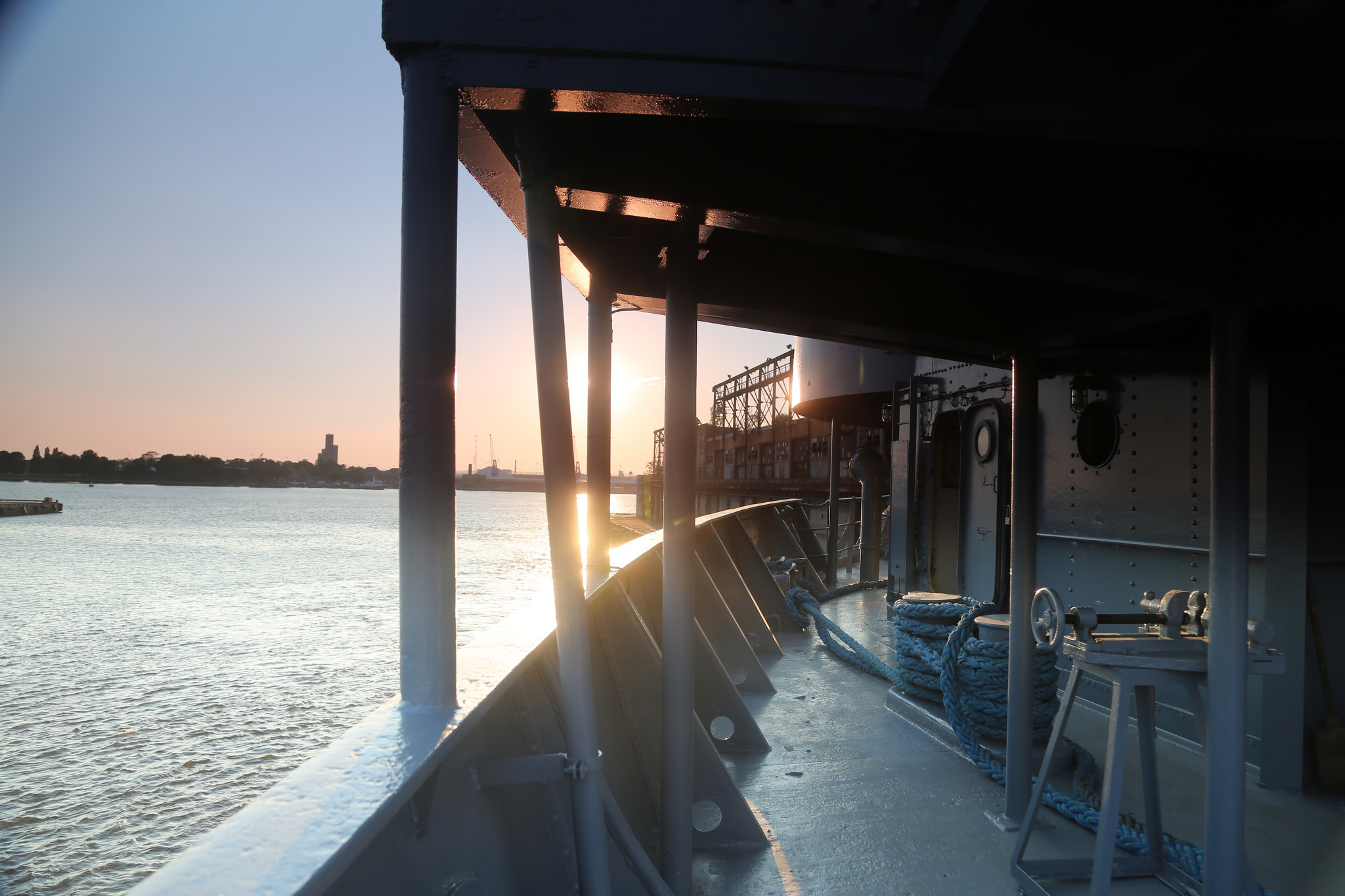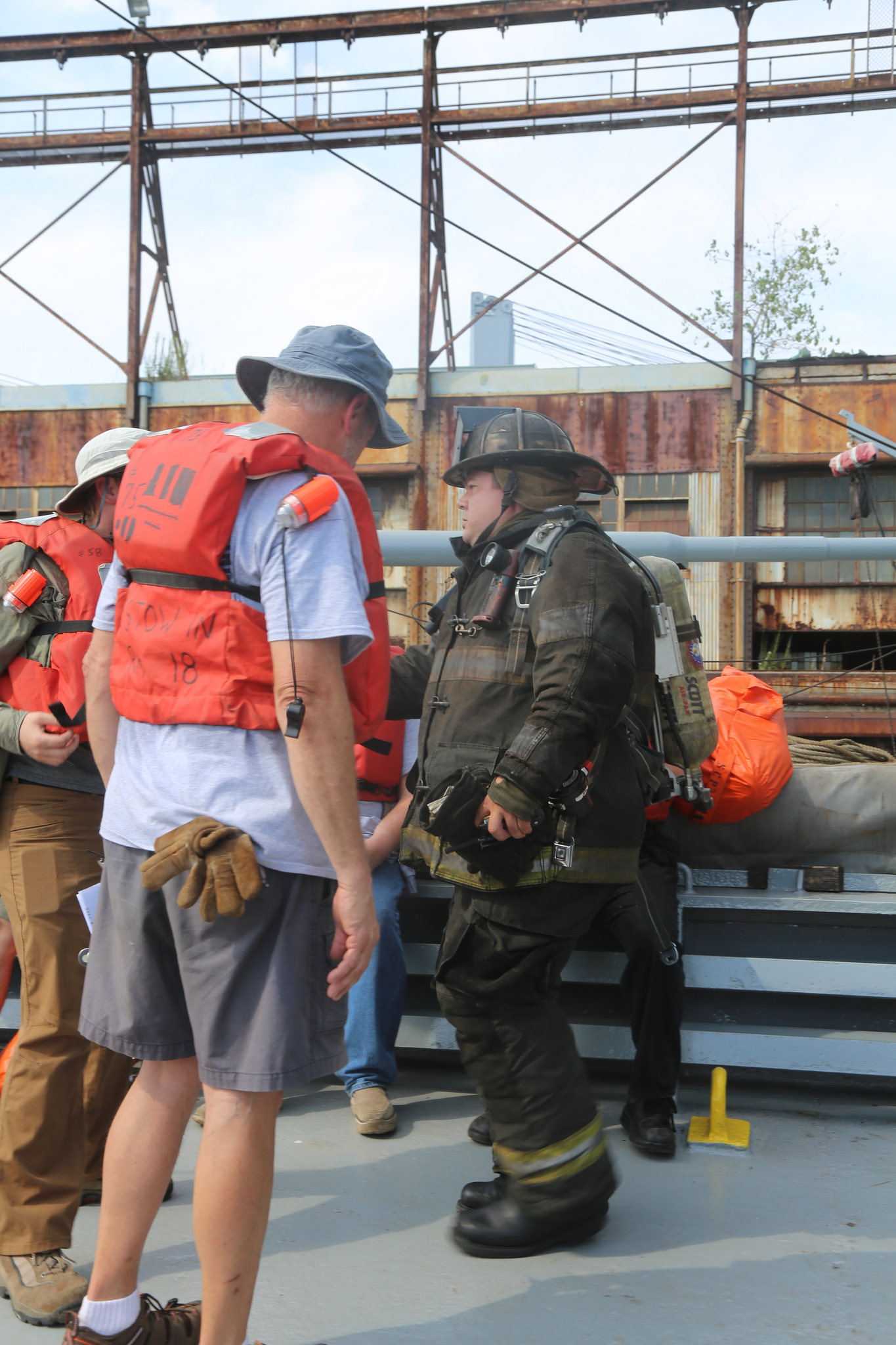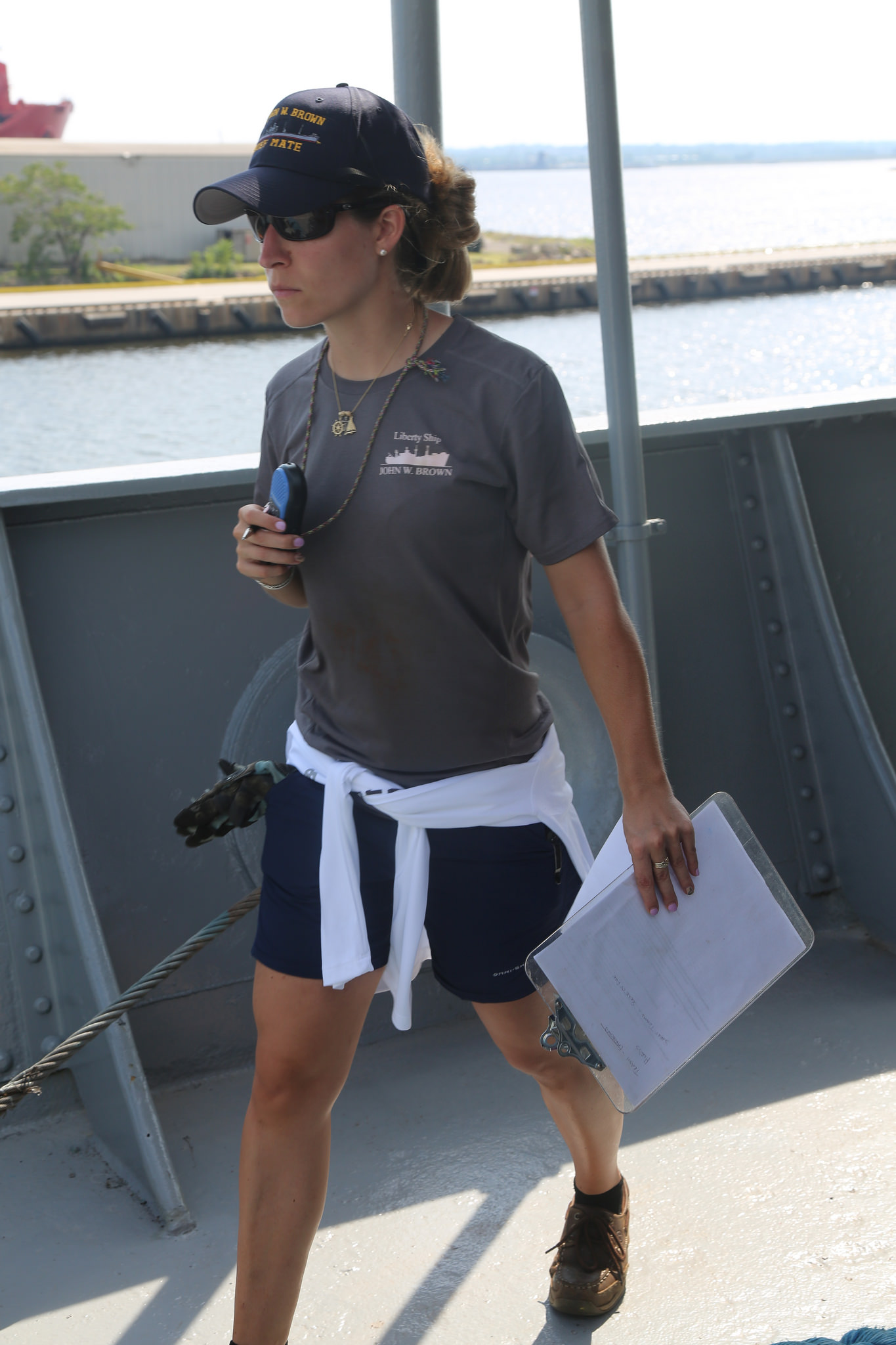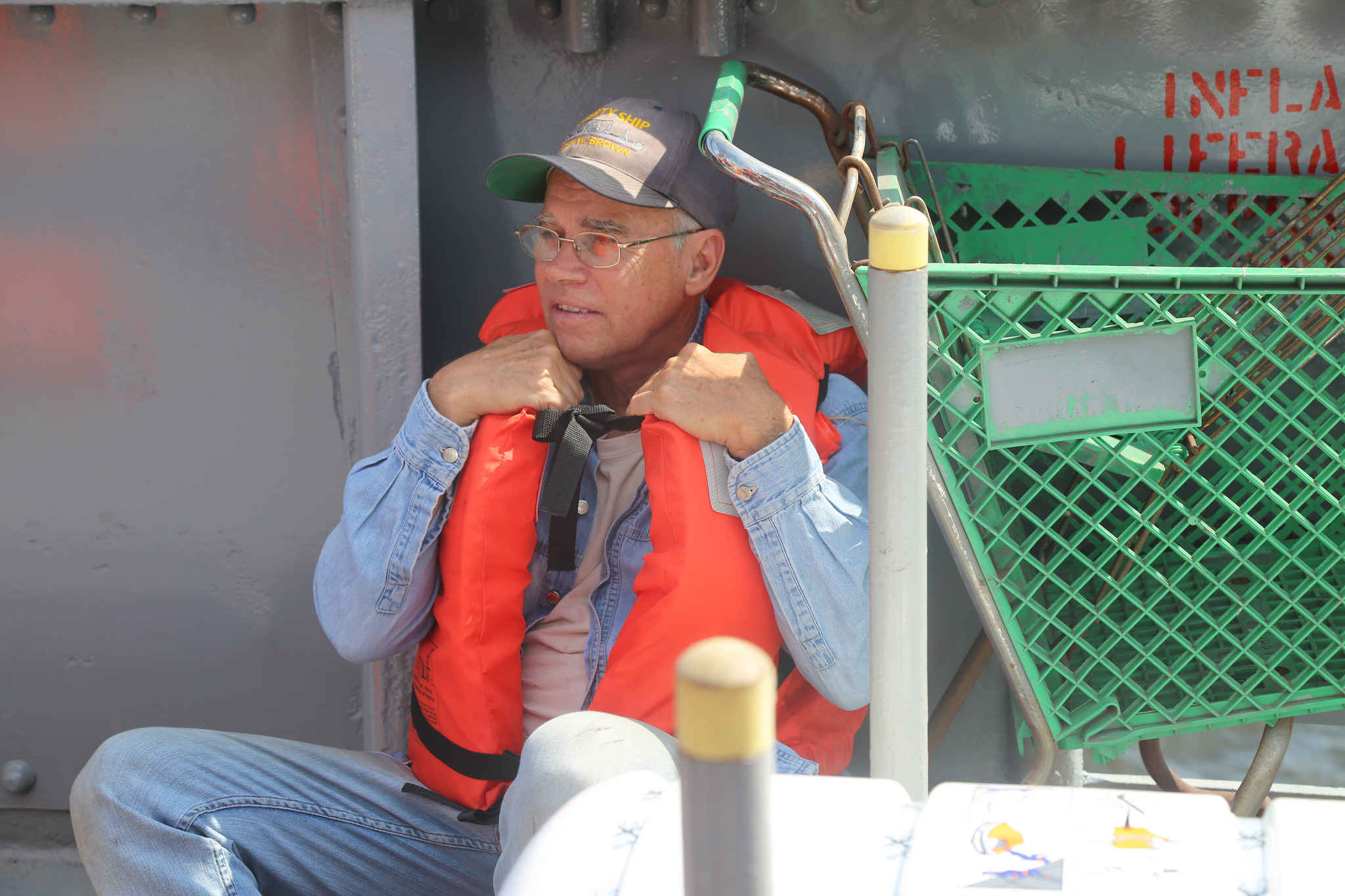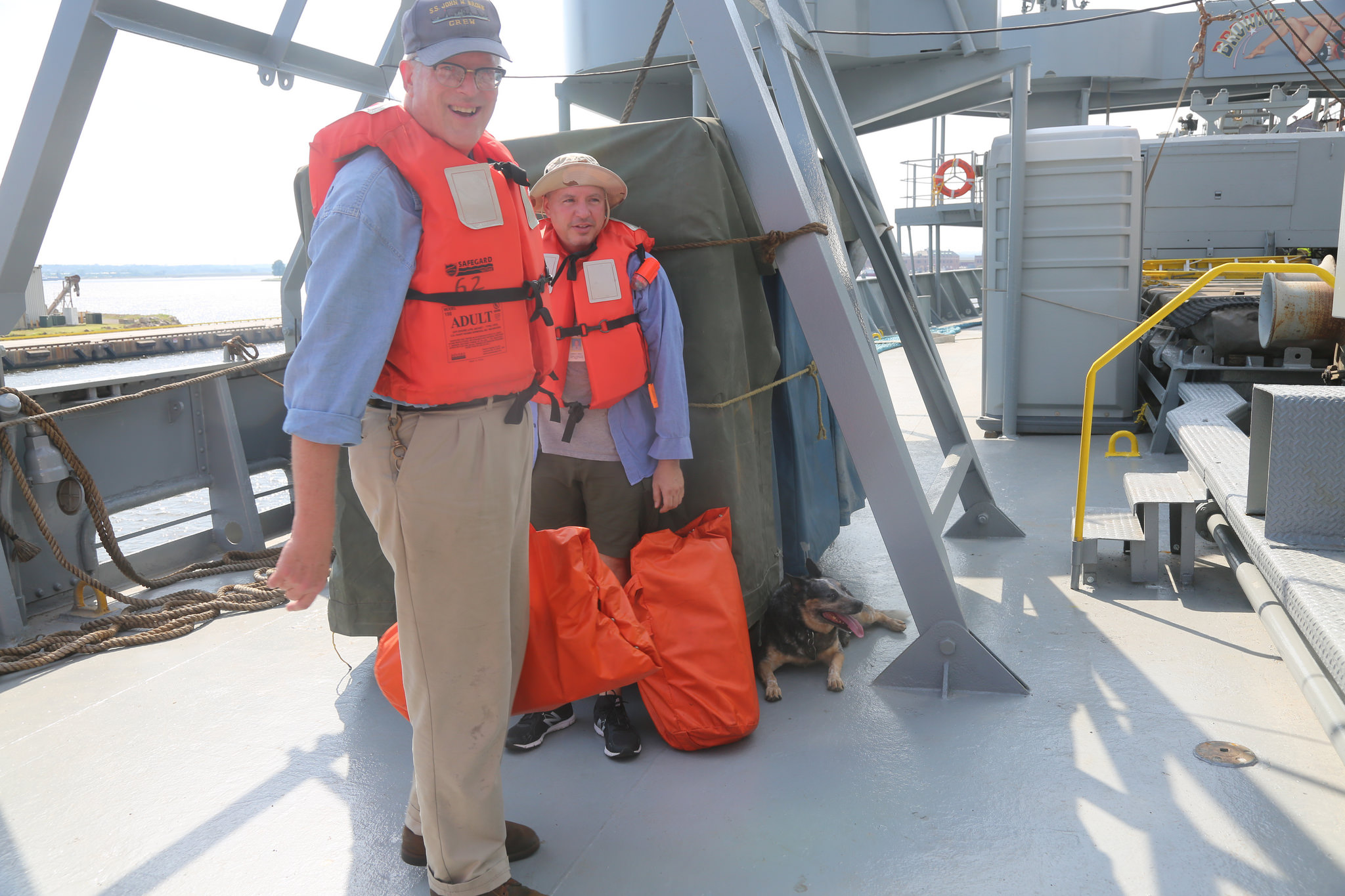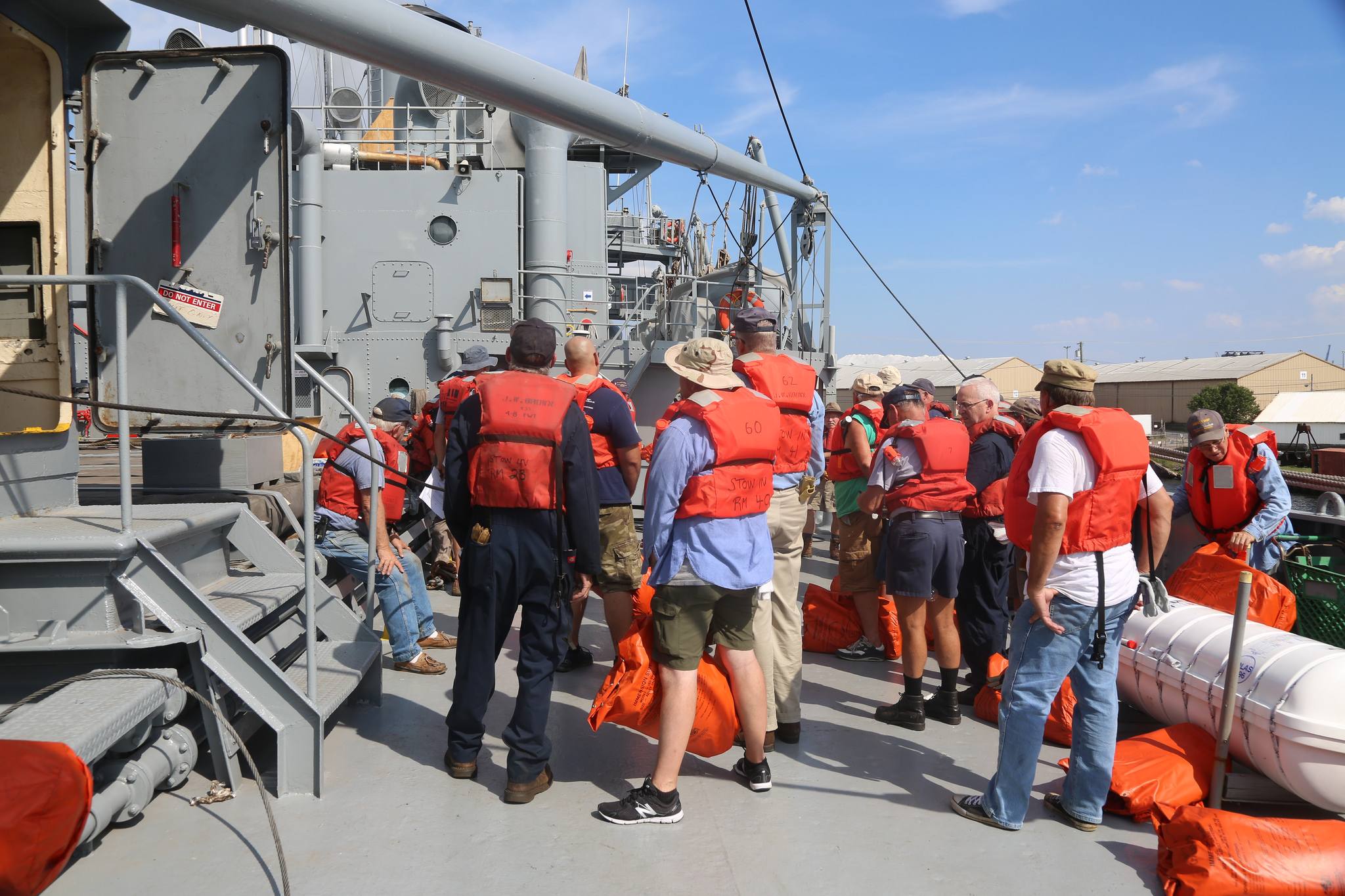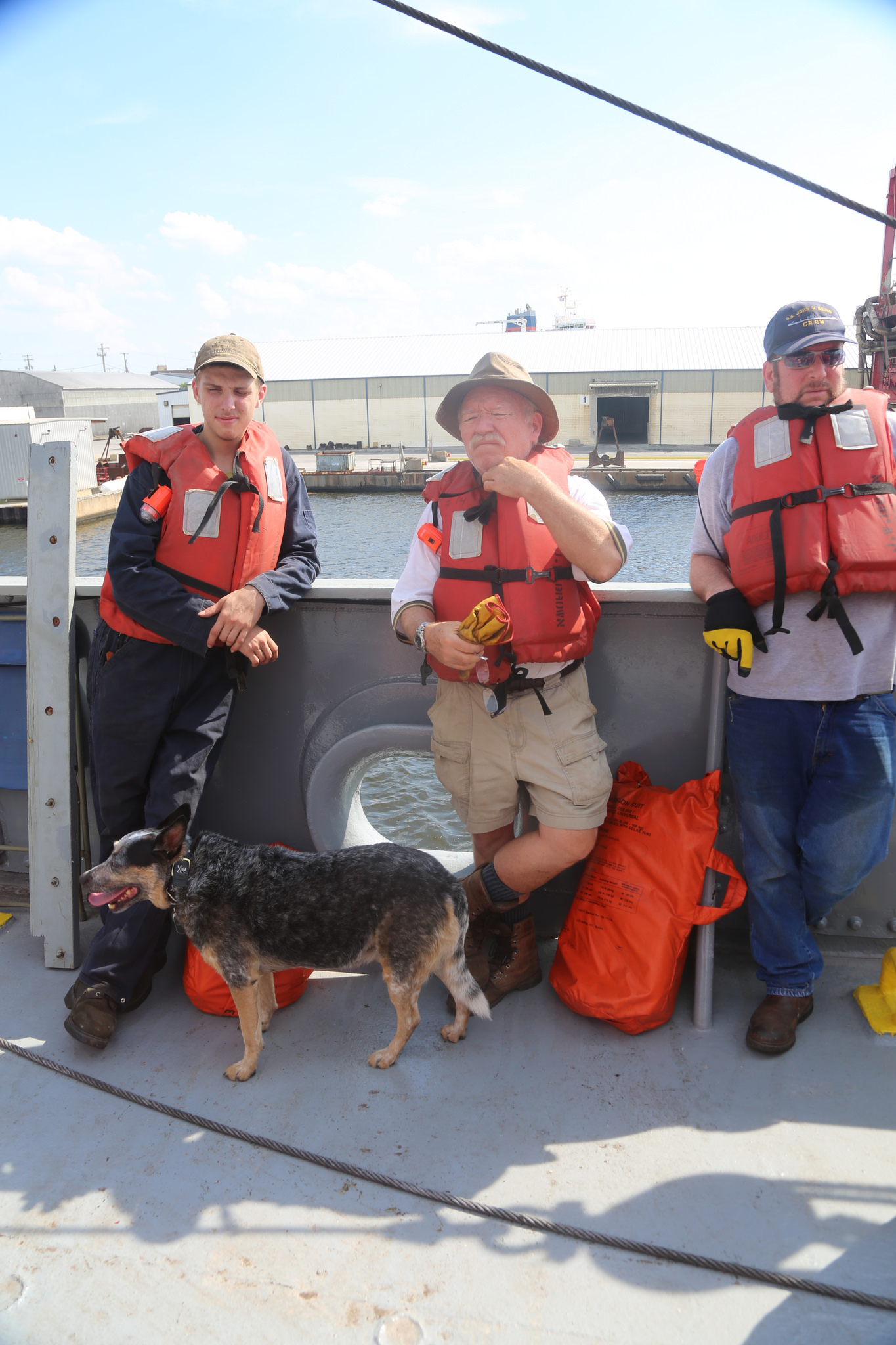The JOHN W. BROWN was built with the express purpose of going to war. She was part of the worldwide logistics effort to support the United States and her allies. As an important part of the need to move men and material around the globe, merchant ships became prime targets for our enemies.
The US began arming merchant ships with defensive armaments as an outgrowth of the Merchant Marine Act of 1936. This Act had many provisions but one allowed for the government to start designing and building ships which were intended, from the beginning, to have not only self-defense weapons but the structures, such as munitions magazines, increased electrical , fire fighting and mechanical systems needed to support them. The Liberty Ships were only one of the ship types which resulted from this effort.
The JOHN W. BROWN, was armed with increasing amounts of weaponry as the 2nd World War progressed. She originally had a 5 in. 51 caliber main gun on the gun deck aft as her principal defense against enemy vessels. The 5 in. 51 caliber gun was developed sometime between the Spanish-American War and World War I and was intended for action against surface vessels. She also had anti-aircraft weapons which increased in number when she was designated for the Mediterranean theater, following the conversion to a partial troop transport.
When the JOHN W. BROWN came to Baltimore in 1988 it was decided to find a weapon to place on the after gun deck to further the appearance of the ship as a WWII memorial. The major problem was that 5 in. 51 caliber guns had become incredibly rare. As a result a more modern weapon, a 5 in. 38 caliber, dual purpose gun, was found in the Reading Penn. Naval Reserve Center and it was in search of a new home!
This gun mount was trucked to Baltimore and lifted onboard in the early 1990’s. This type of gun was shipped on many wartime merchant vessels and was appropriate as a substitution for the JOHN W. BROWN’s unobtainable vintage gun.
An interesting part of naval weapons systems is that they are never given away but loaned to an organization for display. Thus they always belong to the Navy and U.S. Government. We are required, by the loan agreement, to maintain and display the artifact in a dignified and useful manner. As part of this commitment we have spent some of our recently awarded matching grant funds on renewing wasted steel on the gun mount deck. Every effort was made to preserve original parts where possible and reproduce material and instillation processes when necessary.
Not only has the crew and our young weapons “Czar” Cameron M. been removing, restoring and repairing parts of the gun in conjunction with the steel work but they have started a major effort to repaint the gun and return it to pristine condition.
We welcomed some help from an interesting quarter. Young sailors, fresh out of “Boot Camp” and continuing their naval education as Public Information Officers, while at school at Fort Meade, volunteered to spend a day helping with anything we need assistance with. It seemed fitting that they should, in the spirit of the Naval Armed Guard, help with the weapons restoration and other associated displays. Bob Jackson and Cameron welcomed the group, gave them a tour of the ship and put them to work returning the 3 in. 50 caliber rounds to the ready service boxes on the upper gun deck, cleaning the M1 Garands, as well as lending a hand with the work on the 5 in. 38 caliber main gun. In the spirit of our motto “if you feed them, they will come” Bob provided lunch for this group of newly minted sailors as his way of thanking them not only for giving us a hand but for their service to the nation.
Soon the JOHN W. BROWN’s major defensive artifact will once again be ready for the public. There is even talk of making a canvas cover in order to protect the gun from the weather during the winter. But Cameron, Bob and the rest of the weapons gang won’t be idle long, there are three 3 in 50 caliber guns waiting for their time to shine.
Project Liberty Ship, Inc is a 501(c)3 non-profit, all volunteer organization engaged in the preservation and operation of the historic ship JOHN W. BROWN as a living memorial museum. Gifts to Project Liberty Ship are tax deductible.
